NAPLES Saturday September 14
After departing Nice I arrive late night or should I say early morning to check in at Star Terminus Hotel P.za Giuseppe Garibaldi, 9.
Waking up to glorious weather on Sunday morning. After a light breakfast I headed out for a self guided 2 hour walking tour. As the city wakes cafes and all sorts of sales, shops and hawkers display their wares. The streets like much of old Europe cobblestone and paved. Amazing cathedrals open up behind unassuming doors and walls. Soccer star, Maradonna is a legend of this city, with shops and alley ways dedicated to him. Some say the hierarchy is a saint, god then comes Maradonna.
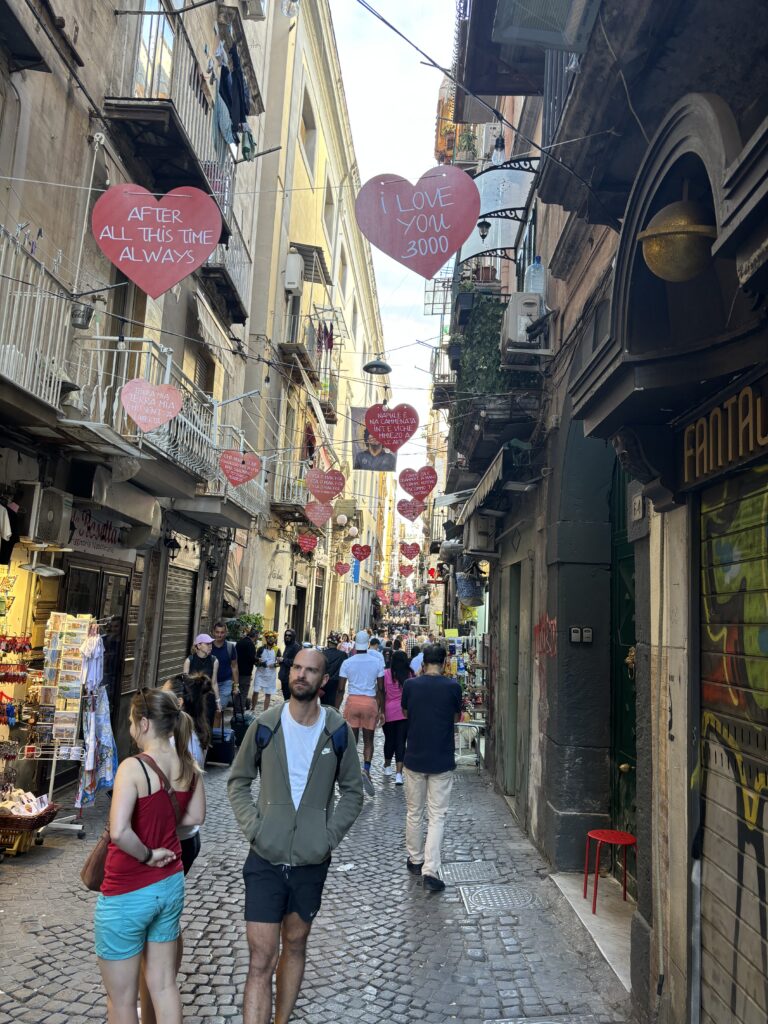
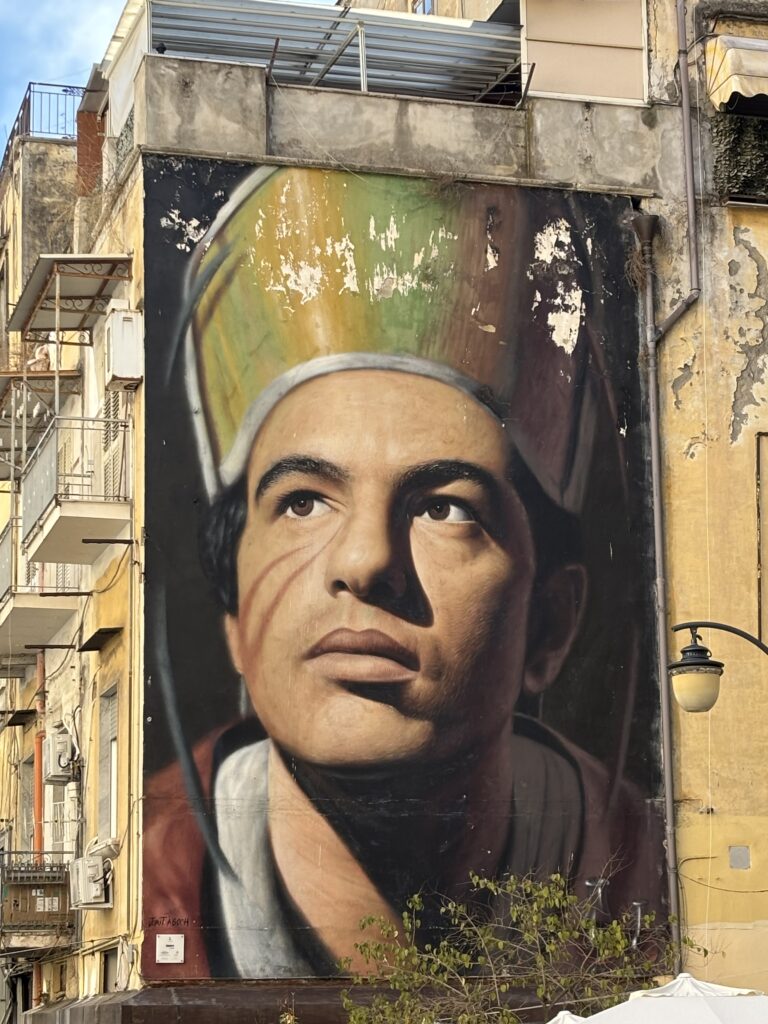
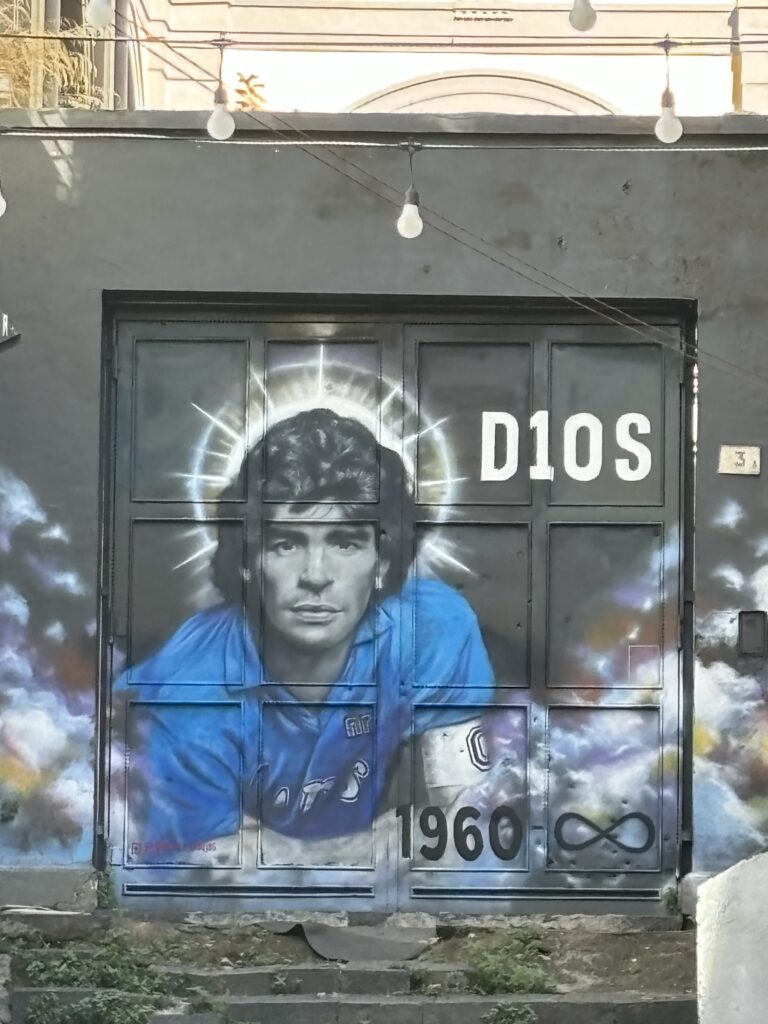
The tallest building in Naples still acknowledges Diego Maradonna.
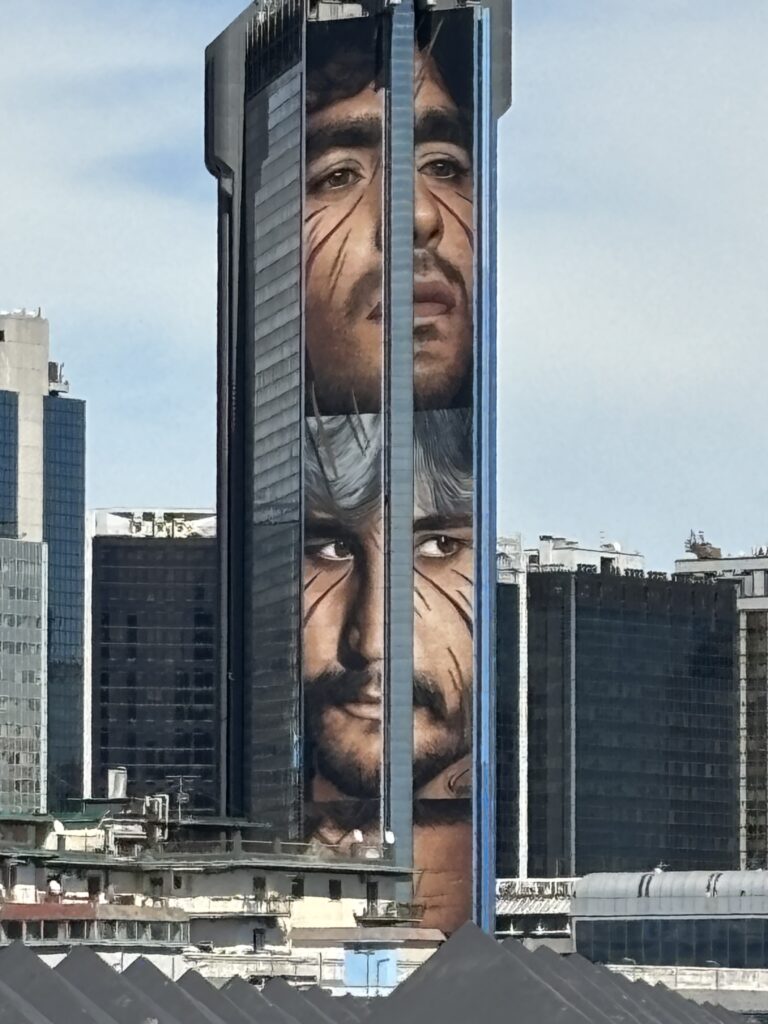
Cathedrals we have a few, many containing amazing art works on the ceilings.
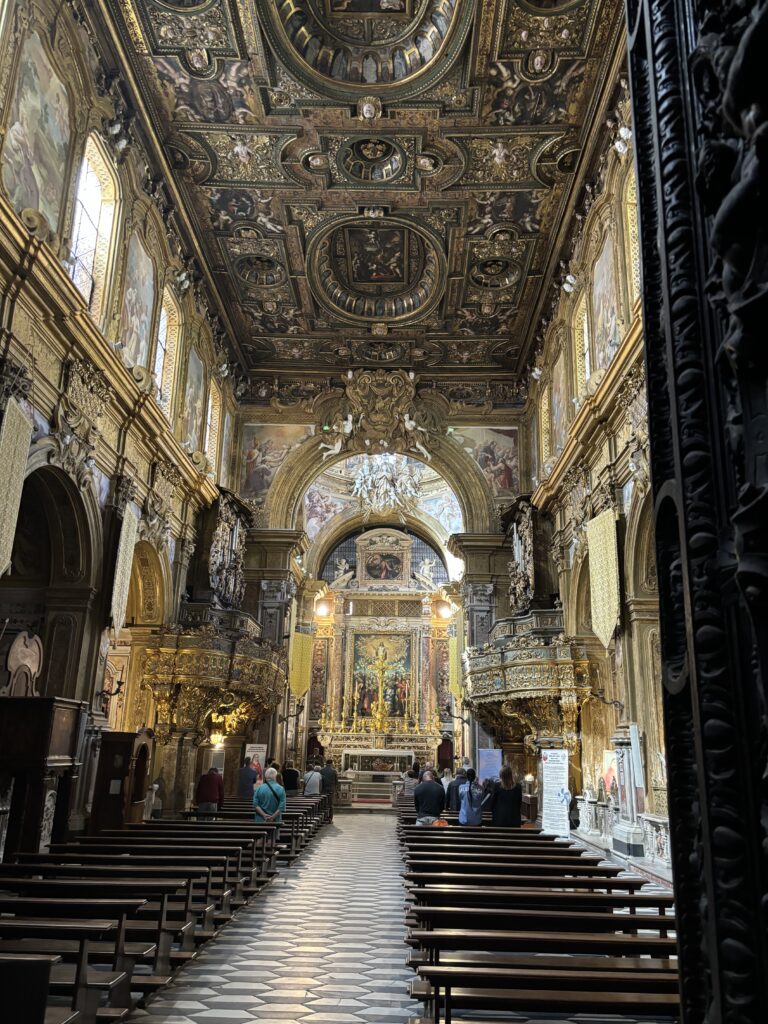
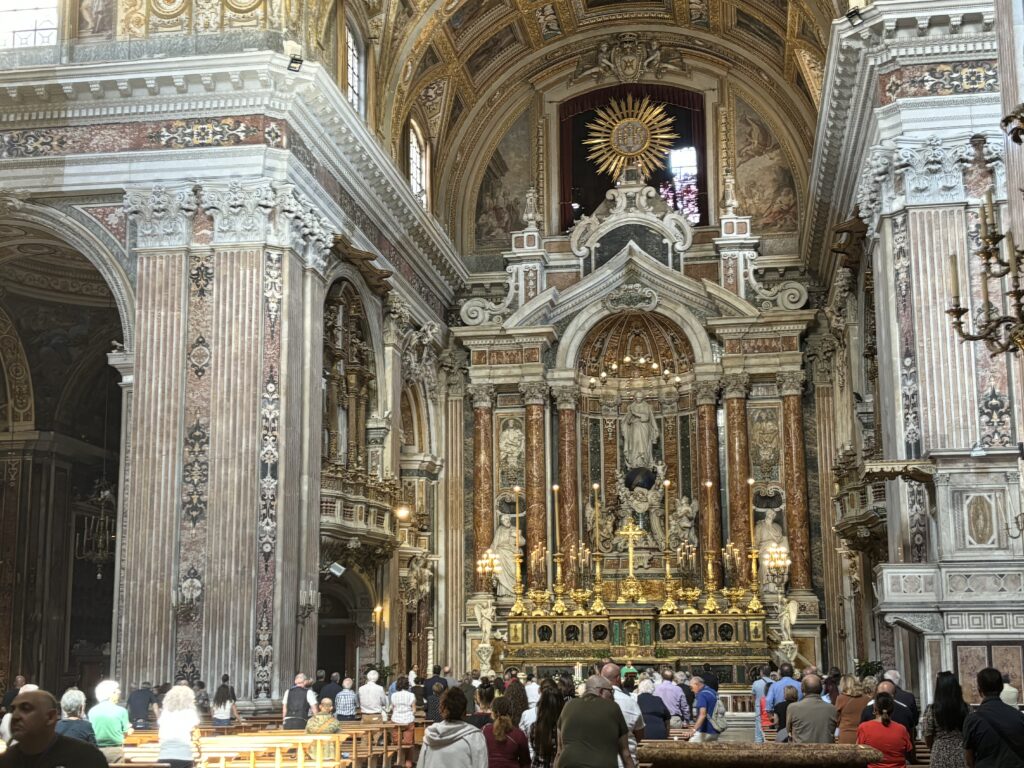
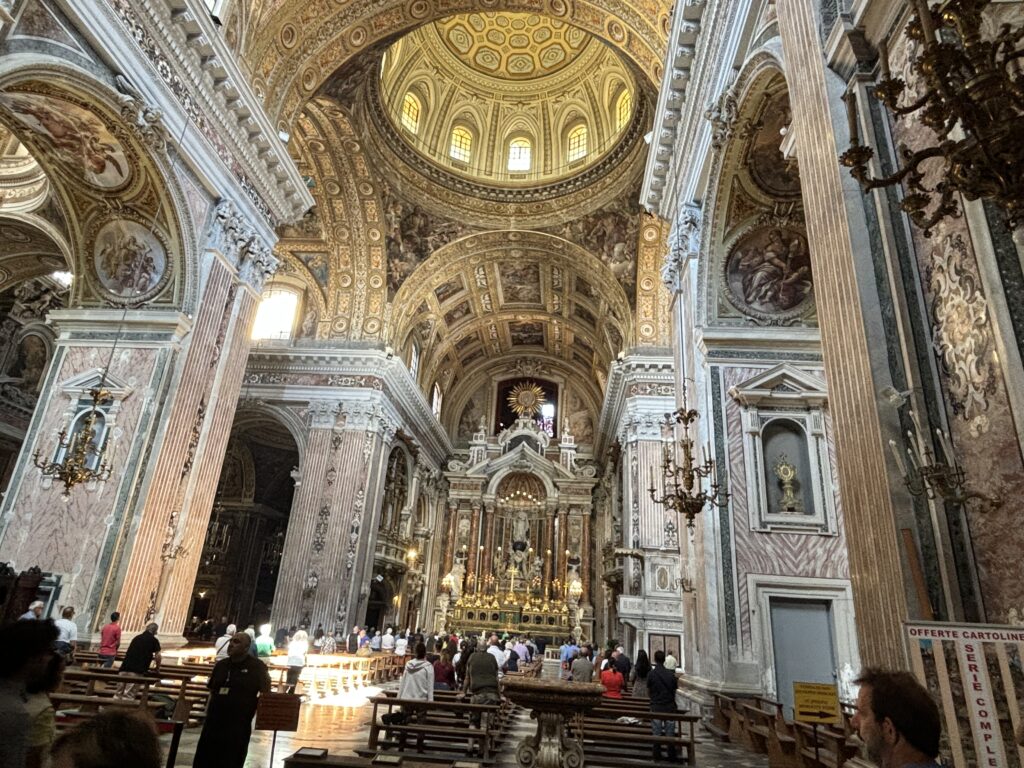
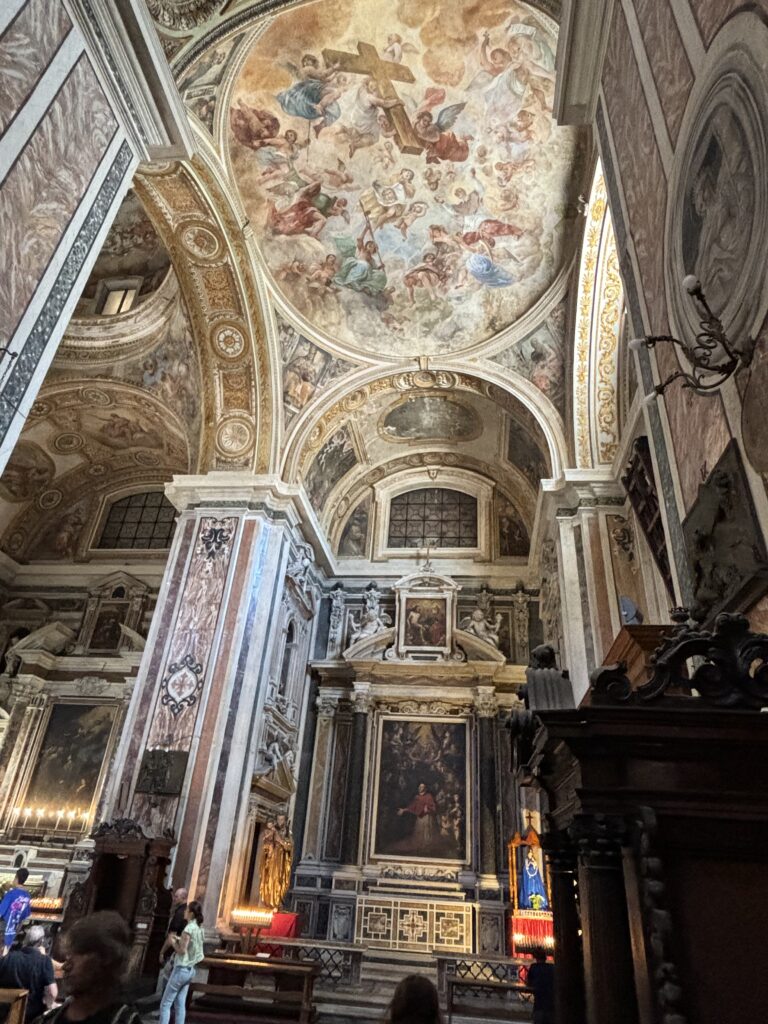
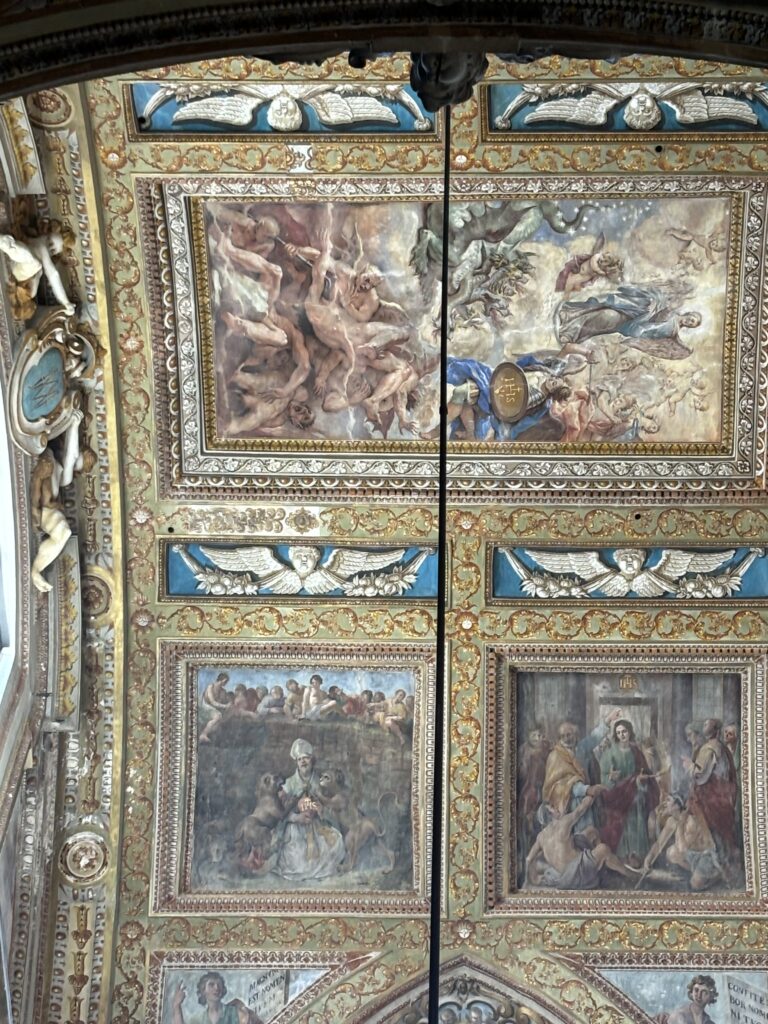
The alley ways that dot this area of the city make for great exploring.
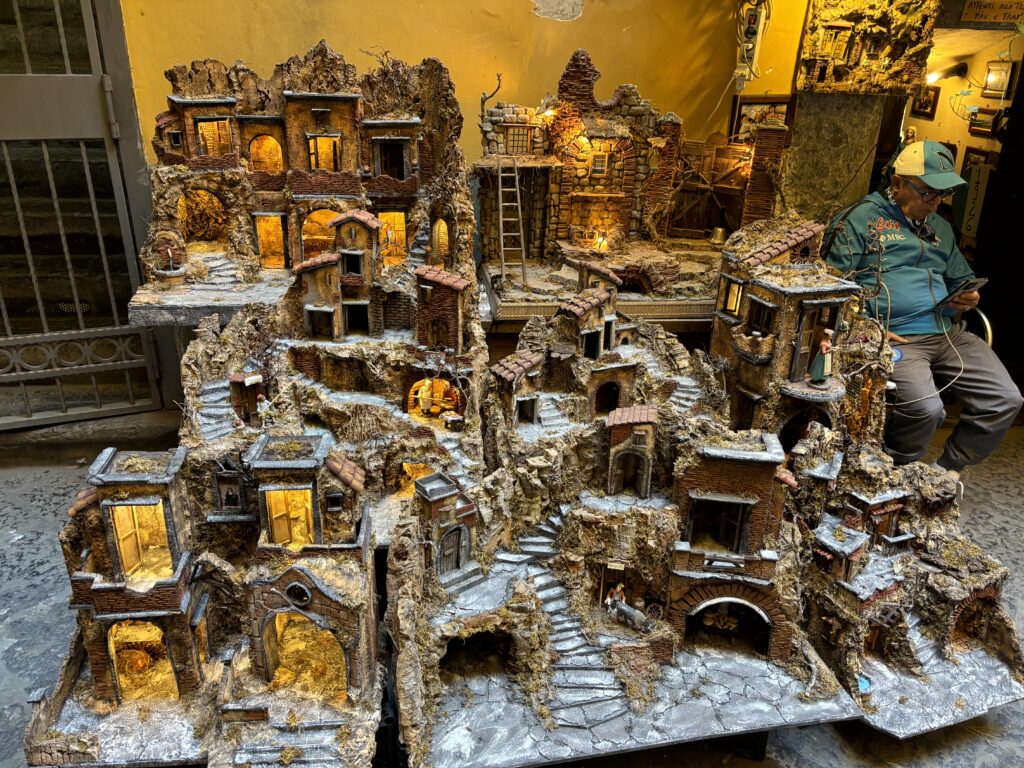
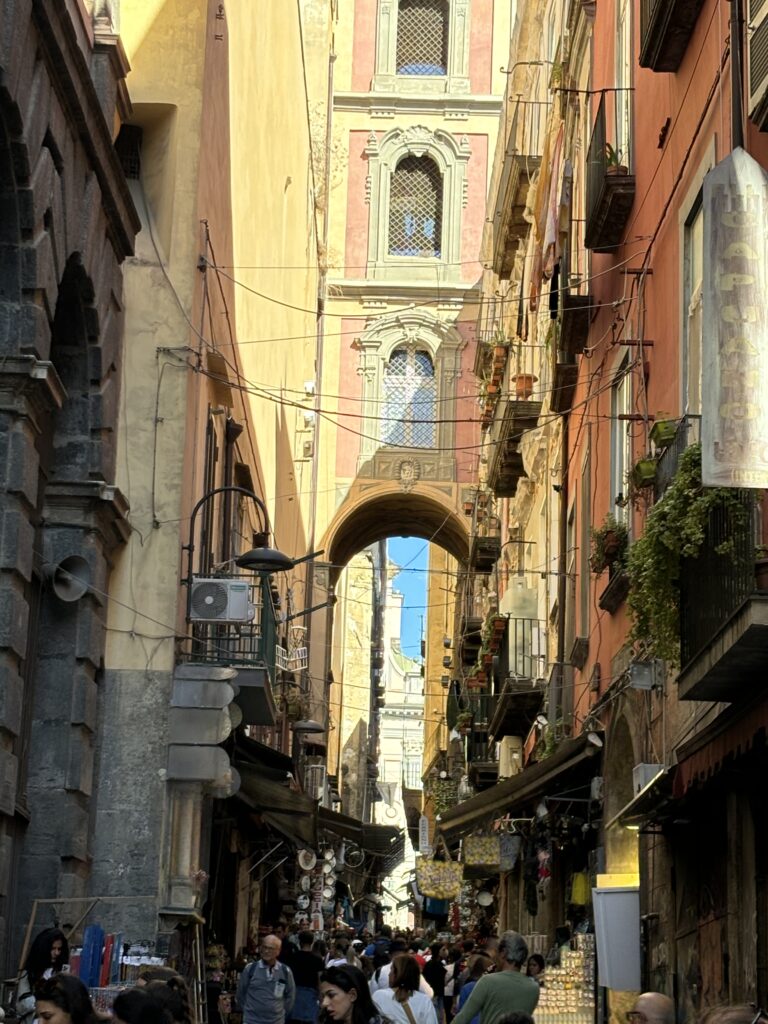
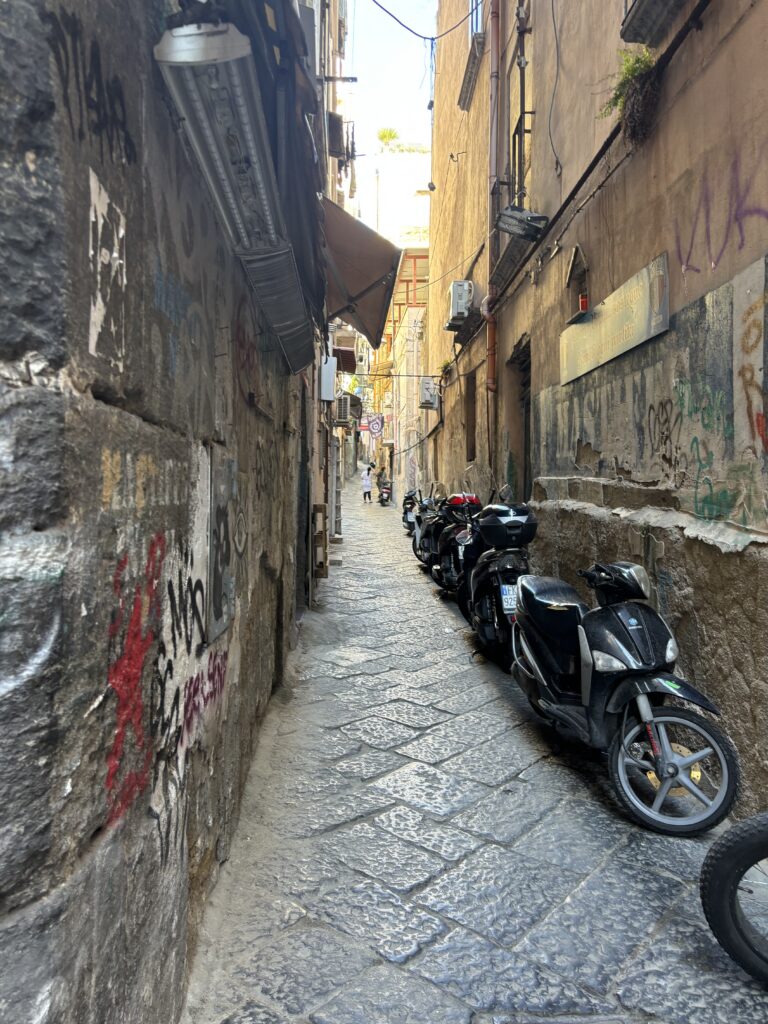
At 2:45 today I joined up with our tour group as we head out for a street food tasting tour. We caught the underground to Toledo, a central hub in the history and gastronomy of Naples. We met our guide Aldo who was passionate and knowledgeable about his city. Among food stops he also outlined the history of the city from the past 3 thousand years. As a local, he considers their food produce superior to all of Italy due to the rich volcanic soil upon which their vegetables are grown.
This is our group with Aldo wearing his blue cap, a typical food alley and our first drink. Mini pizzas accompanied our beverage, a limoncello spritz.
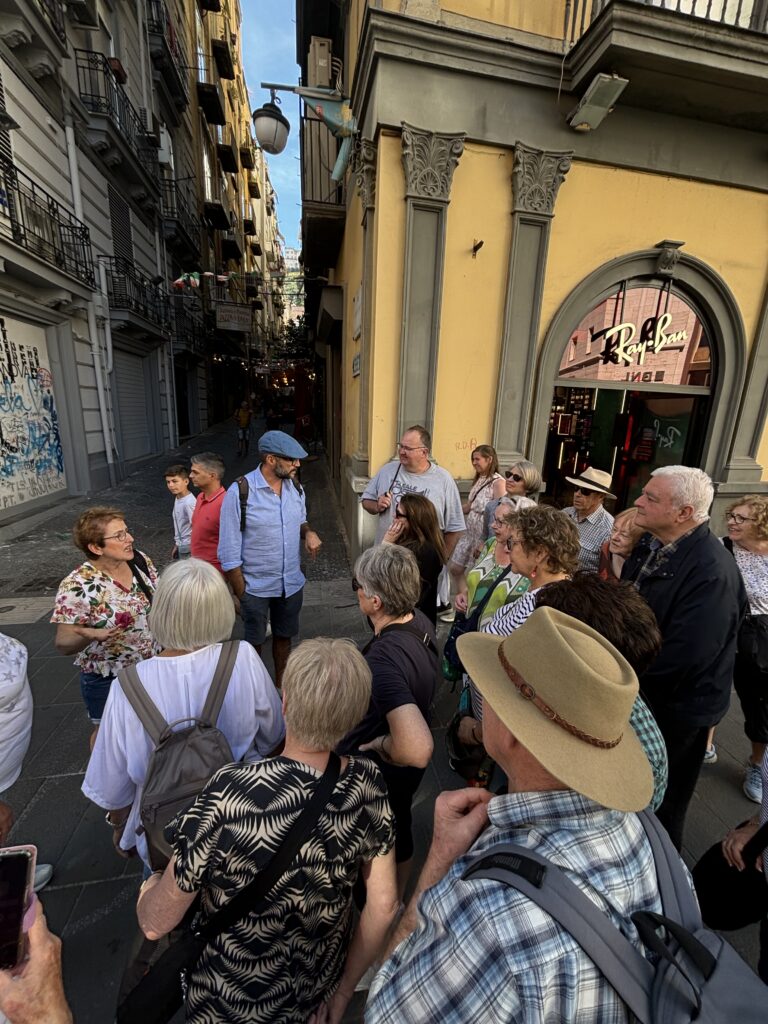
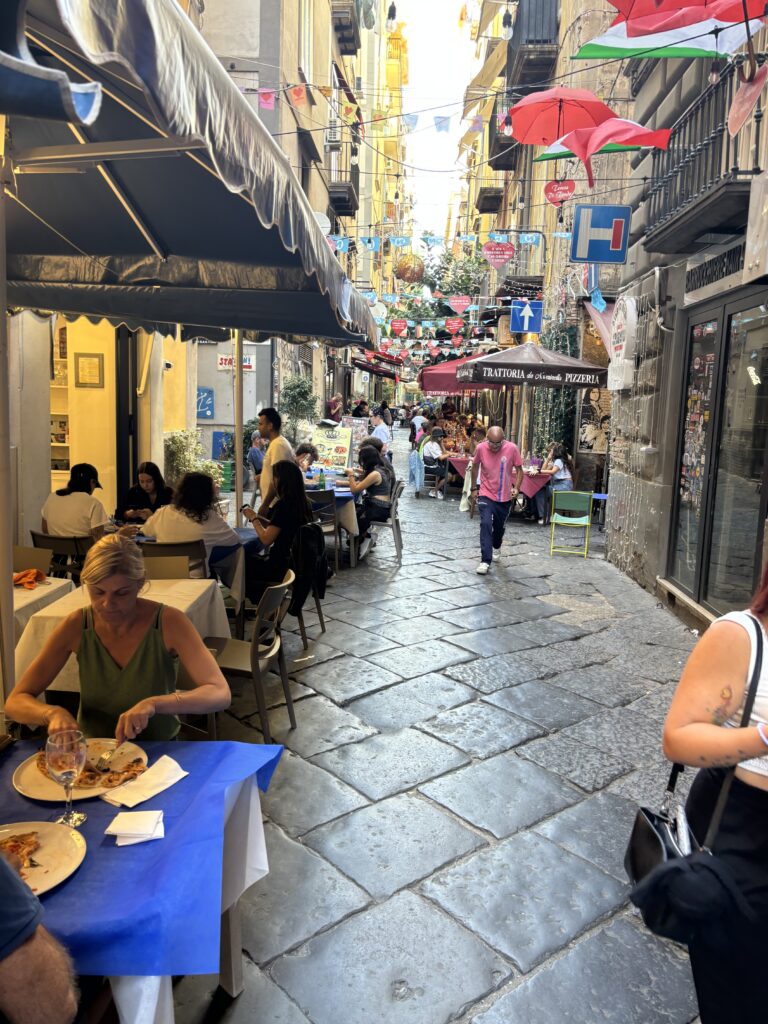
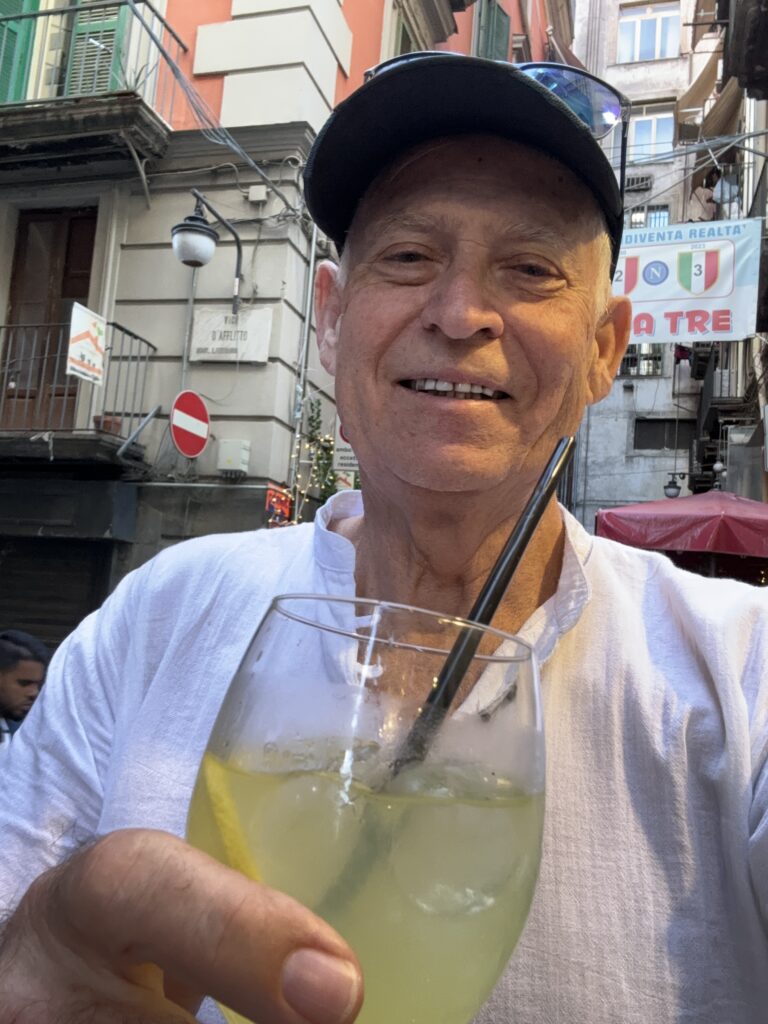
Some interesting facts. The first pizzas were made in Naples (Napoli) in the late 1770’s with the first Margahrita made in 1899 to celebrate the arrival of the princess by that name. Interestingly he noted that the pizza colours white for the cheese, red for tomato and green for basil make up the colours of the Italian flag.
As a young man, “Pizza Napoli” was the go to pizza place in Northbridge, after a late night out or even to begin a late night. The association is now clear.
Gallery Umberto built between 1987 – 91 is a stunning marble construction. All walls, ceilings and floor are made of marble. A magnificent building certainly rivalling its namesake in Milan.
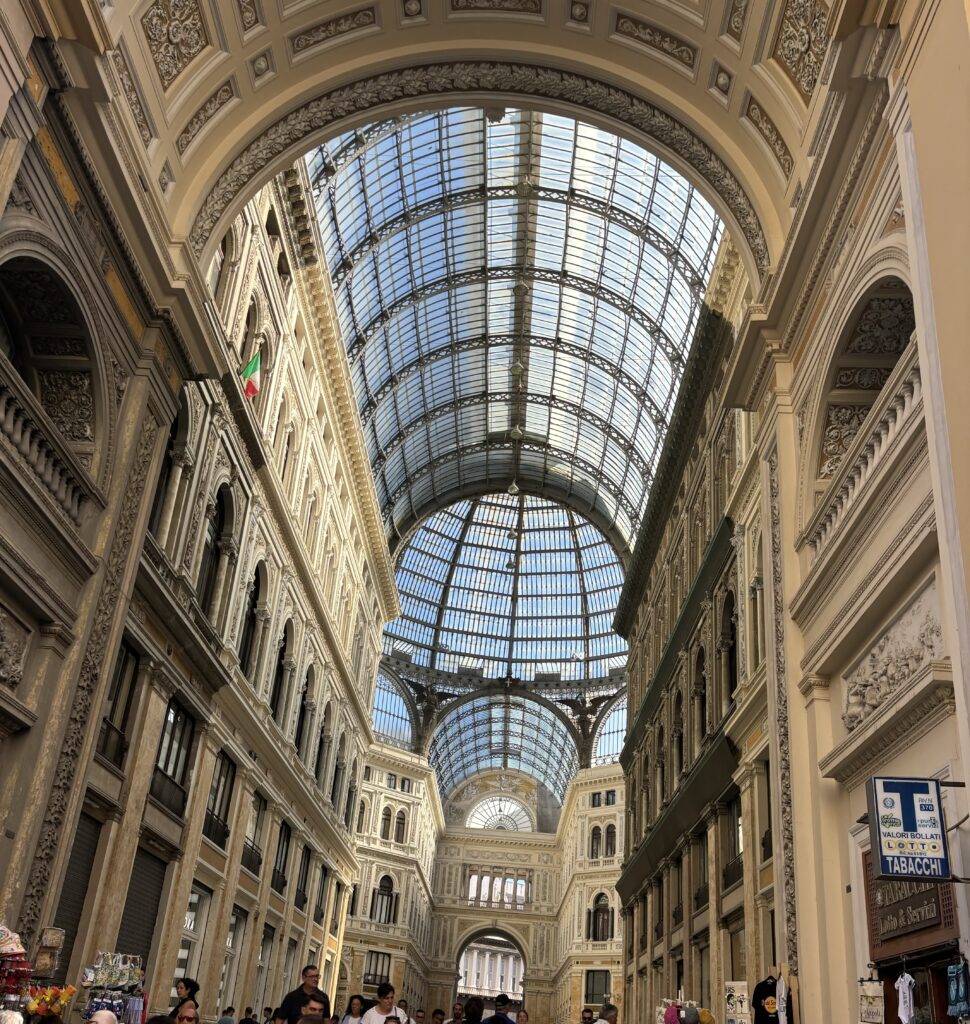

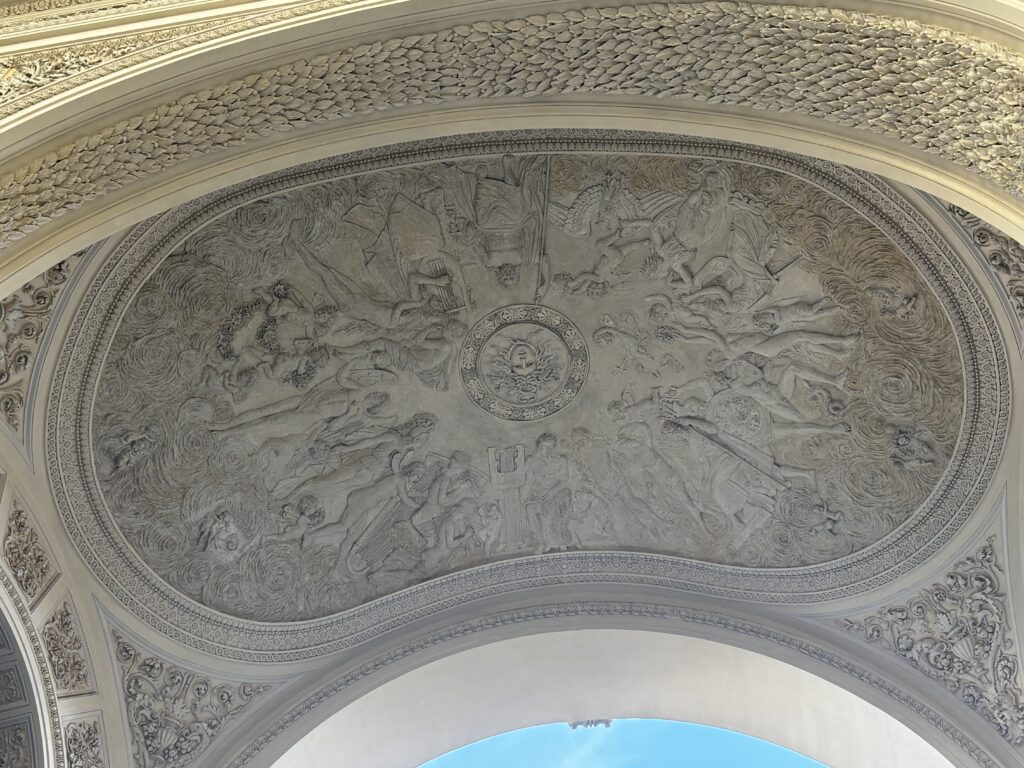
The photo on the right depicts the entrance ceiling with Medusa carved into the marble which is seen as “protection” for the complex.
We continue our journey moving through to the Presidential palace or Royal Palace as originally named. Built from 1600 onwards it consists of 1000 rooms with external monuments depicting the succession of rulers who proclaimed themselves king. It has since been converted in part, to a museum and also houses the oldest opera theatre in Italy the Theatre Di San Carlo. The red colour throughout is considered “Pompeii red” in acknowledgement of the nearby volcano.
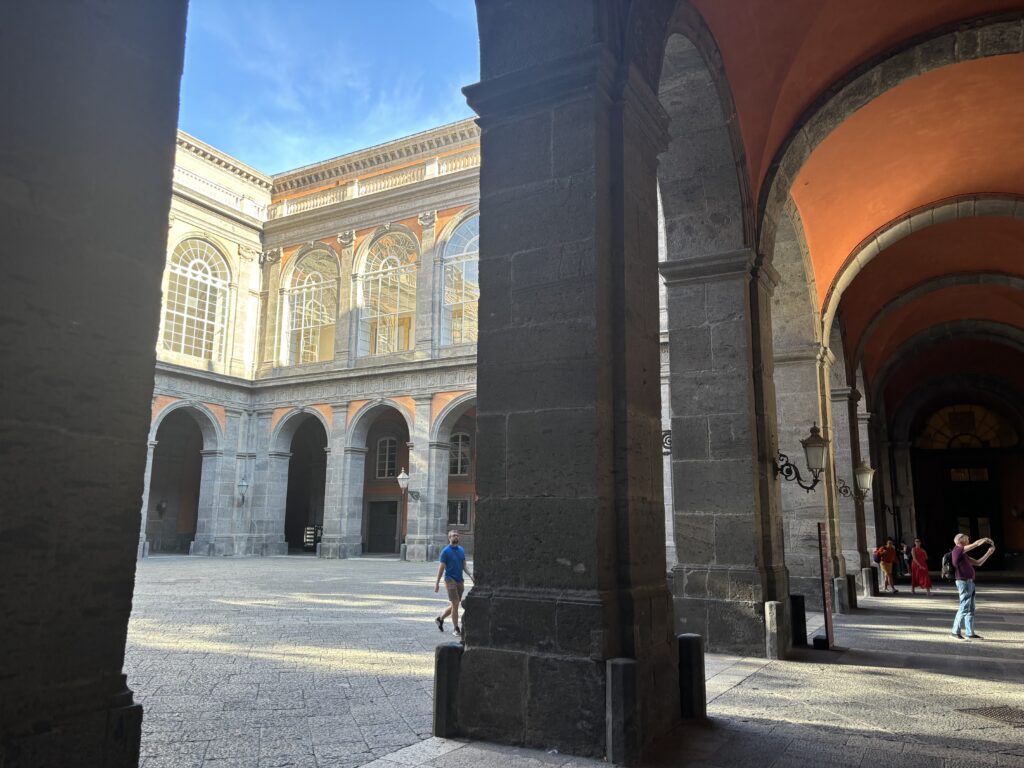
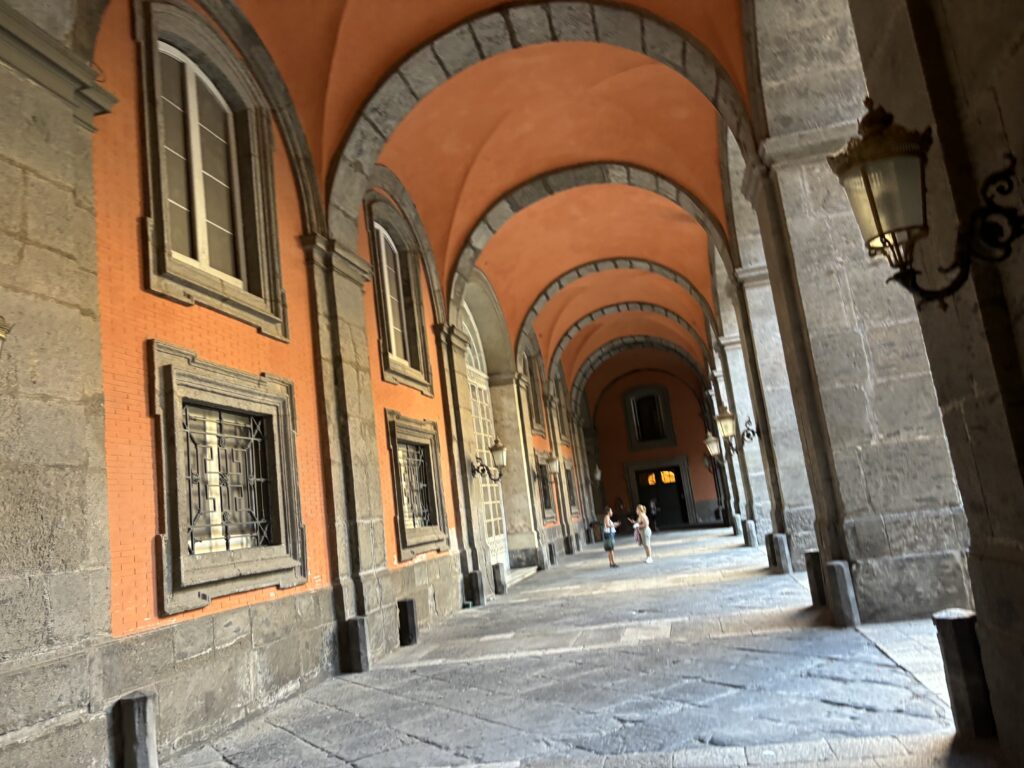
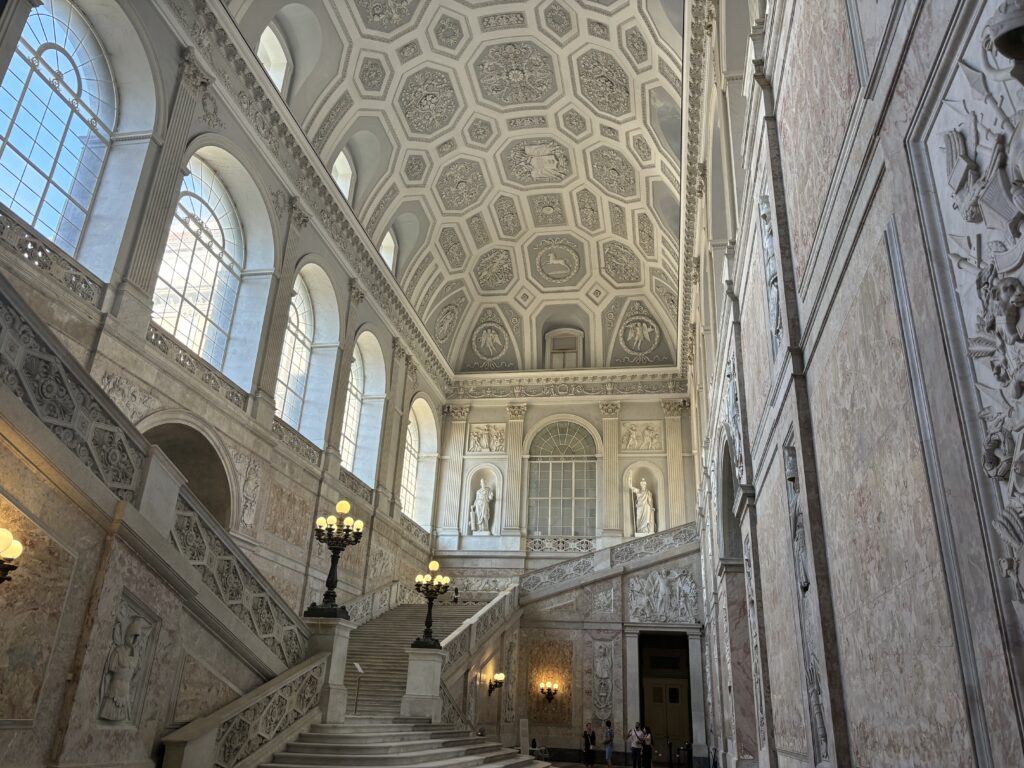
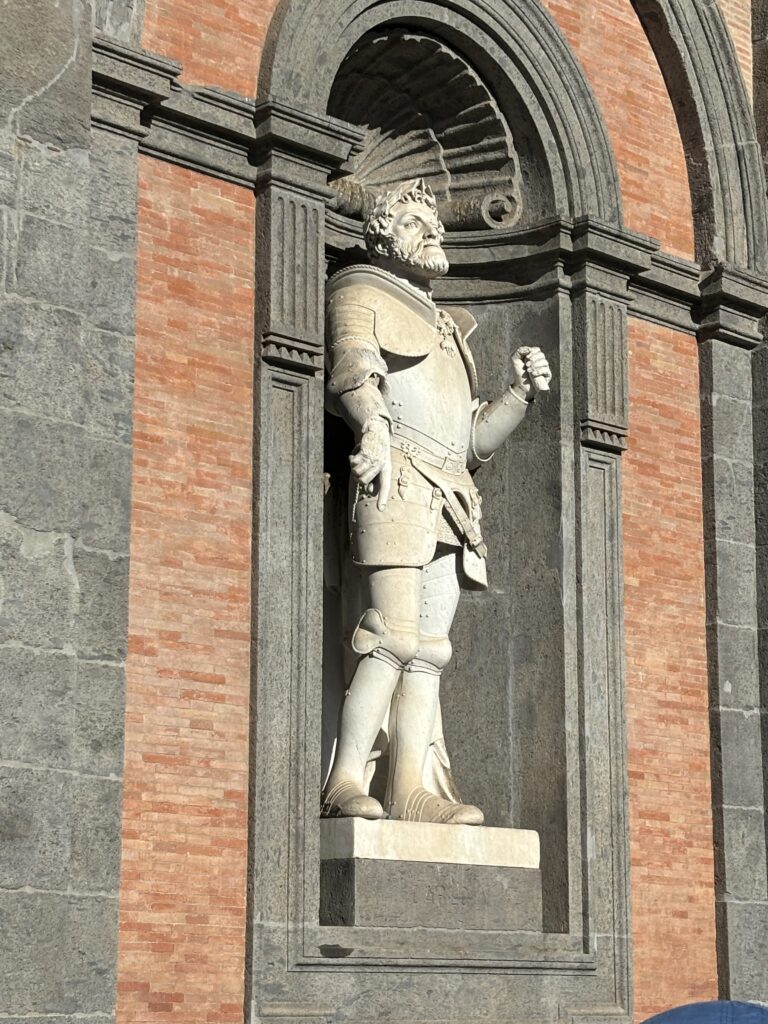
A food stop for a folded pizza and a beer.
Below is the bank used to house the wealth of “fascists” lead by Mussolini but since converted into a art gallery. The head of Titus, an early Roman emperor, dominates the entrance.
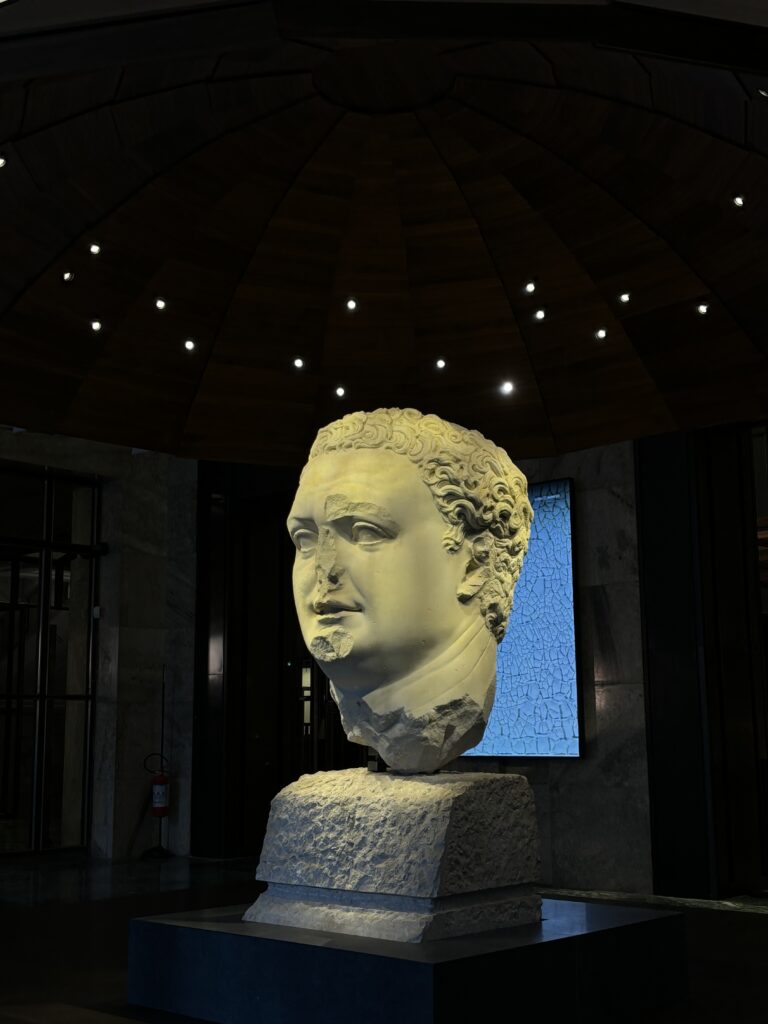
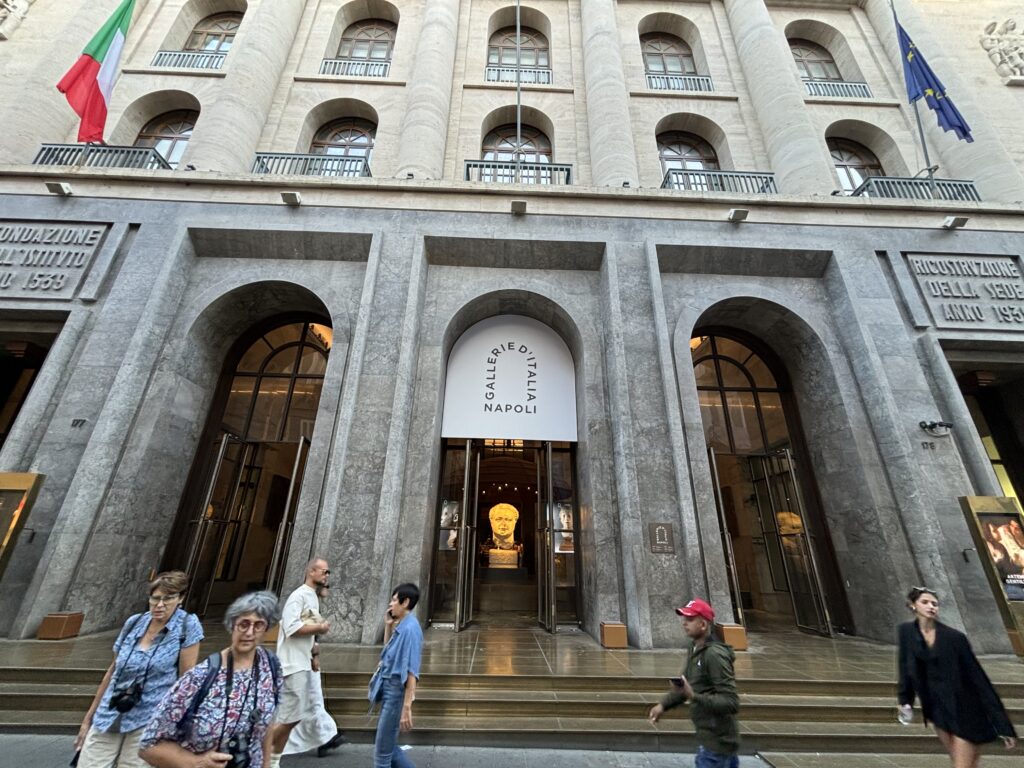
As our tour comes to an end one last look through the alley ways that adorn this city many with views to the background hills.
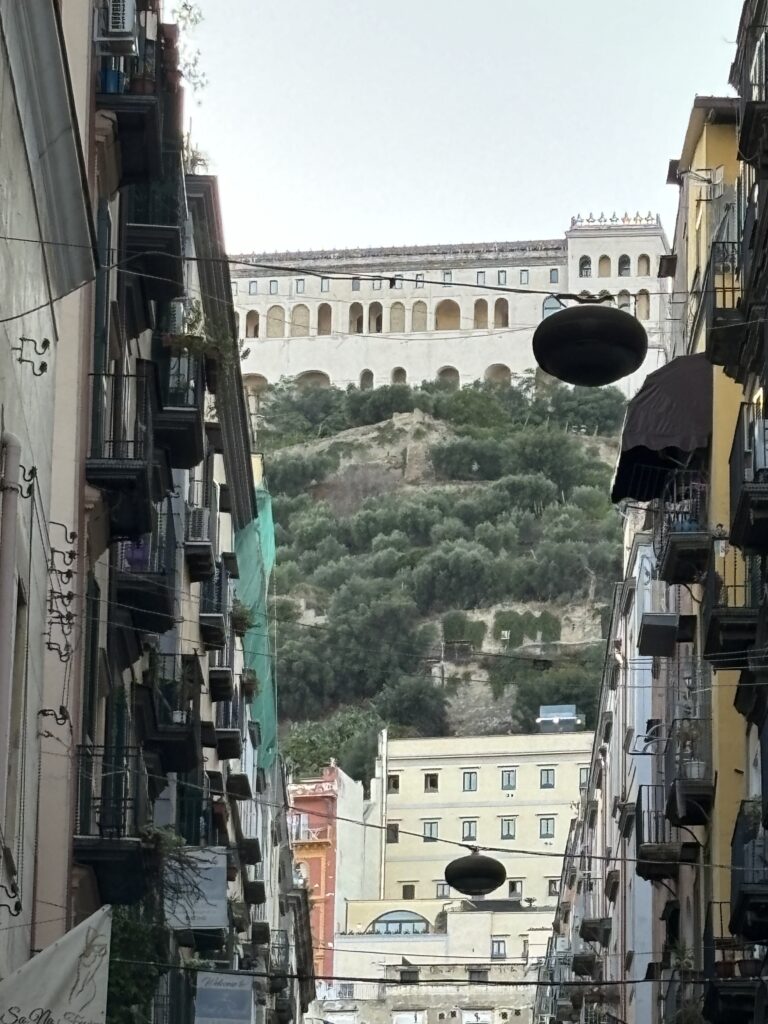
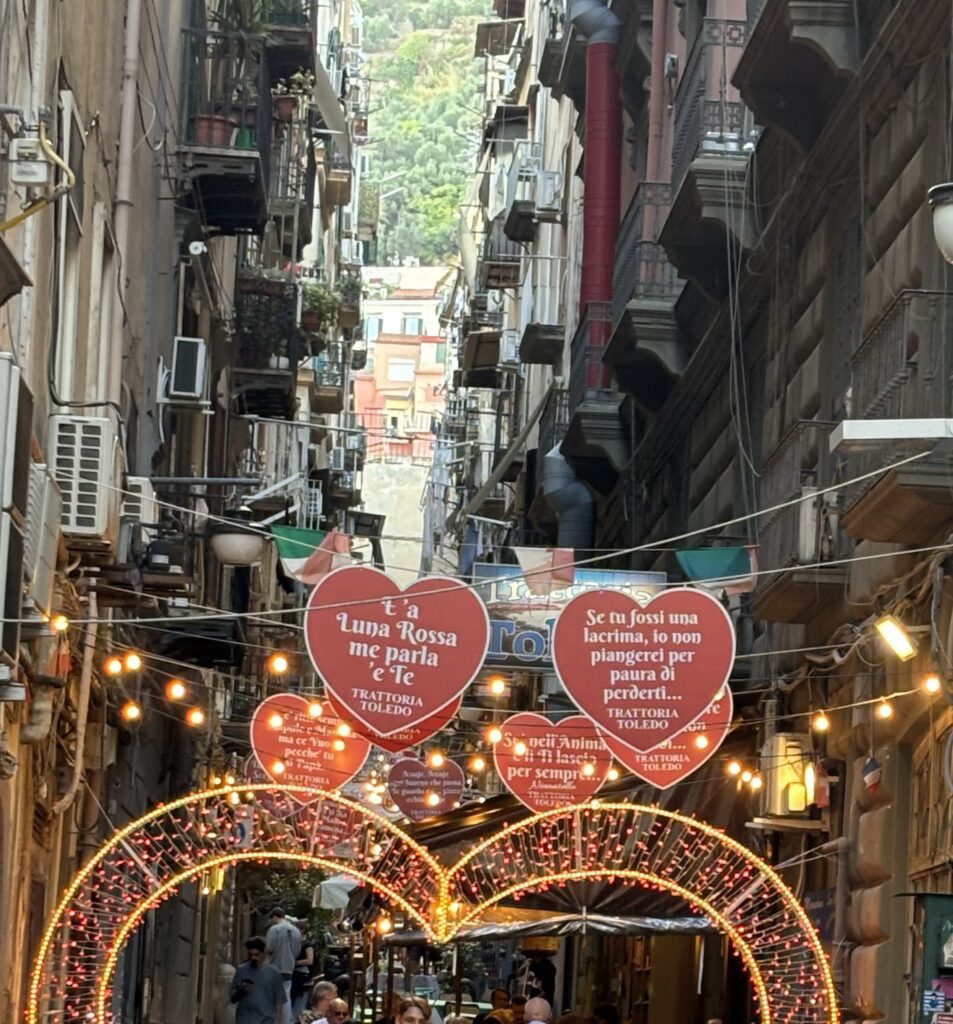
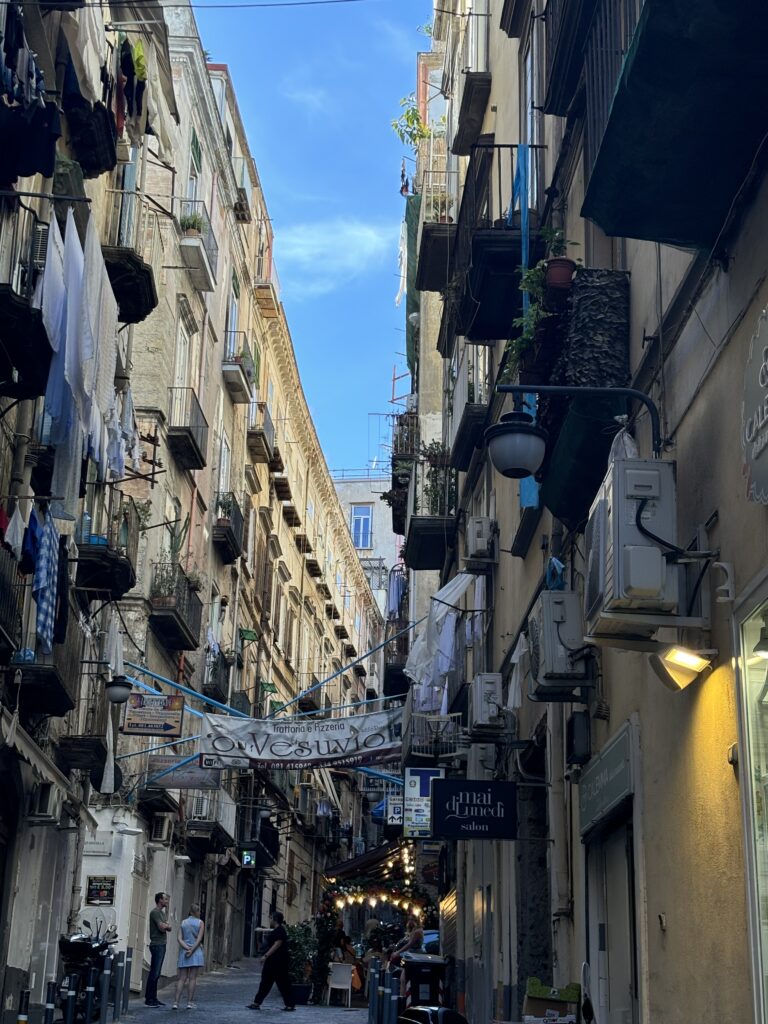
Monday September 16 marks the official first day of the tour with a welcome dinner, however an early morning half day tour to Pompeii begins the day. We meet our bus driver, Salvatore who likes to be called Salvo and we set off.
Against the backdrop of Mt Vesuvius the small city of Pompeii was established between one and two hundred years BC. A wealthy town with a population of between 10 000 and 2o 000. The city was buried under 15 to 20 feet of volcanic ash and pumice after Mt Vesuvius eruption in 79 AD. excavations began mid 1700s and continue to this day providing a unique snapshot of Roman life frozen in time. Private homes and lavish public buildings have since been uncovered and are on display for visitors as a UNESCO World Heritage site.

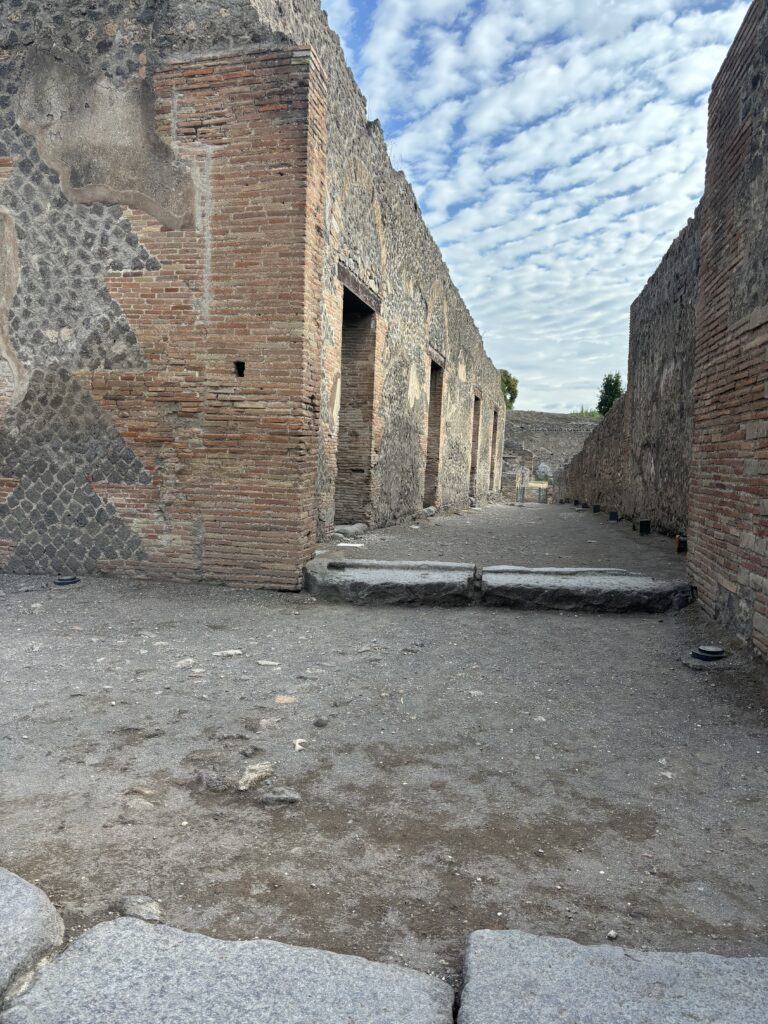
Gladiator dormitories and their training ground/small arena below
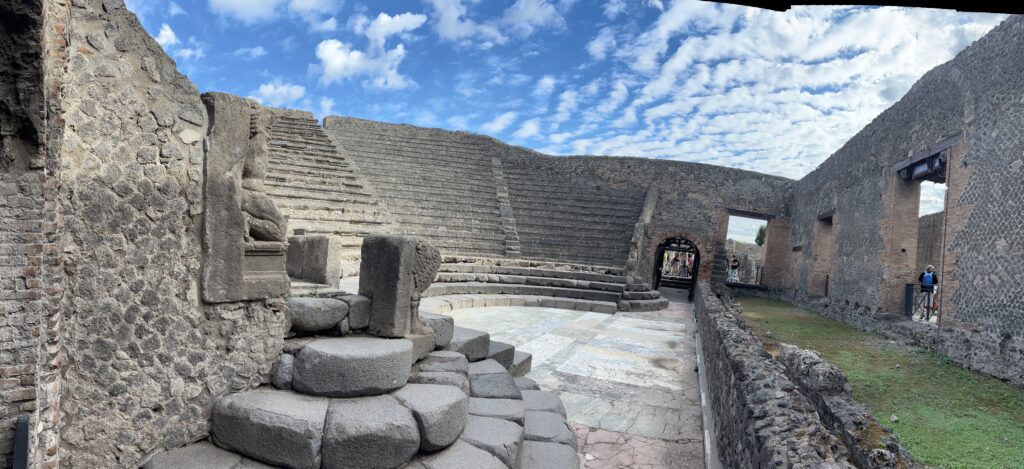
This large amphitheatre would hold around 5000. It also has a wooden stage for performances.

A wealthy persons home. Construction form clay and brick then plastered over and finally painted and/ or adorned with art works.

An original Roman road, a bakery and a part of the market square.
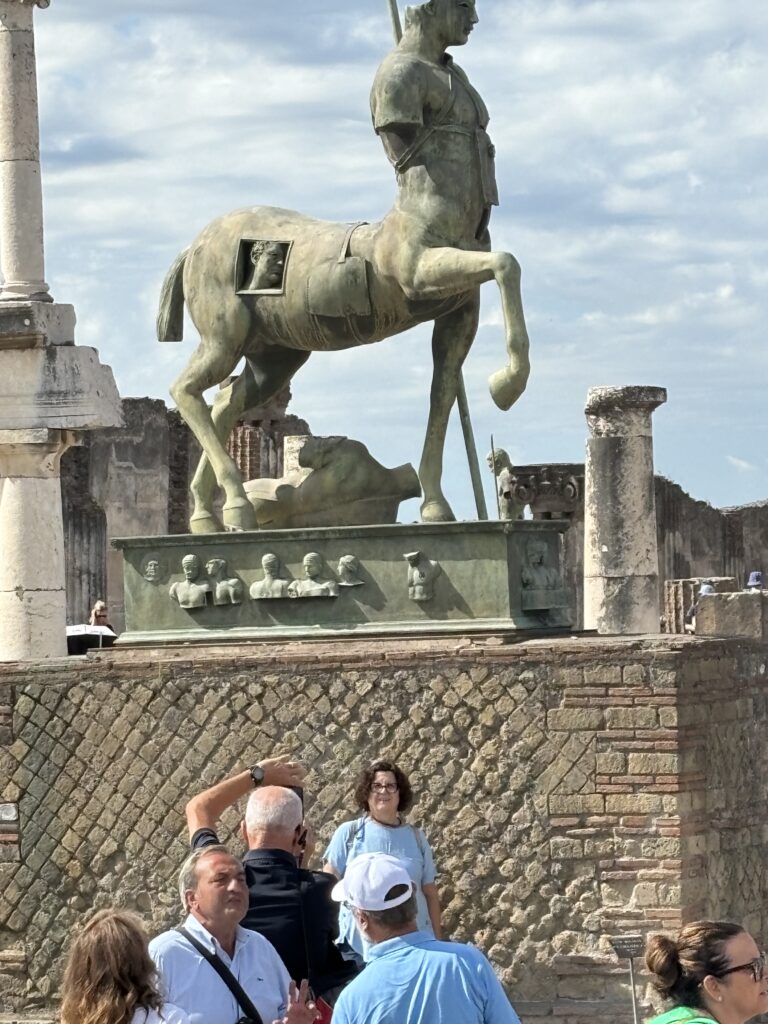
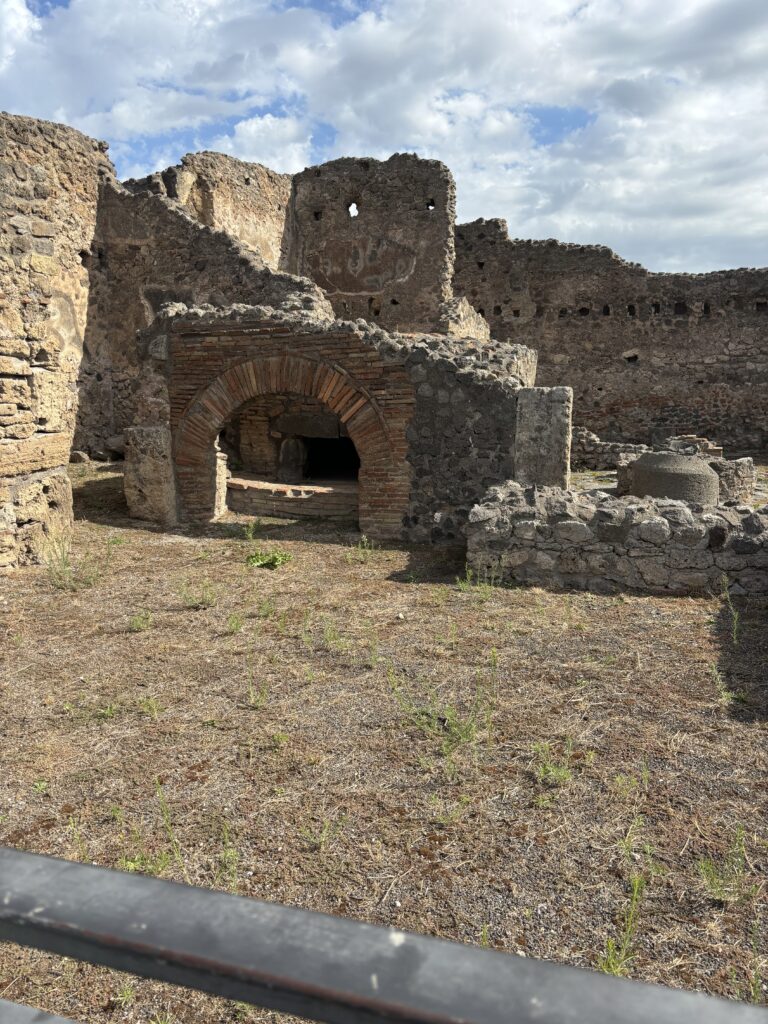
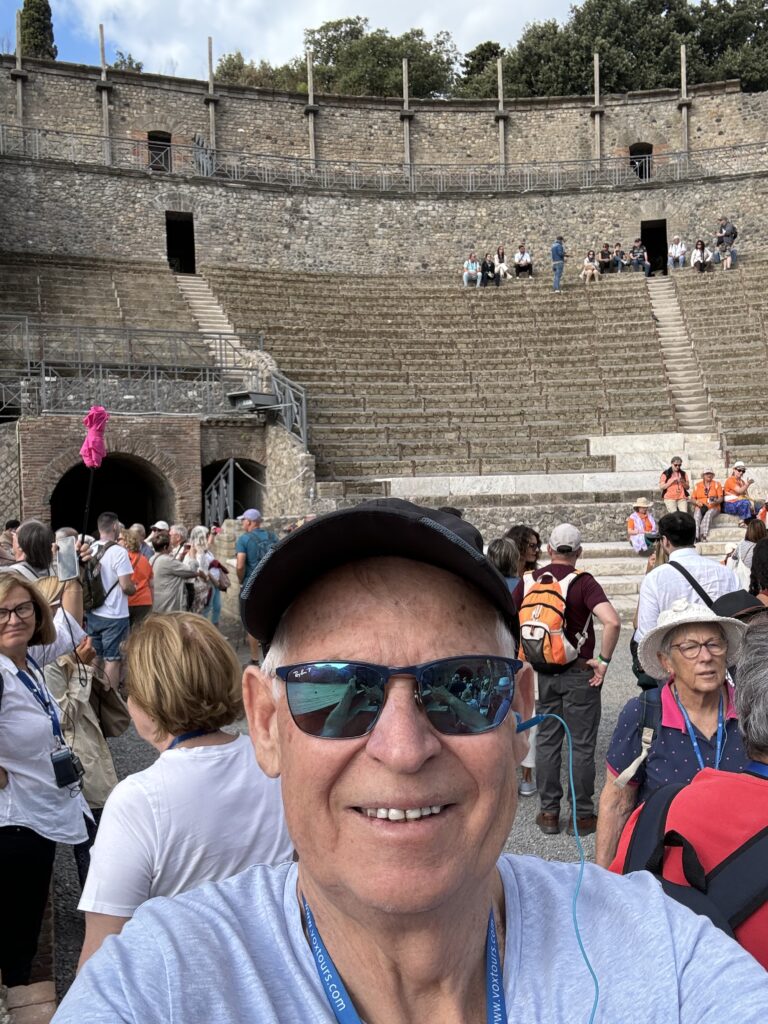
Panorama of the market square followed by group photo.

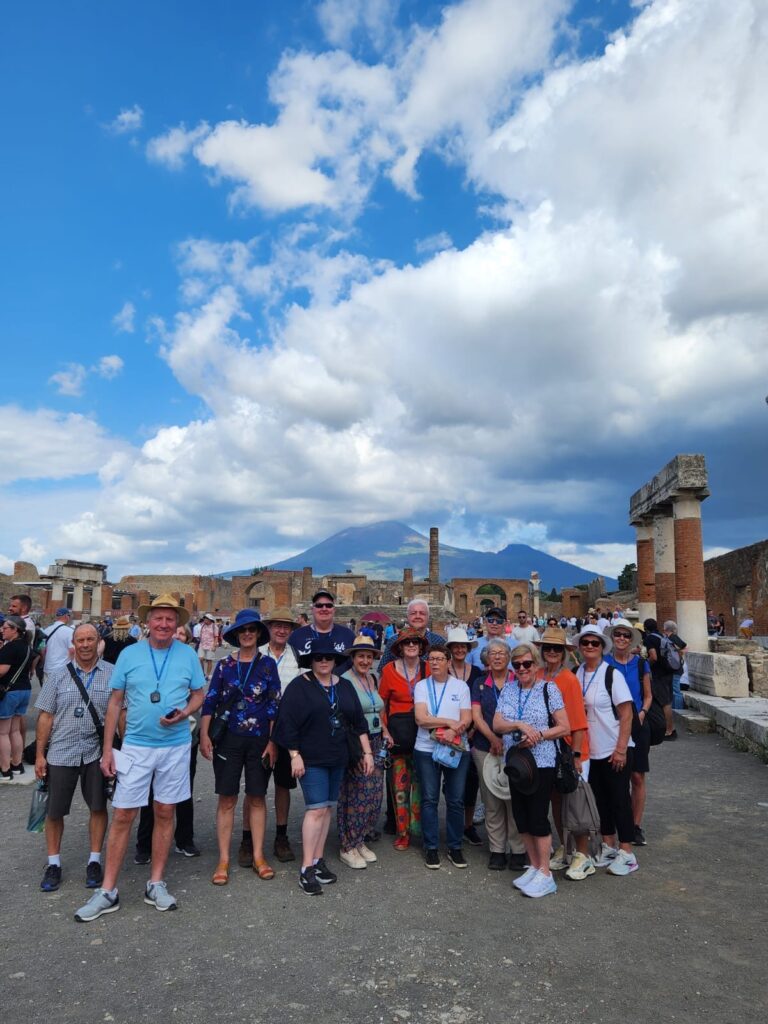

Mt Vesuvius in the background is still an active volcano last erupting in 1944. The eruption that destroyed Pompeii resulted in the top 500 feet of the volcano being blown away and leaving it in its current shape.
The tour officially commenced in the evening with welcome drinks and a dinner at a nearby restaurant.
Tuesday September 17 we depart Naples at 9:00am driving with a coffee break to Altamira famous for its bread making. Soil whet type and old style ovens creates their specialty. Old churches and alley ways much like Naples dot the city.
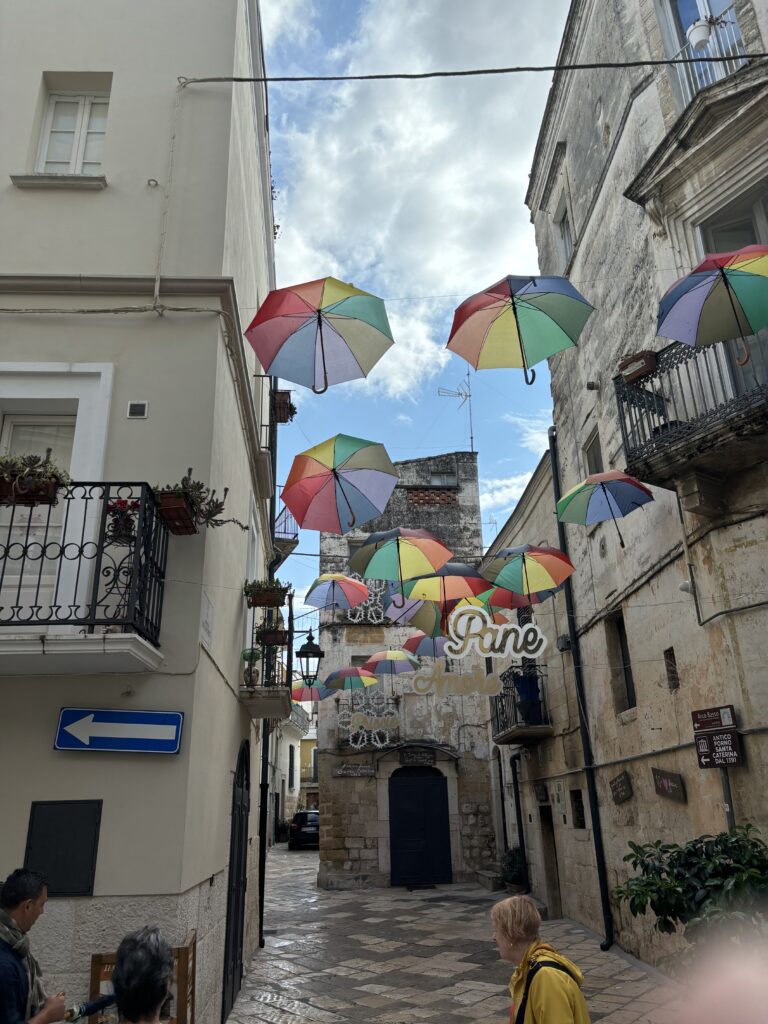
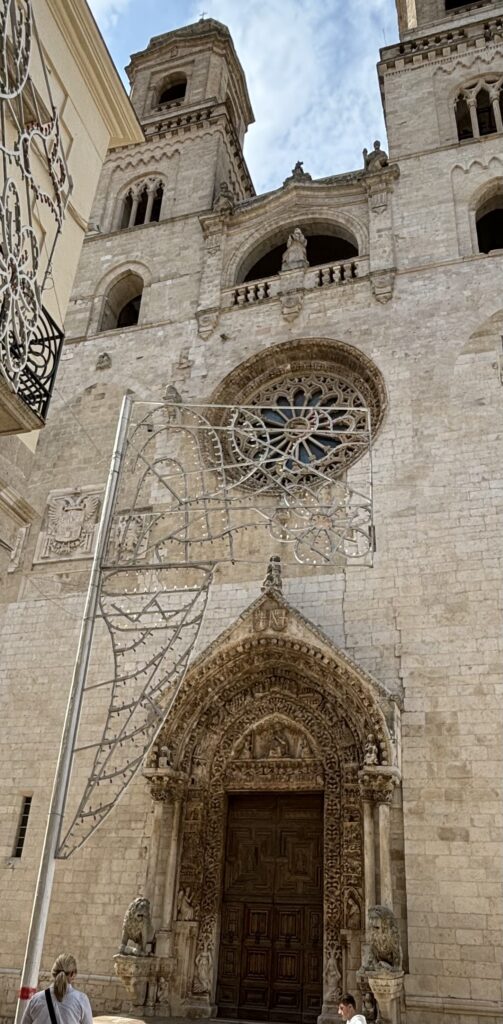
Arriving in Matera around 5:00pm. What an unbelievable city. It is the third oldest established town/city in the world populated since 10 000 BC. Original Neanderthals lived in the caves at the top of the hills. Our hotel is built into the stone with rooms fashioned out of caves. My room is two stories keeping up top with a deck with views to the caves. The entrance and bathroom is down stairs. At night the lights provide a magnificent view of the cities features. Topped a great birthday with a dinner in a cave.
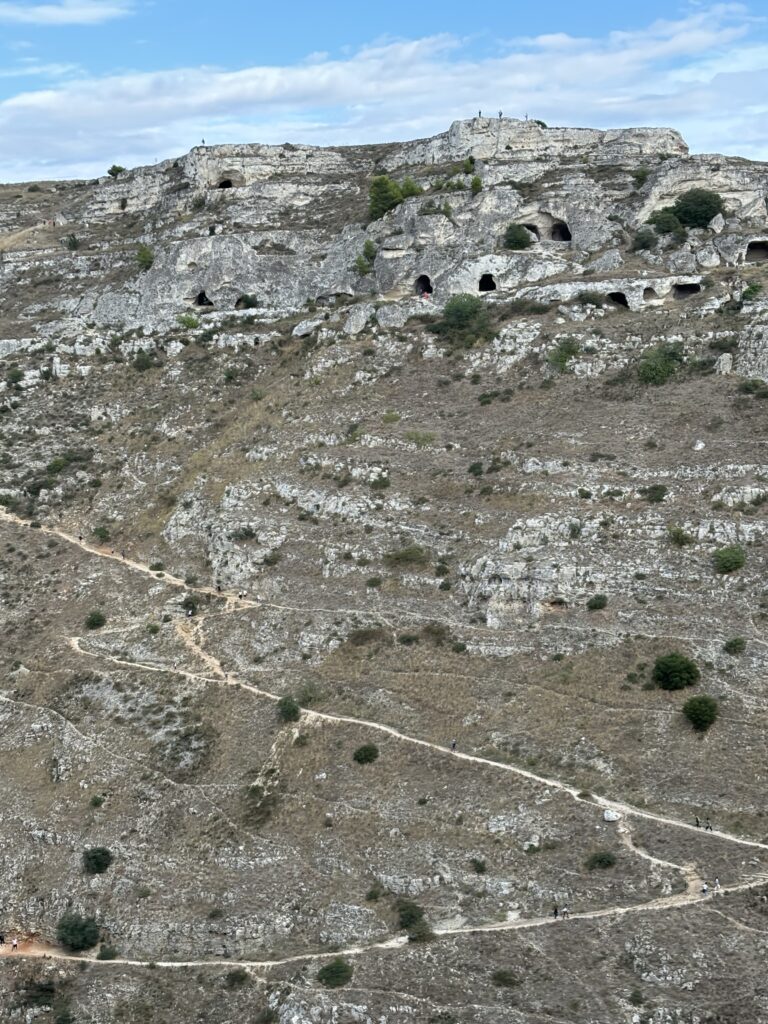
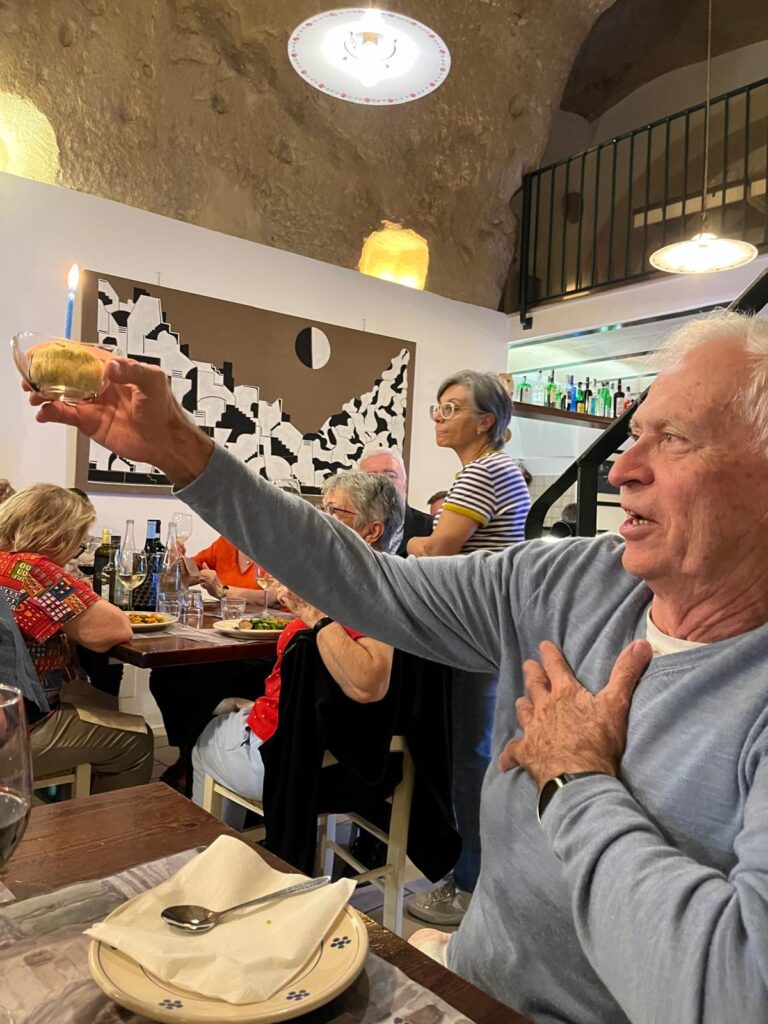
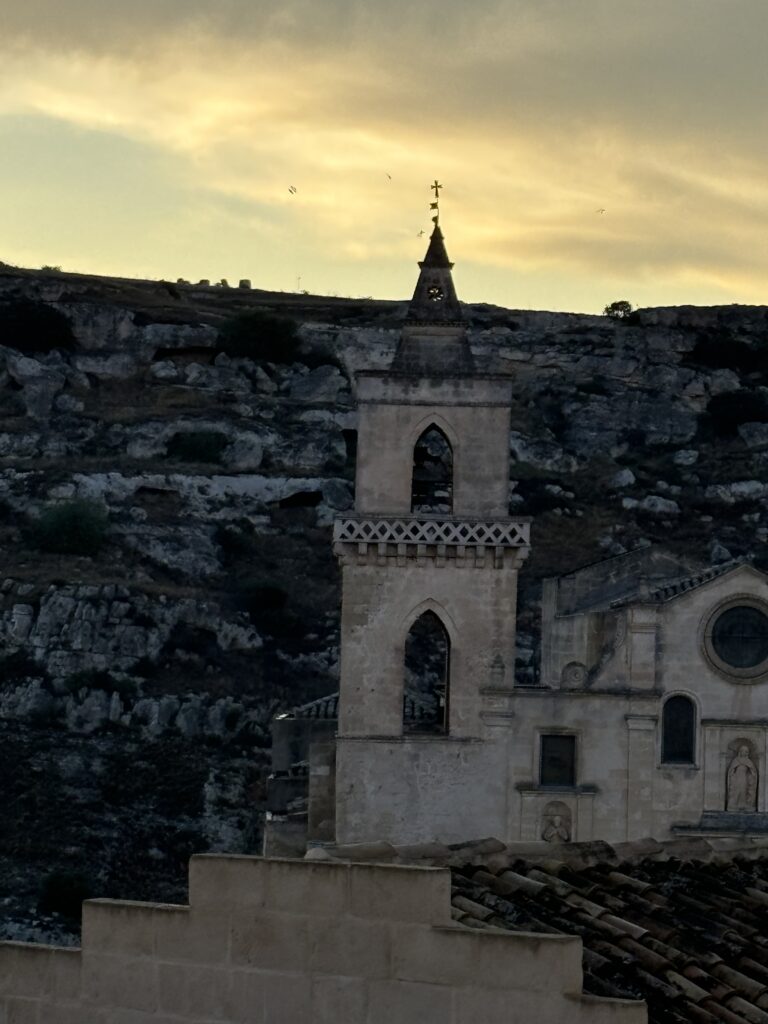
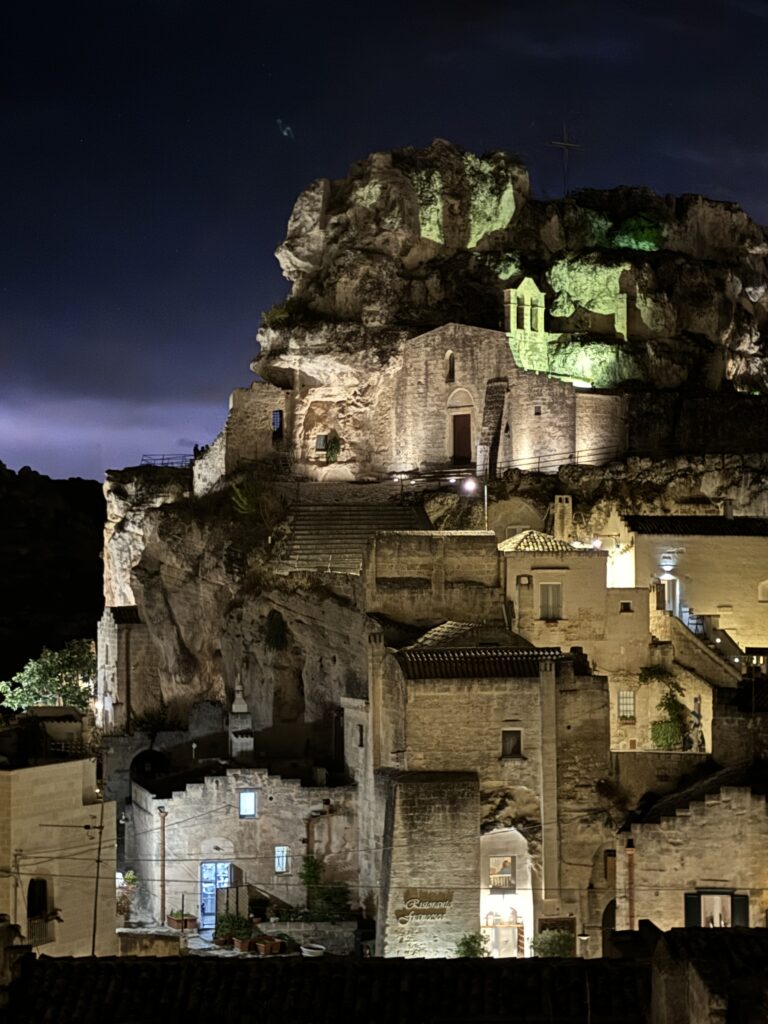
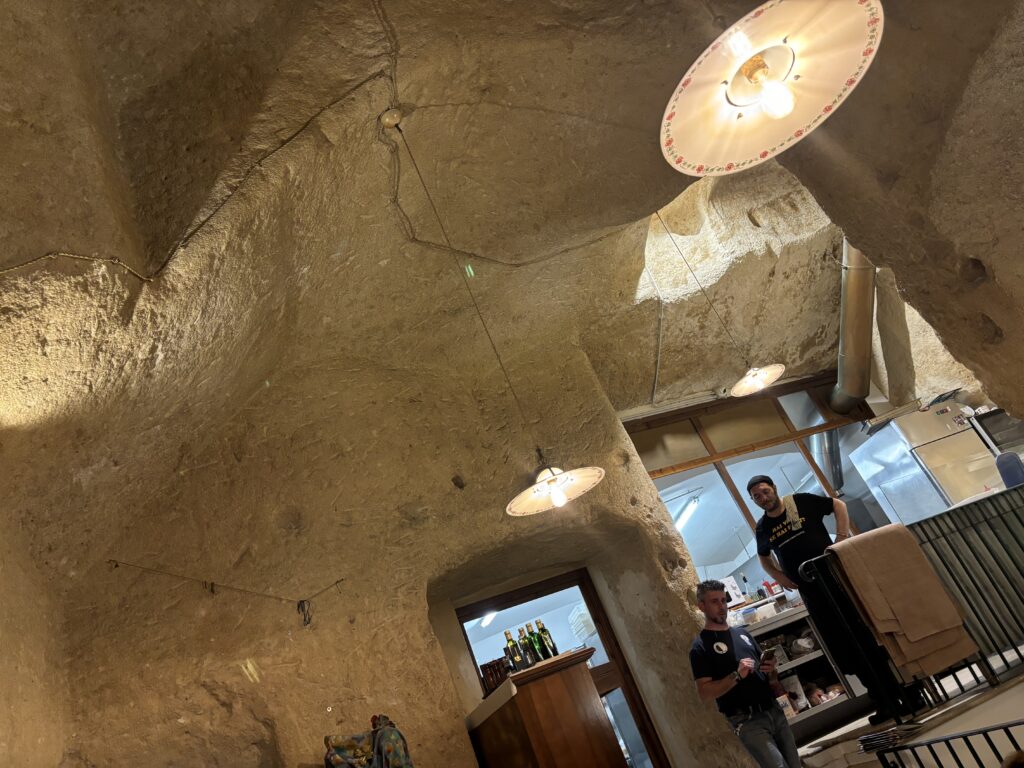
We met our guide in the morning who took us on a 3 hour tour with the history of Matera thrown in. It turns out that this is the town where the father of Eagles footballers Peter Matera et al was born.
The area is in two parts the Sassi which was the “disgrace of Italy” until all inhabitants were moved out then a clean up and restoration of the caves commences. The town has a population of 60 000 but only 1500 live in the Sassi which is now 60% developed. We looked into original caves, rock Churches and a cave wit( all furnishings. The view is spectacular.
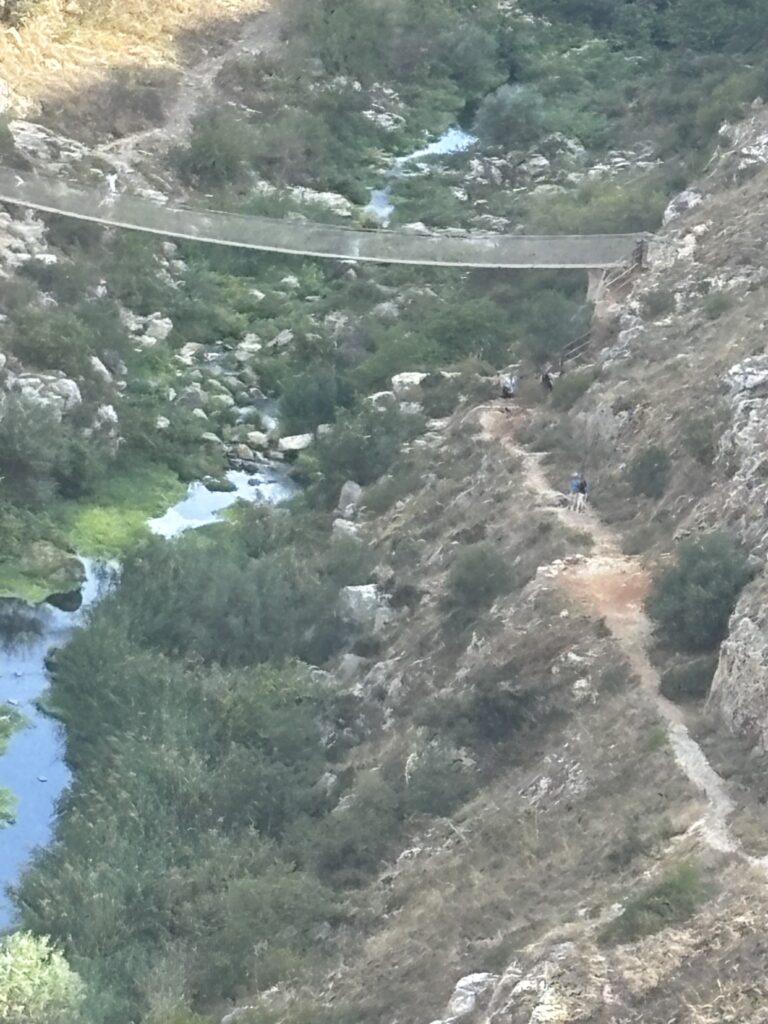
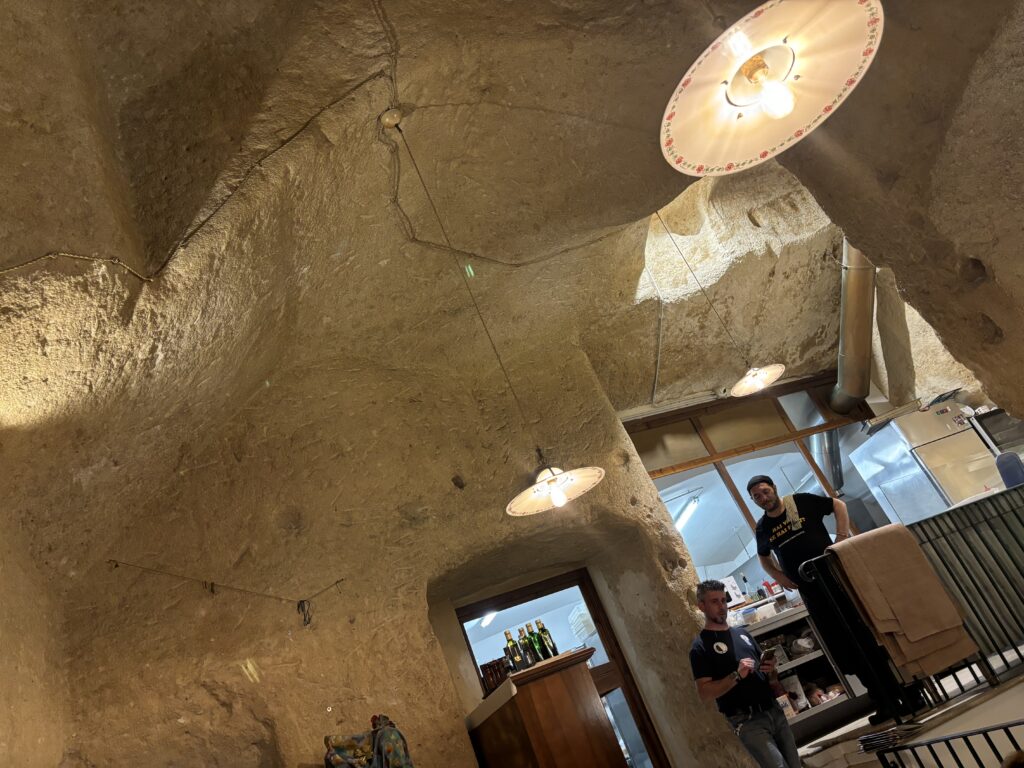
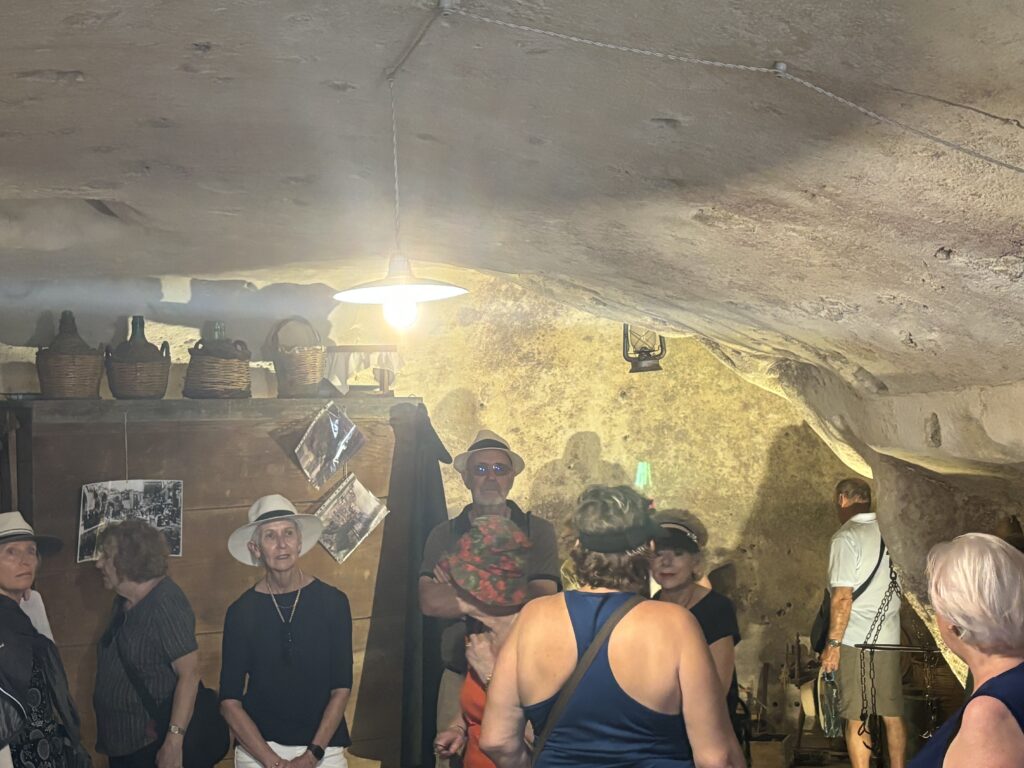
Art restored in the Rock church from the 9th century.
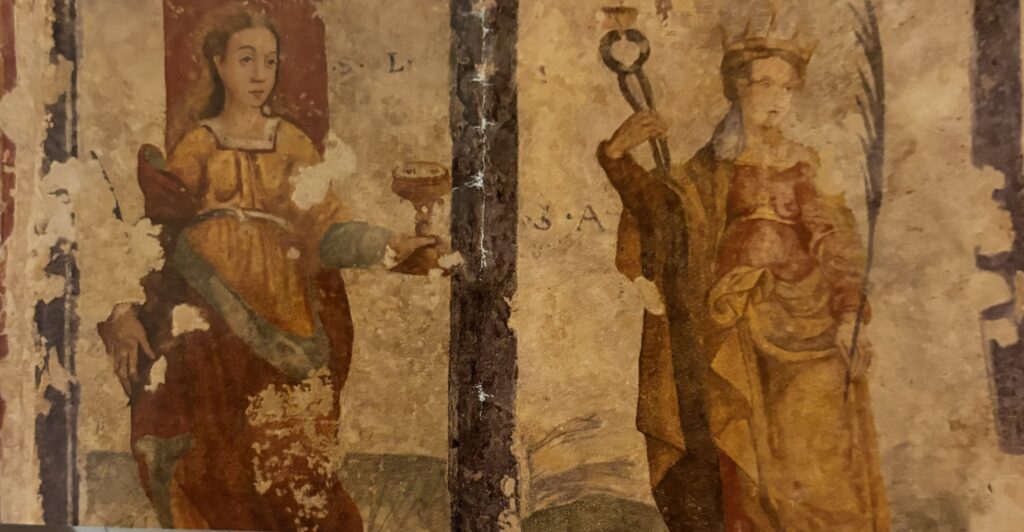
the caves on the other side of the canyon
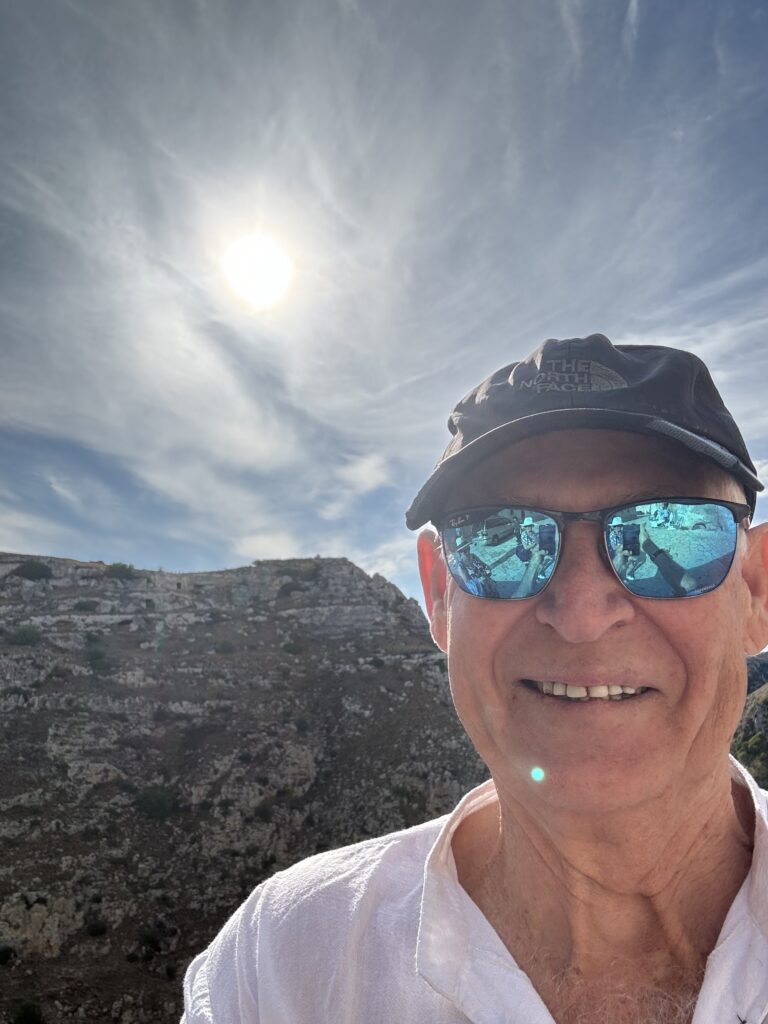

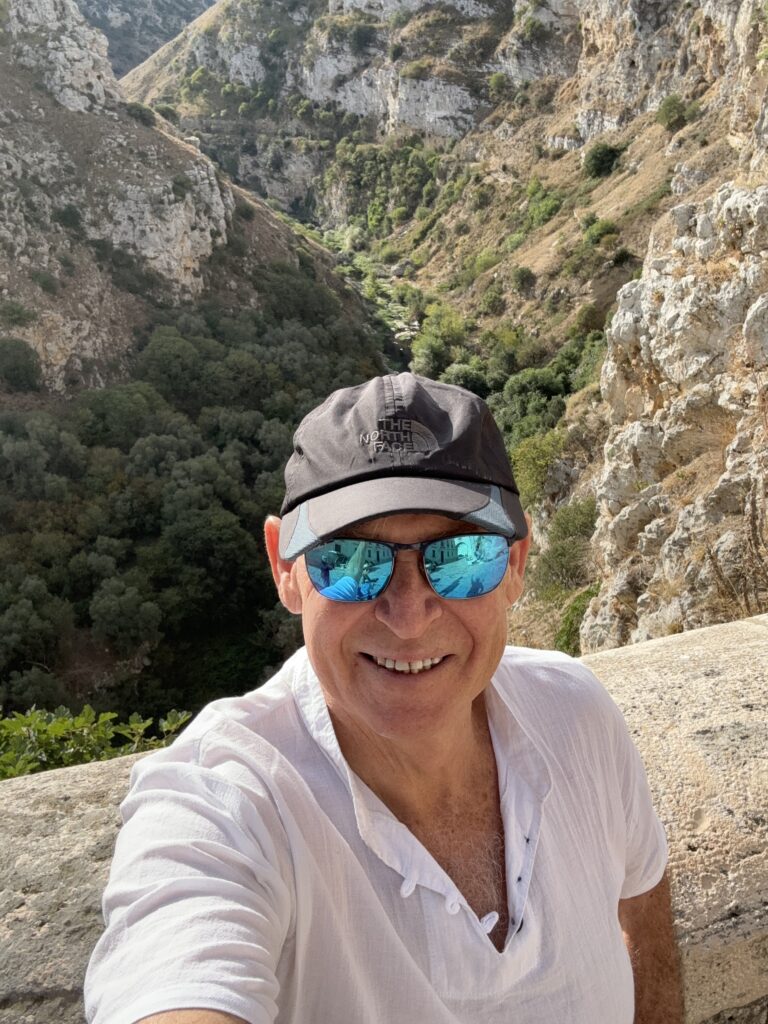
Had drinks with a few of the team and a light lunch followed by an afternoon sleep.rejoined the group around 6:00 for a couple of wines then I headed out solo. The lights in the piazza were amazing as I wandered around. Eventually headed down to a restaurant near home and had a delicious meal with a great bottle of wine. The moon was out so on return to my room I sat on the balcony for half an hour enjoying the ambience.
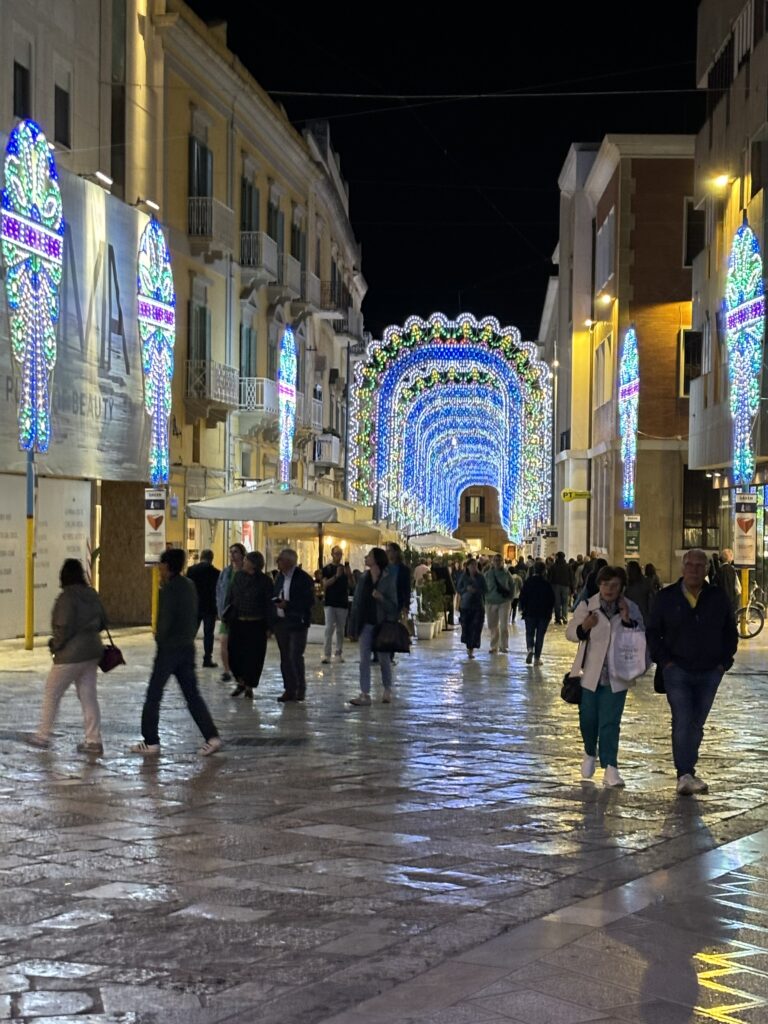
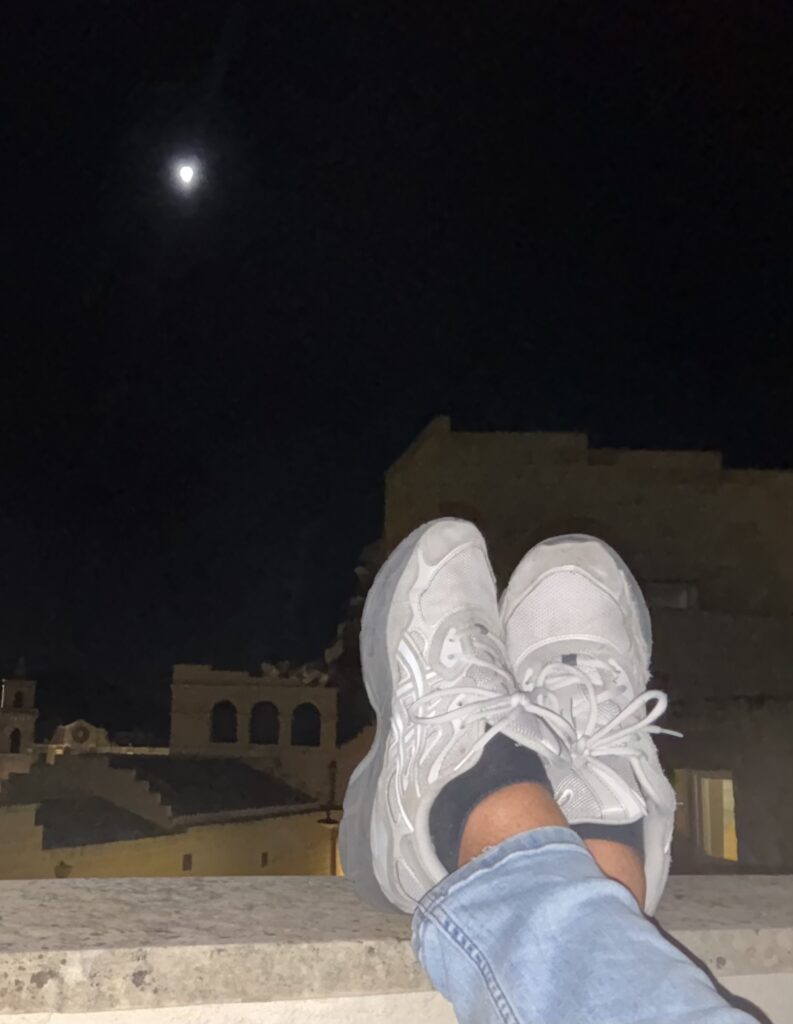
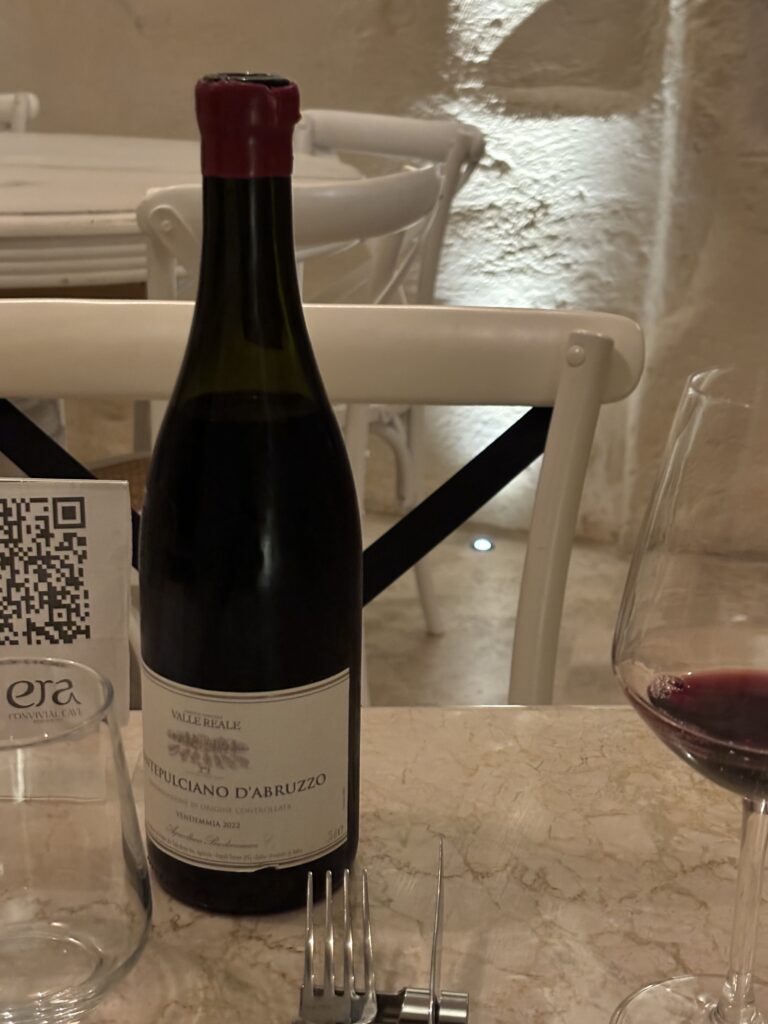
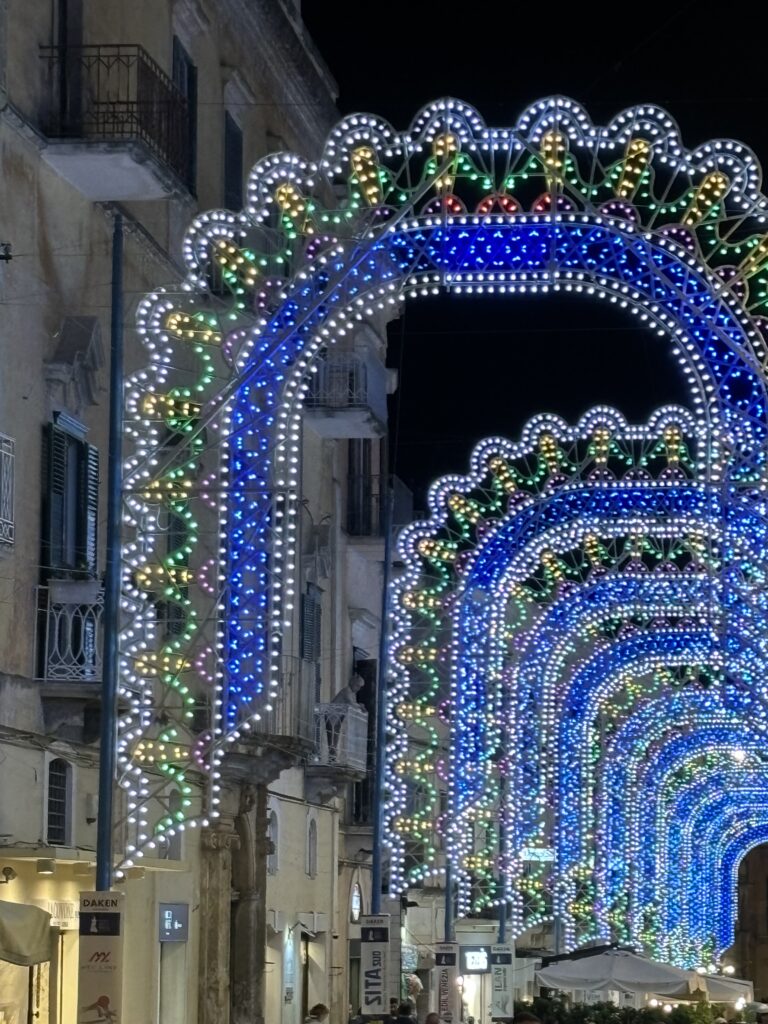
Thursday 19 we set out at 8:00am arriving at Arborbello which is famous for its virgin olive oil but also the Trulli which is the name given to the cone shaped dwellings. They speak for themselves, but Google Trulli de Puglia for a full history.
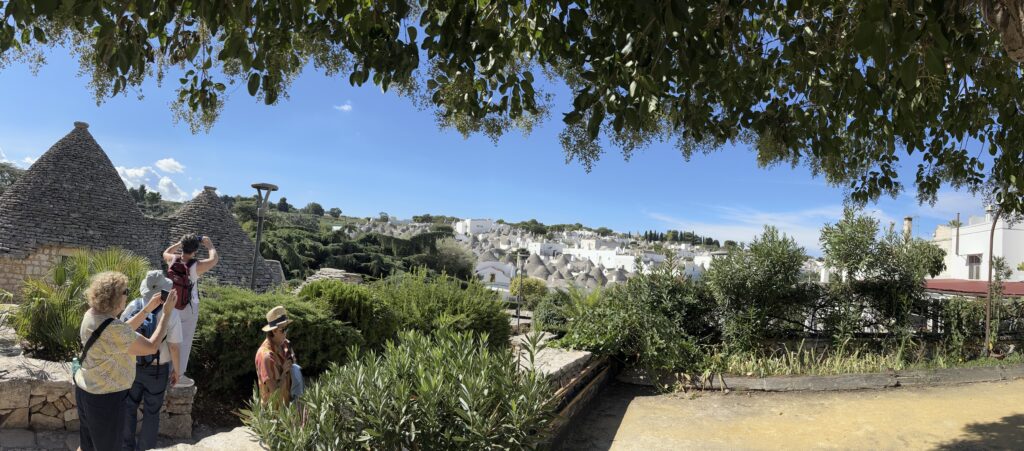
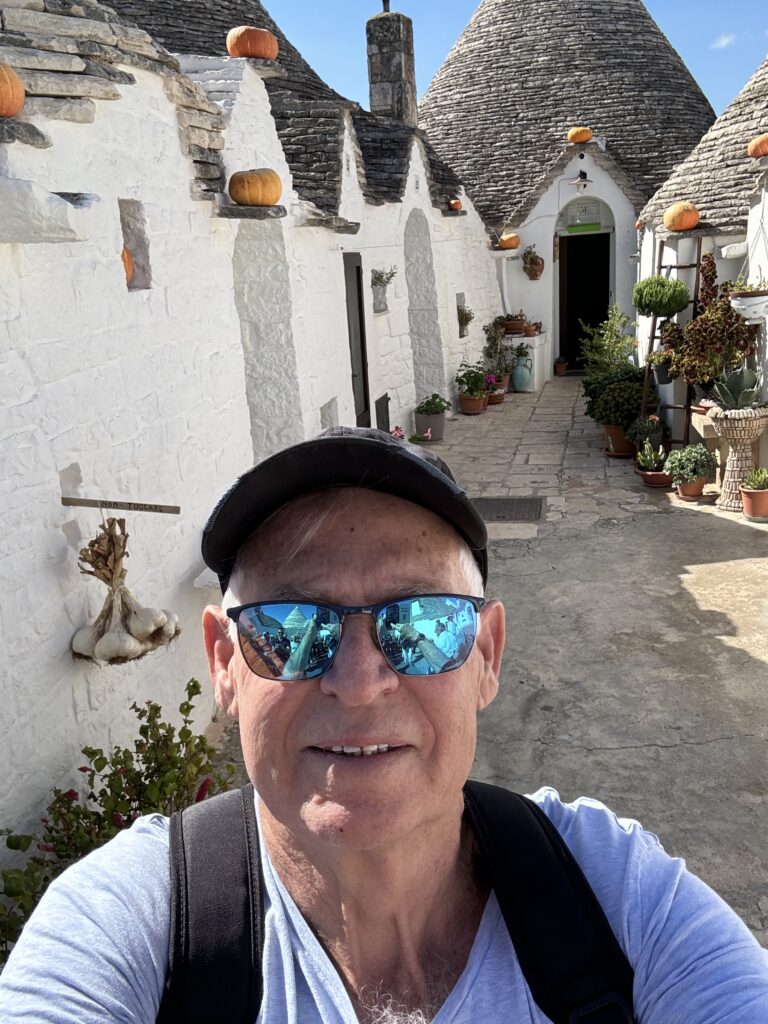
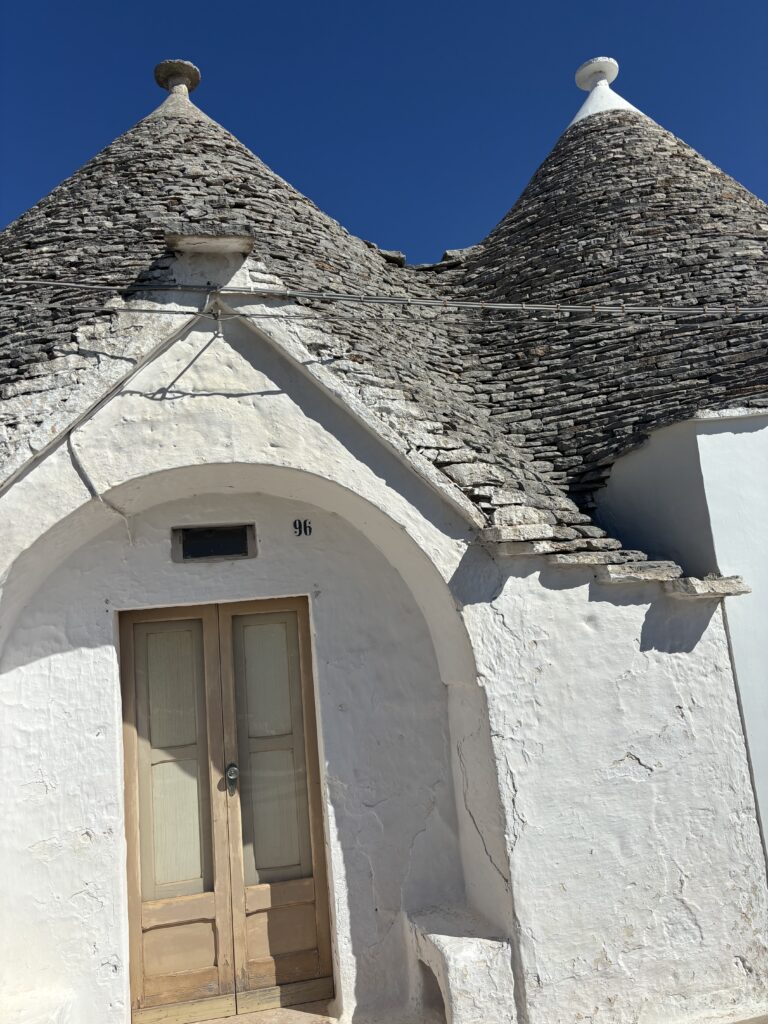
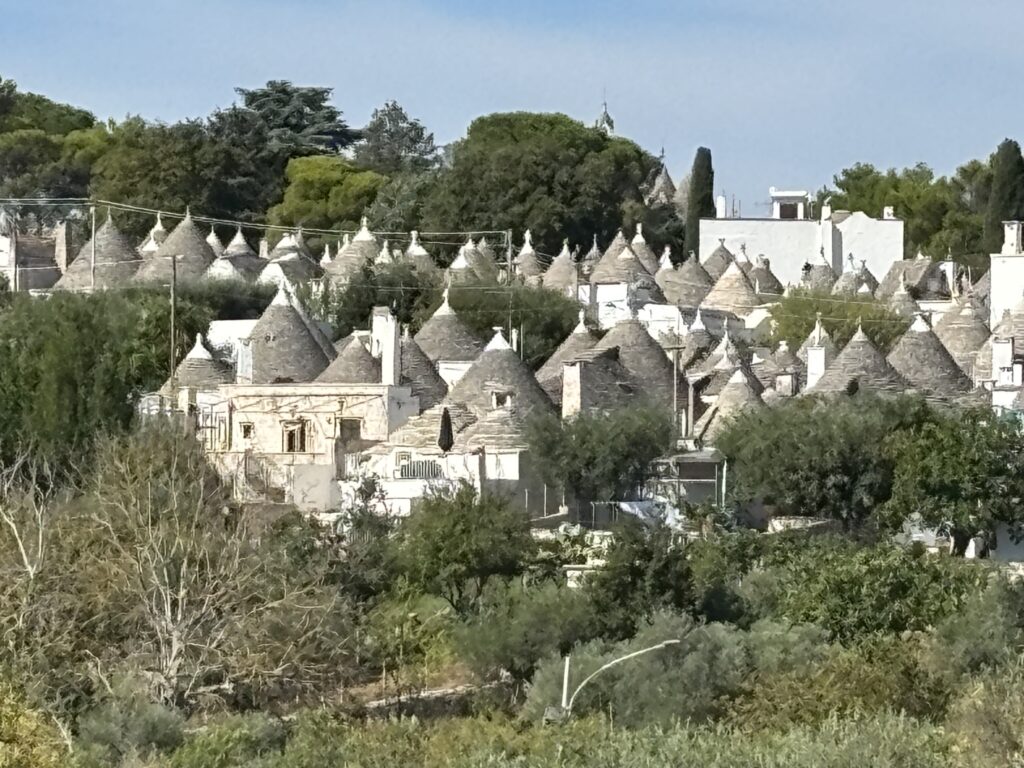
After a nice lunch and a few beers we headed to Altomonte which as its name suggests is high in the mountains. Arriving just before 6:00pm we settled in, had a drink at a cosy bar in the hotel followed by dinner. A reasonably early night followed.
After a pleasant breakfast a group of us walked into town and wandered around the oldest part of the village. Spectacular scenery overlooking the valley shows why this is known as the “wedding town”. The first two photos are of my hotel from town and the pol area from my balcony.

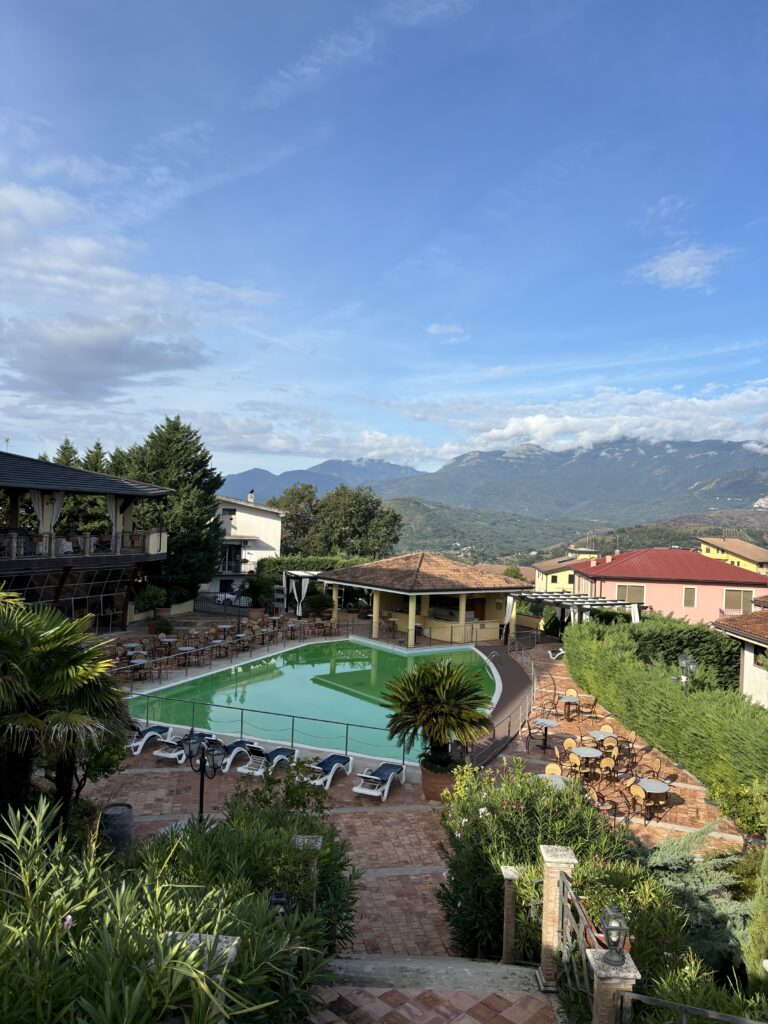
valley views
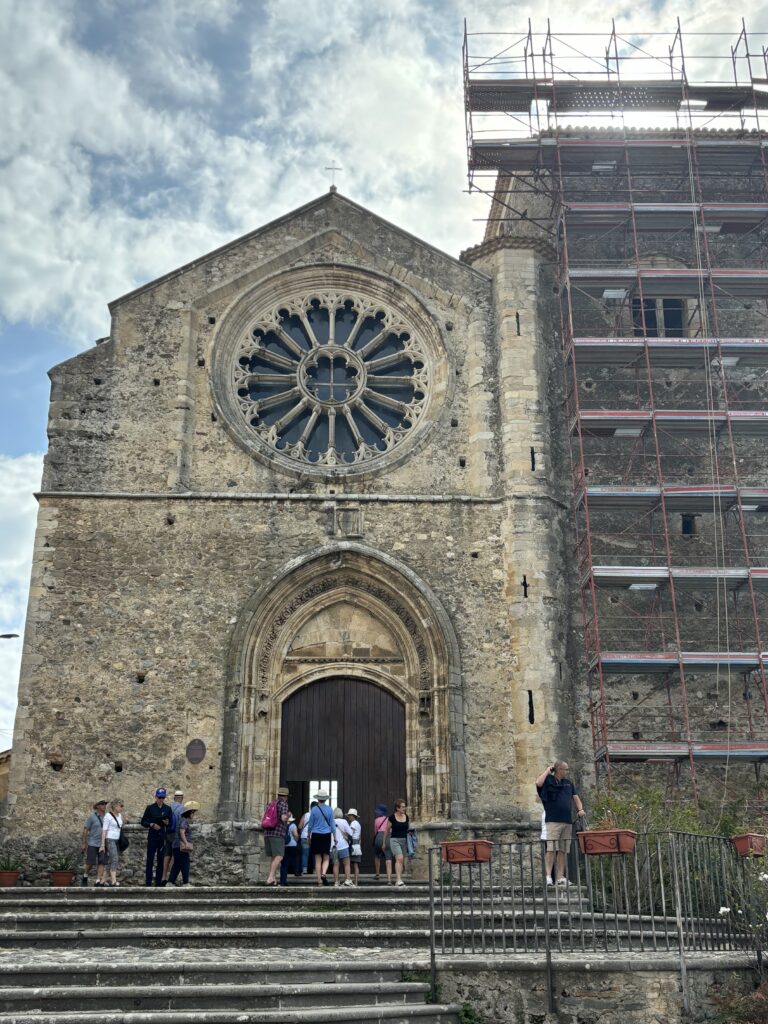
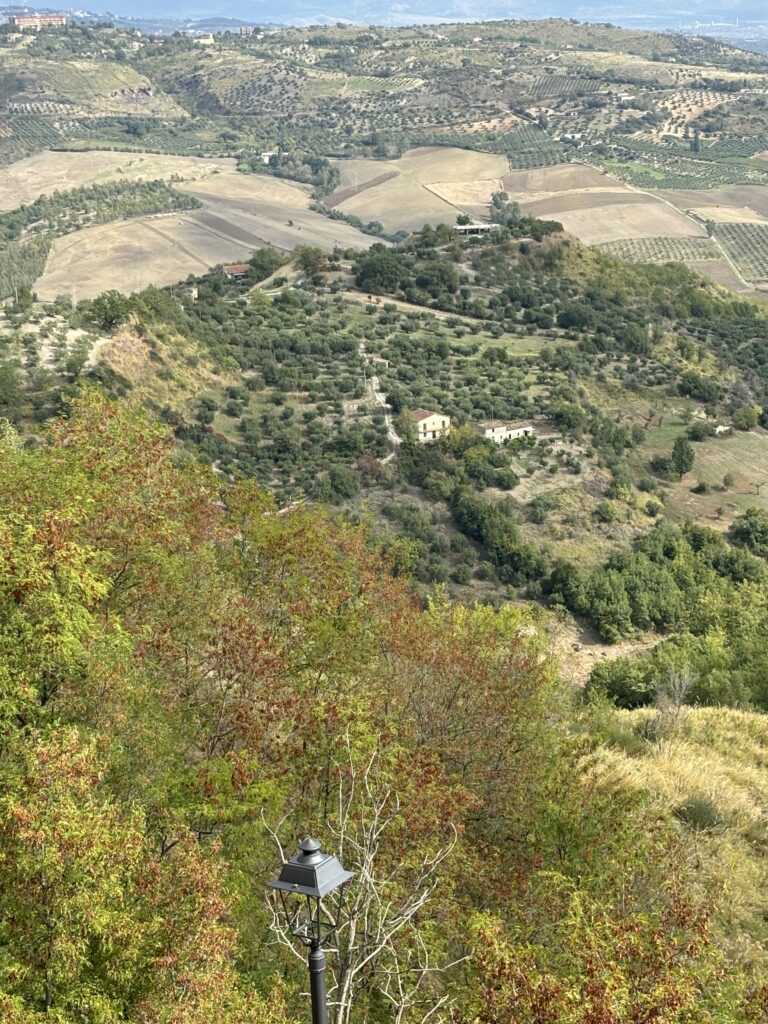
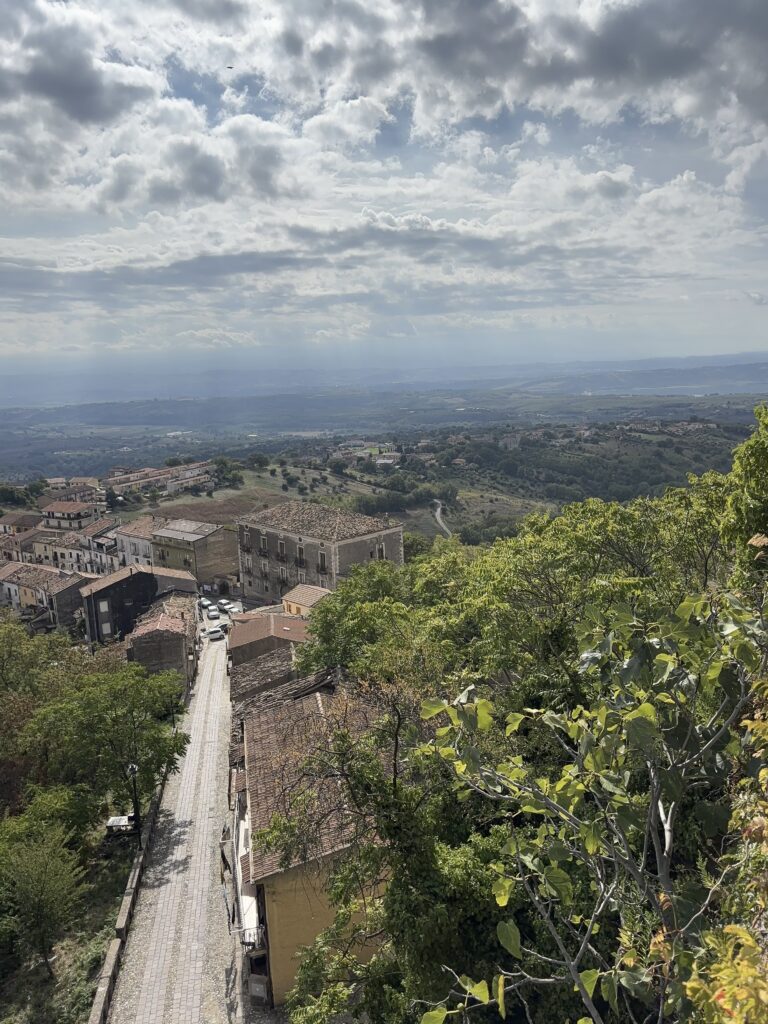
after lunch we drive out to a local farm where we were provided with a welcome spread and a lovely cuvée. The centre pice was a huge loaf of bread baked at the local bakery.


After enjoying this meal we were invited by our hosts to try our hand at preparing a Calabrian meal which we all would get to share. They make their own wine which was then generously distributed among our crew. After several hours of dining and wining we returned to our hotel where a small group continued on with a few beers. A highlight was no doubt the spectacular sunsets we were privy to at the farm.
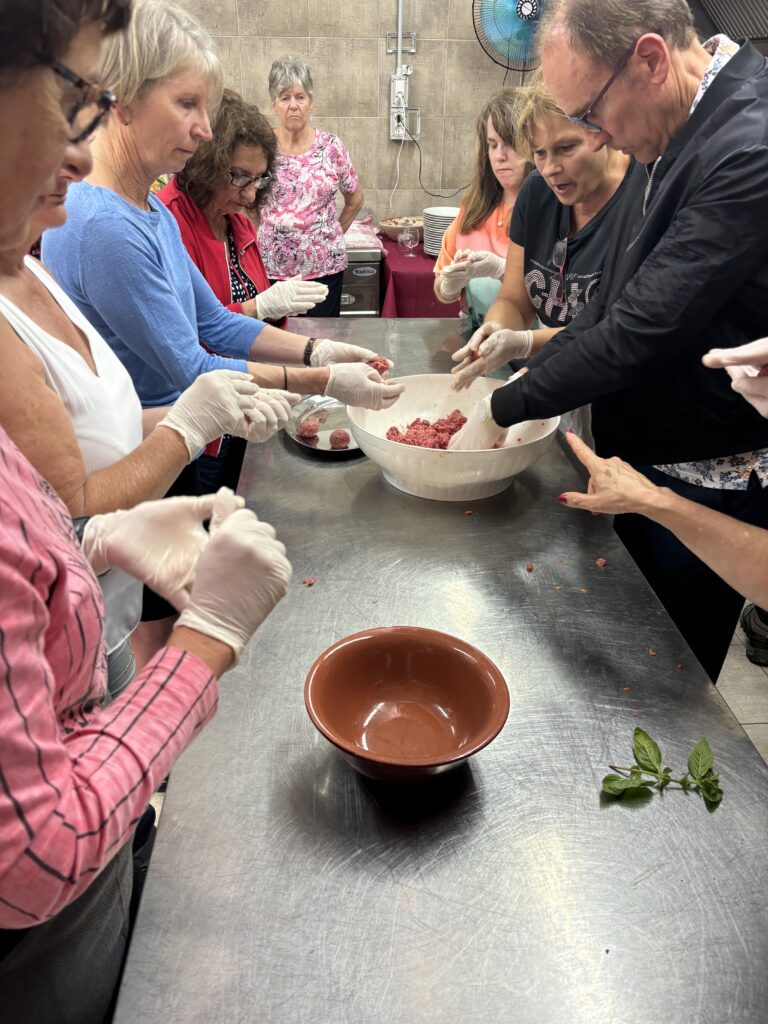
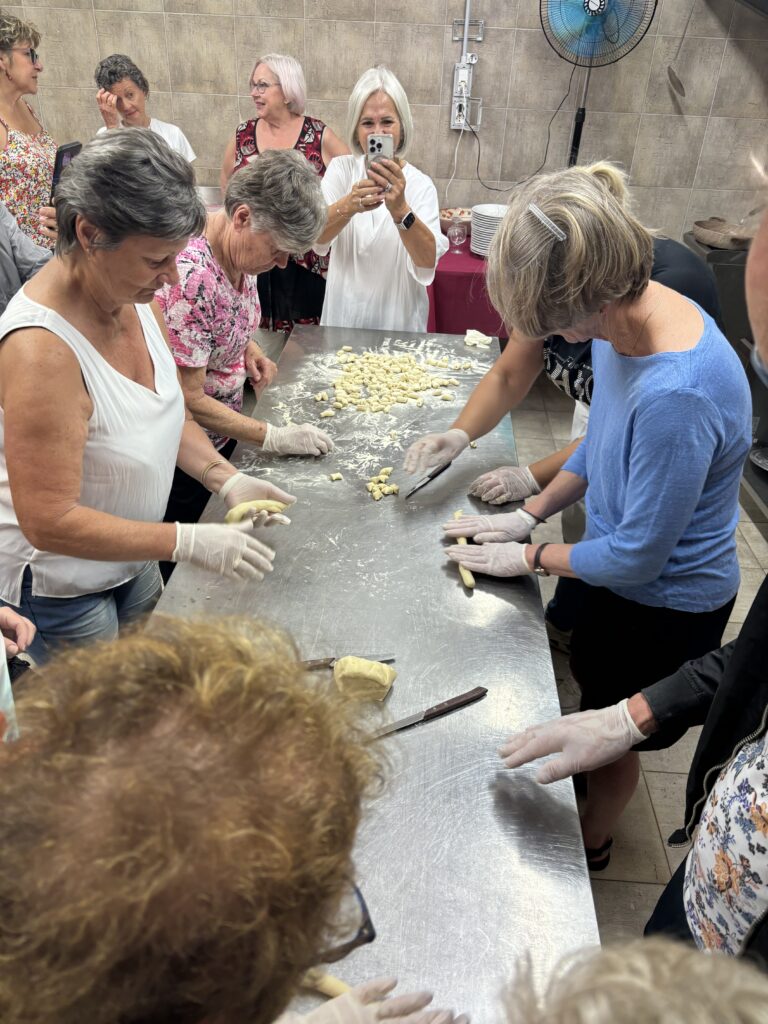
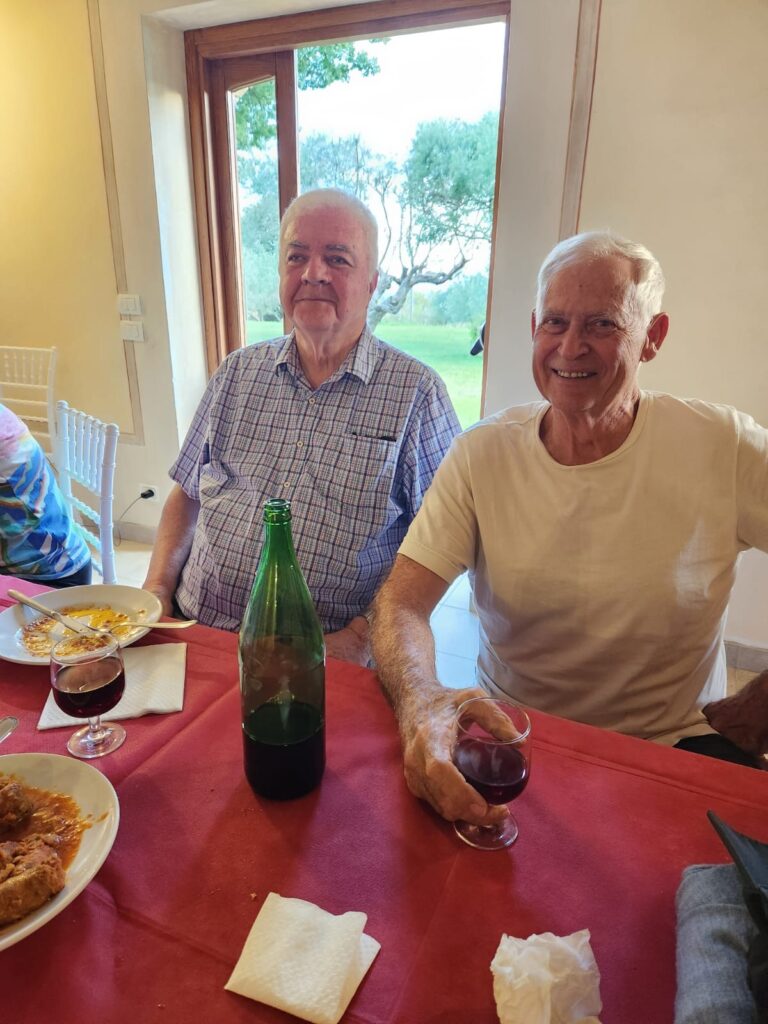
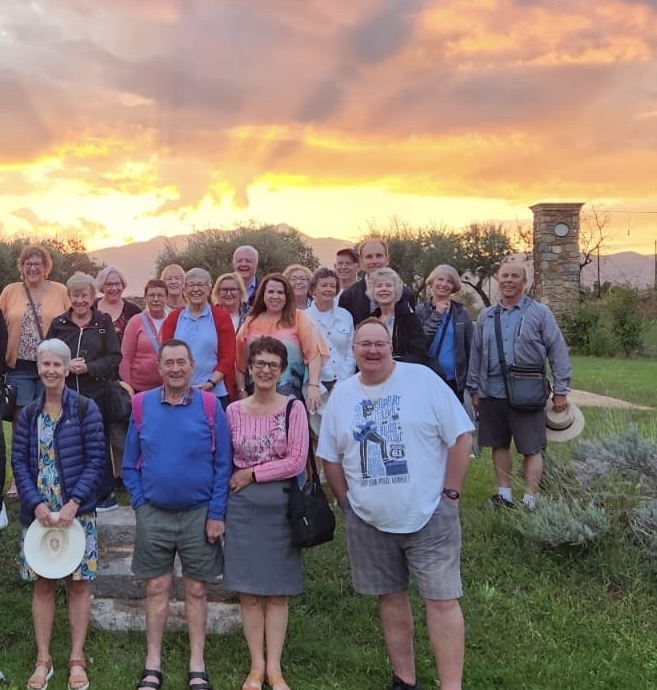
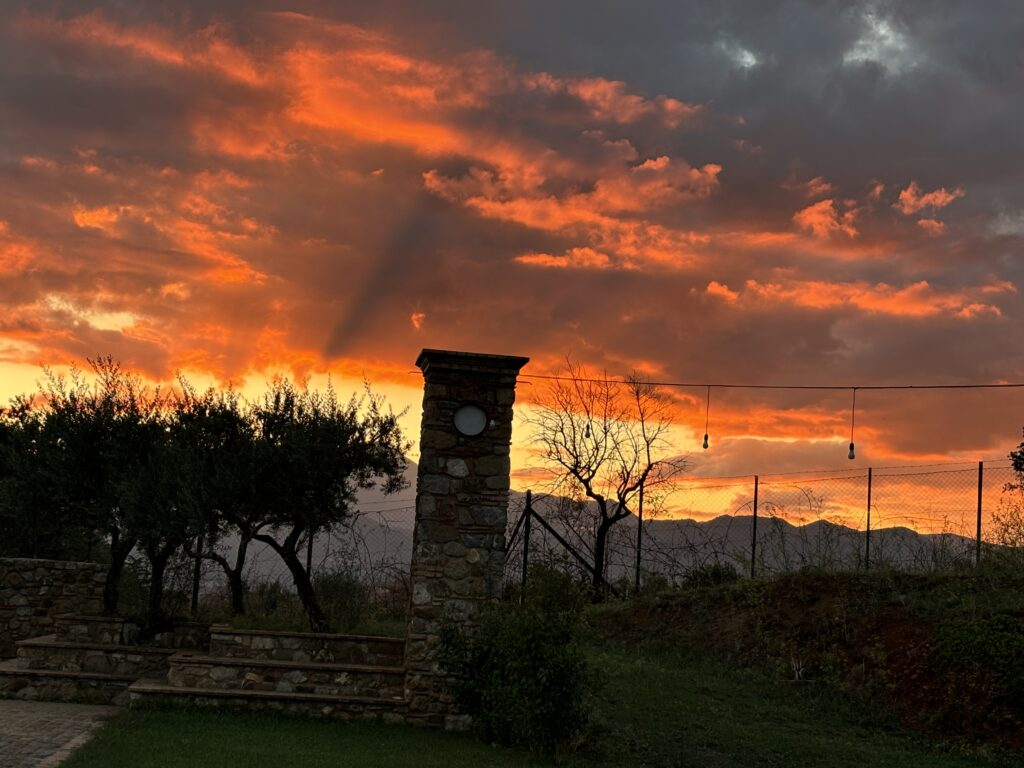
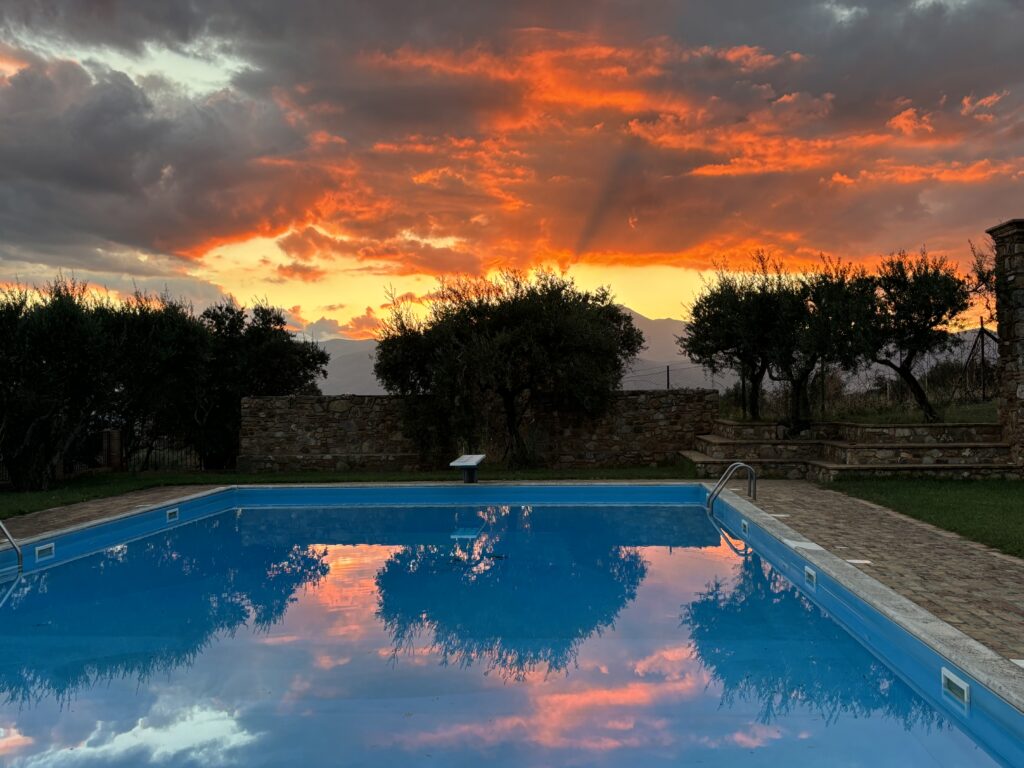
Saturday 21st we depart Altomonte around 10:15 arriving at a winery called Serracavallo which started around 20 years ago. Wines include blends of Cabernet Sauvignon, Merlot and local red magliocco as red wines and Chardonnay, Riesling and procorello as blends of white wines. Vines are planted between 550 and 650 metres above sea level.
After a brief tour of the winery we were treated to a lovely tasting and accompanying food. Excellent show.
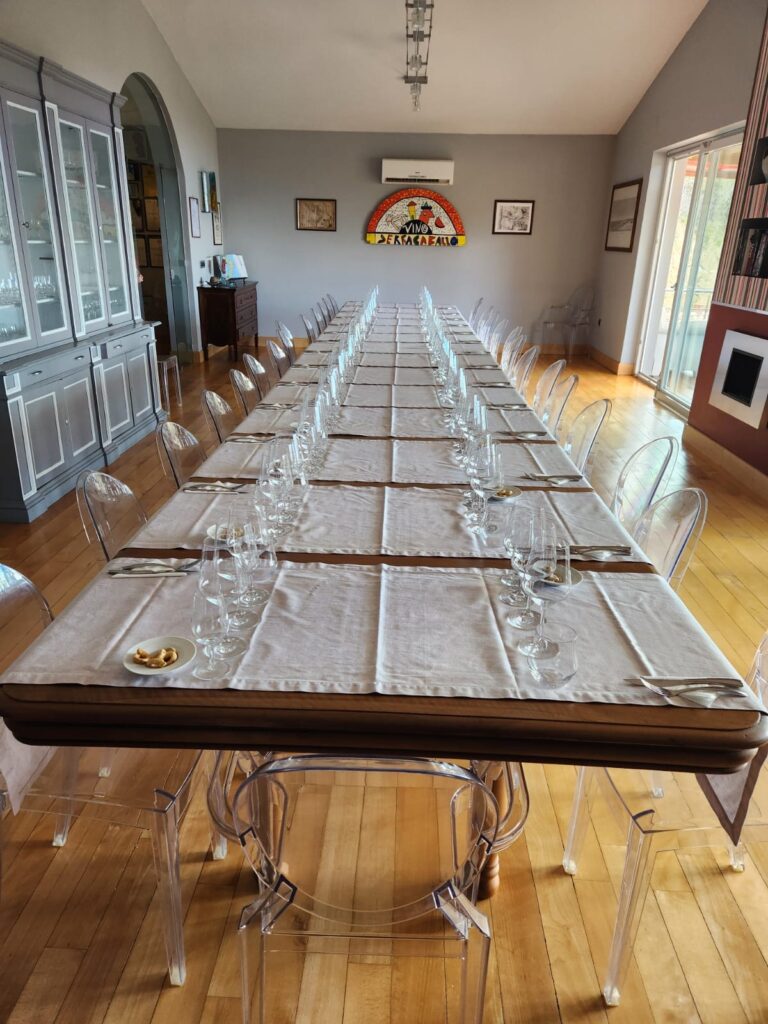
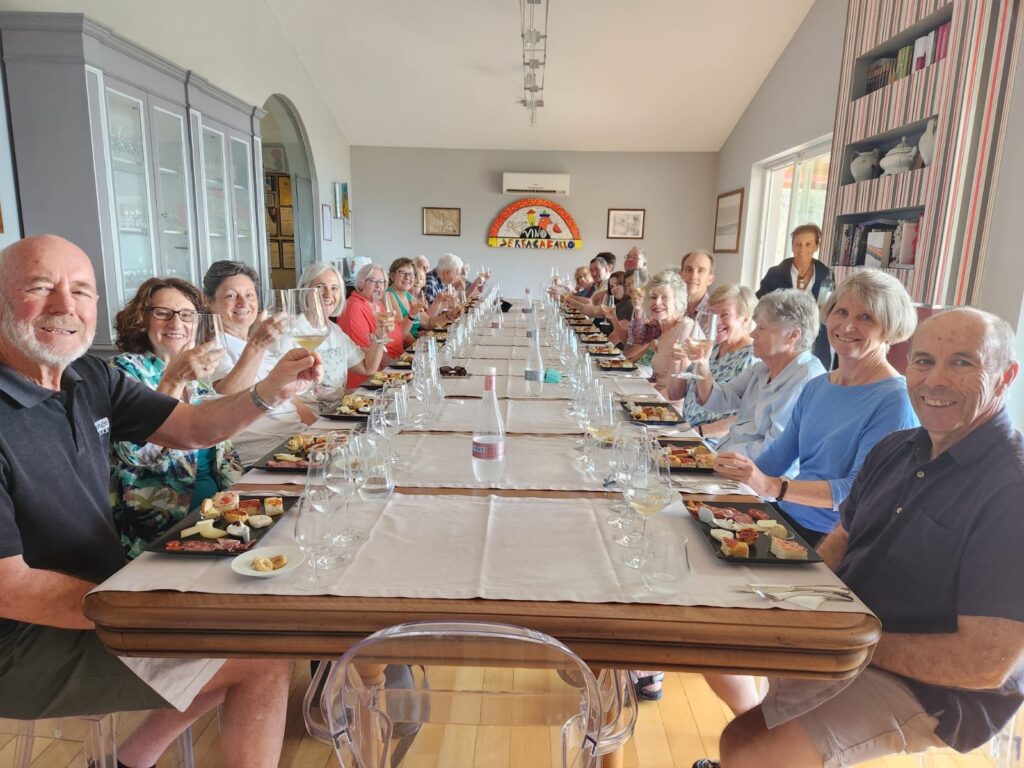
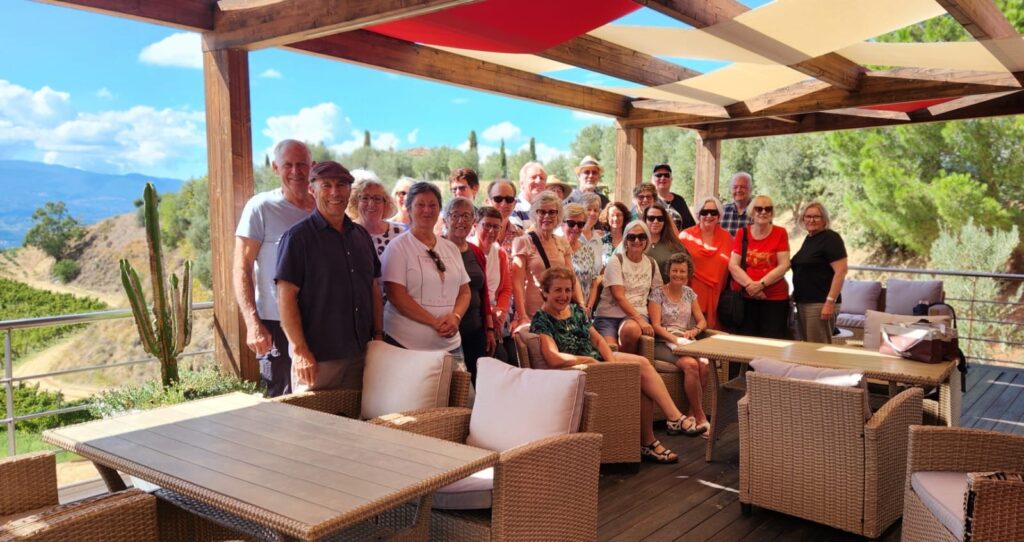
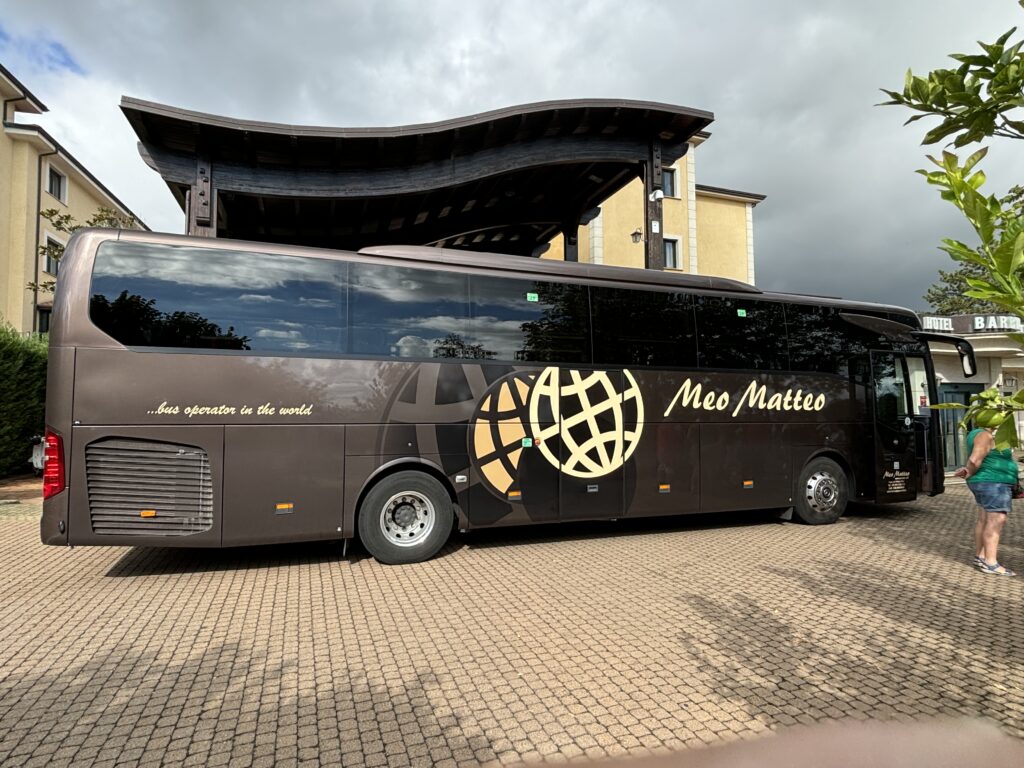
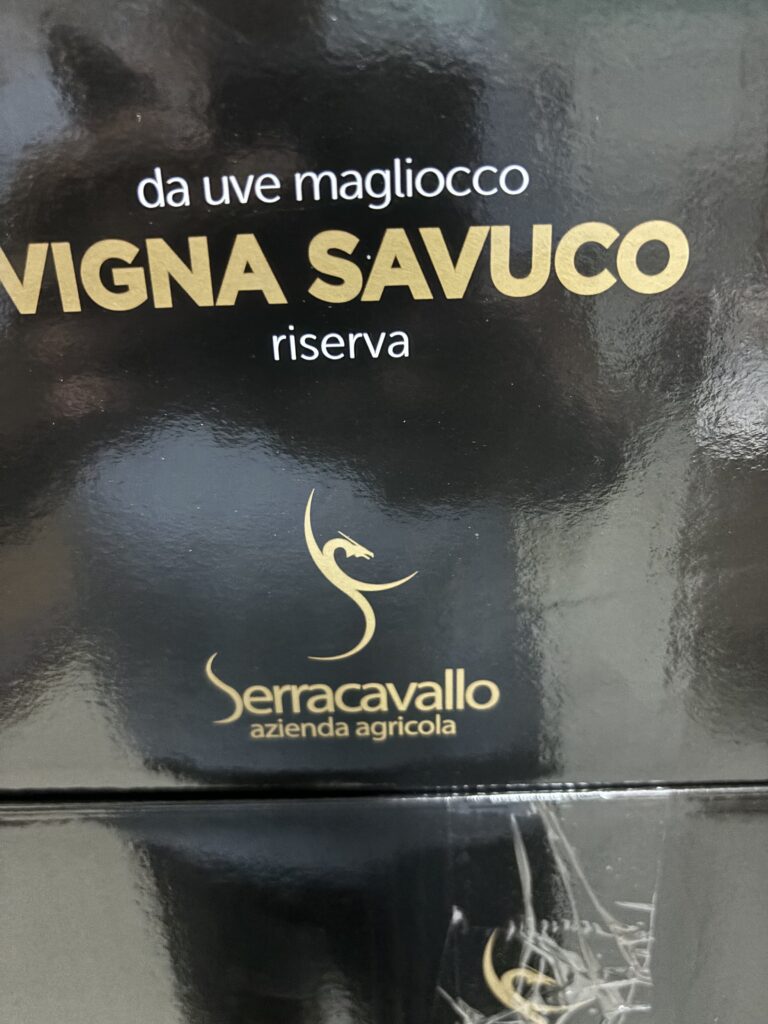

Our bus above is with us for the full 25 days, can be a little tight for leg room but Salvo is a great driver.
Departing the winery we head to Tropia a beautiful seaside town. Fantastic hospitality as a spread of food and drink was laid on, with all rooms displaying Interesting room murals as you can see.
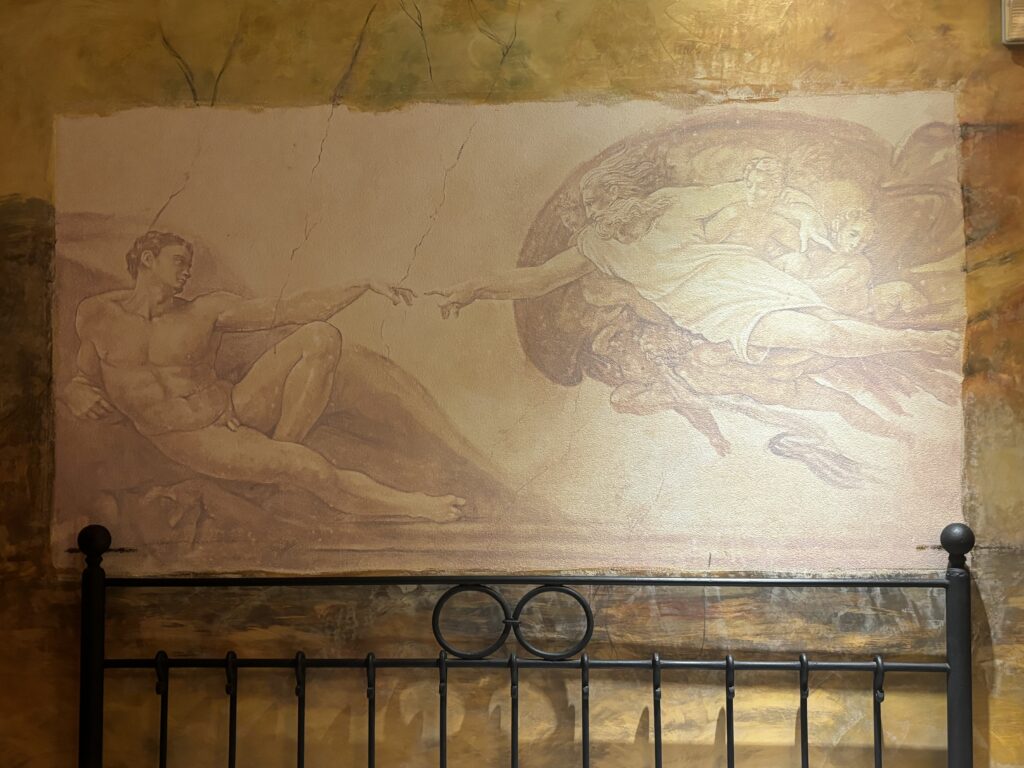
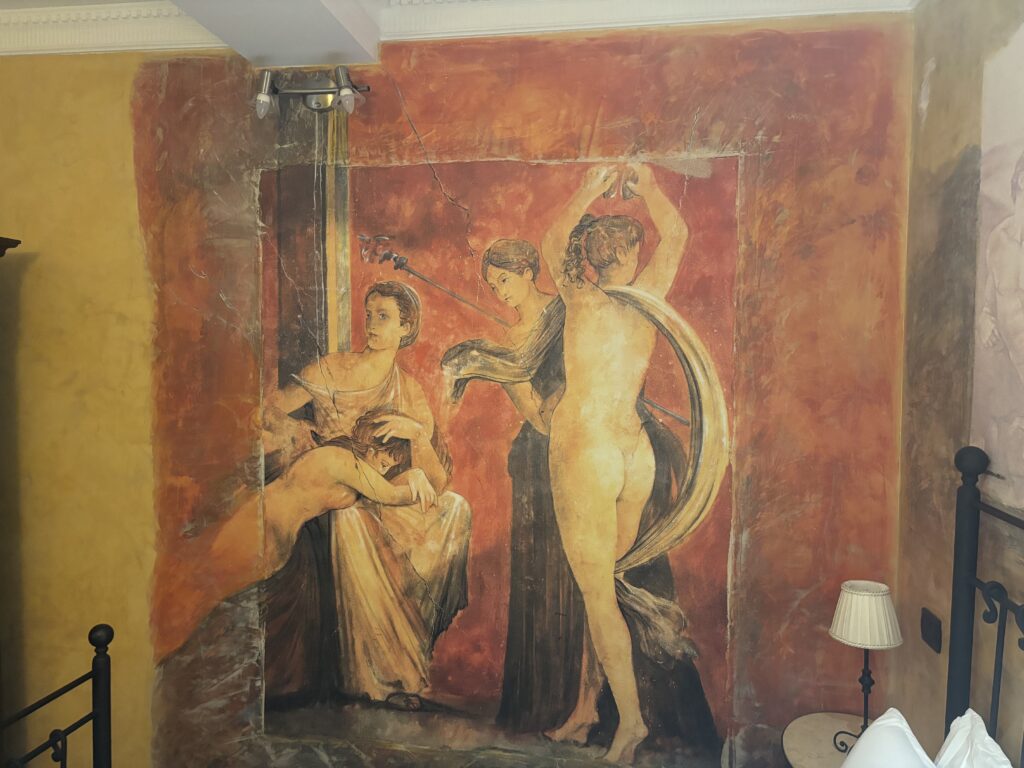
Sunday 22
This is a beautiful town quite small and touristy. The main thoroughfare ends up in a “balcony” looking over the ocean with spectacular views. We went on a brief tour of the town with Tomasino, however I saw nothing new.
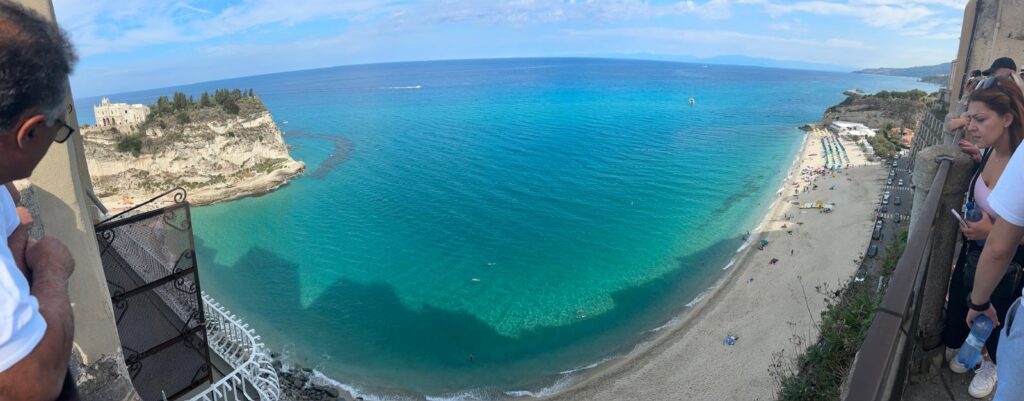
After our tour we hopped on the bus and headed to pizza. Main attraction was the church with many stone carvings and a piazza surrounded by restaurants where we enjoyed lunch.
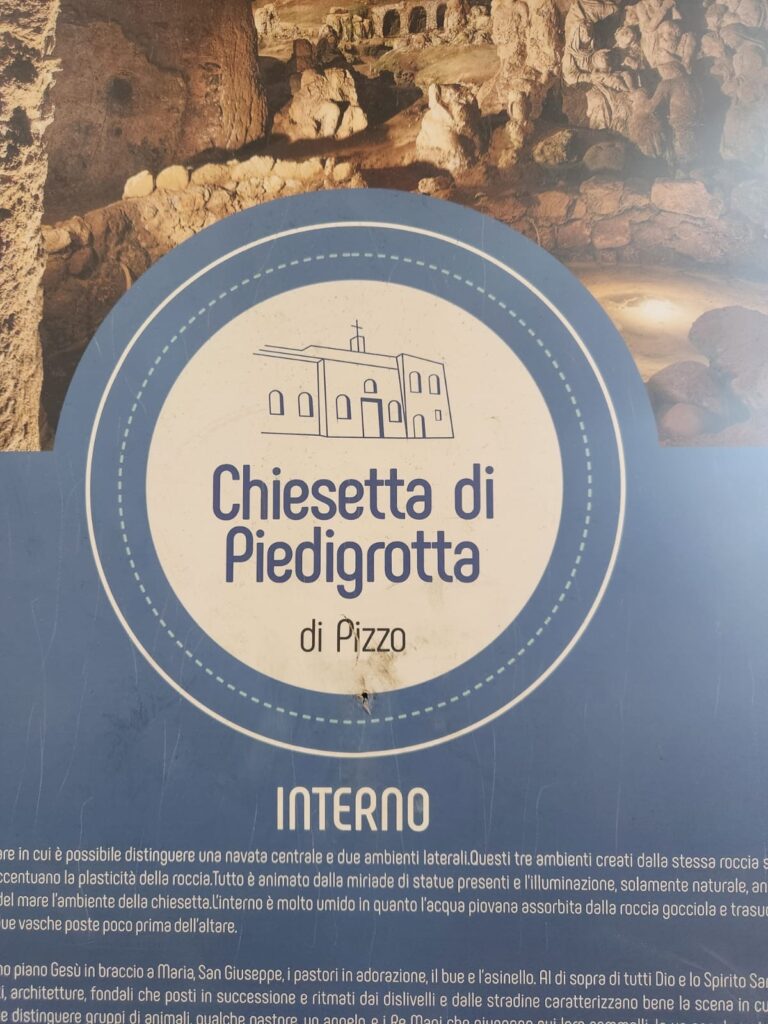
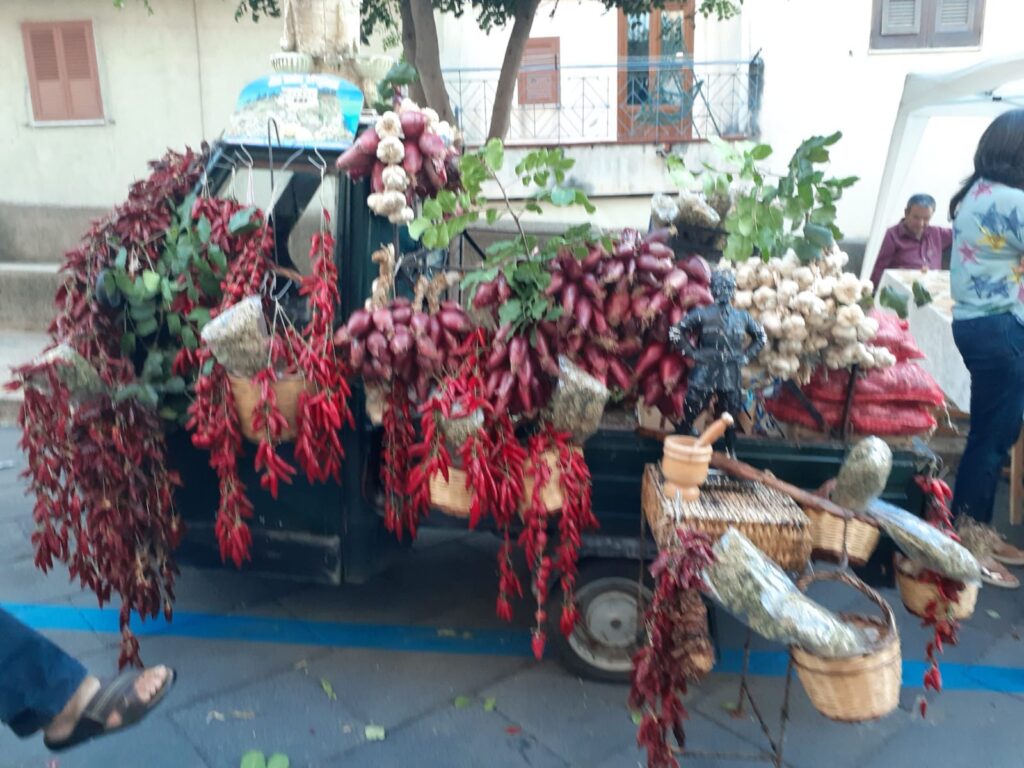
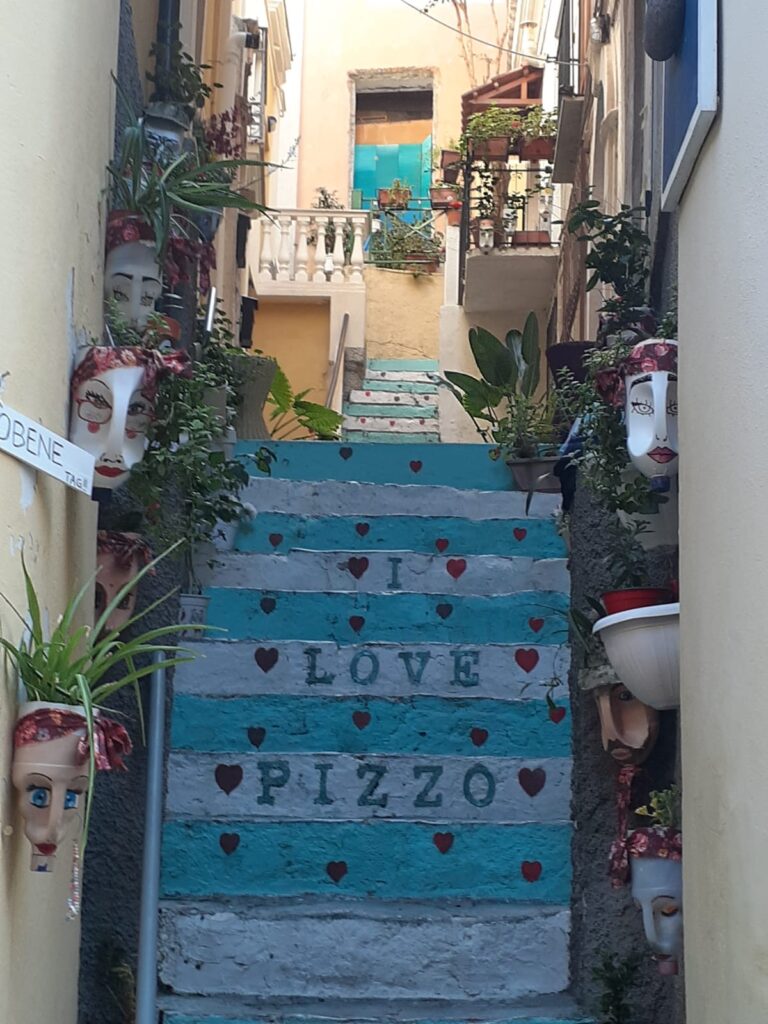
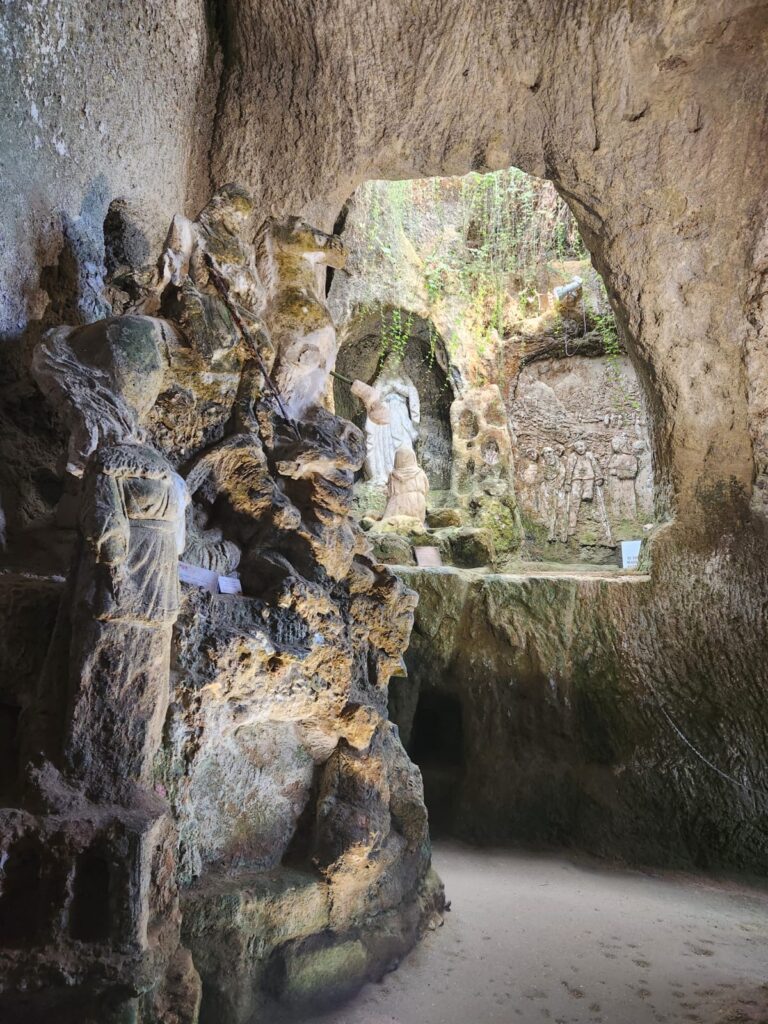
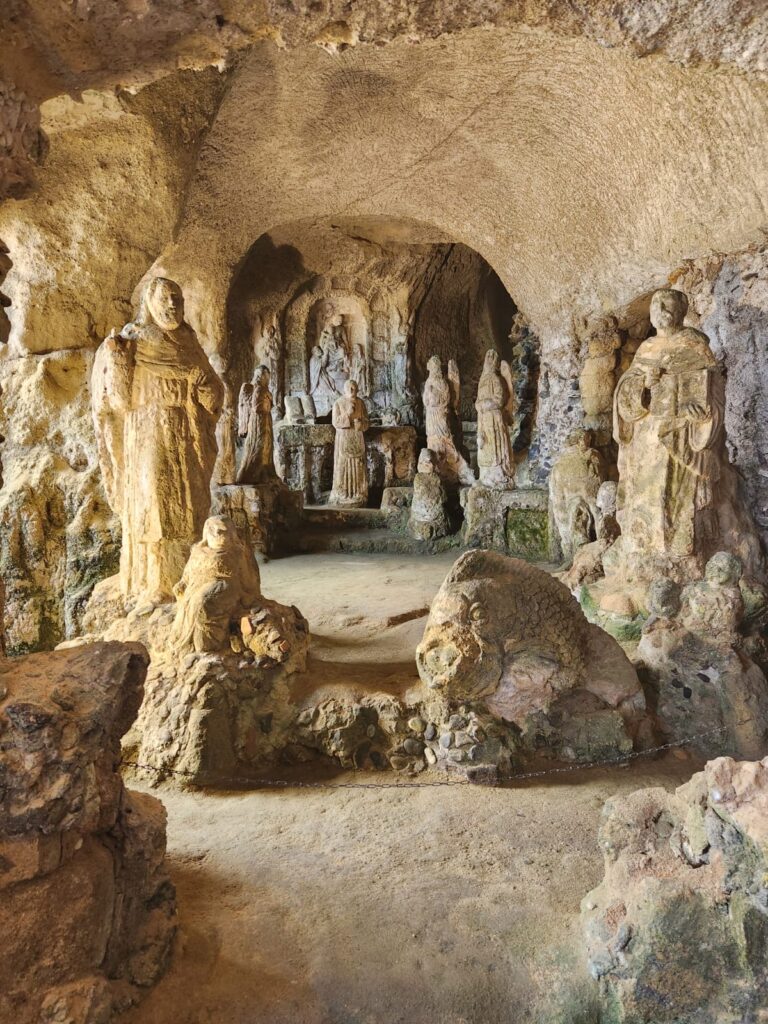
Back to Troppea for the afternoon drinking wine purchased from Serrachavello, dinner and free time.
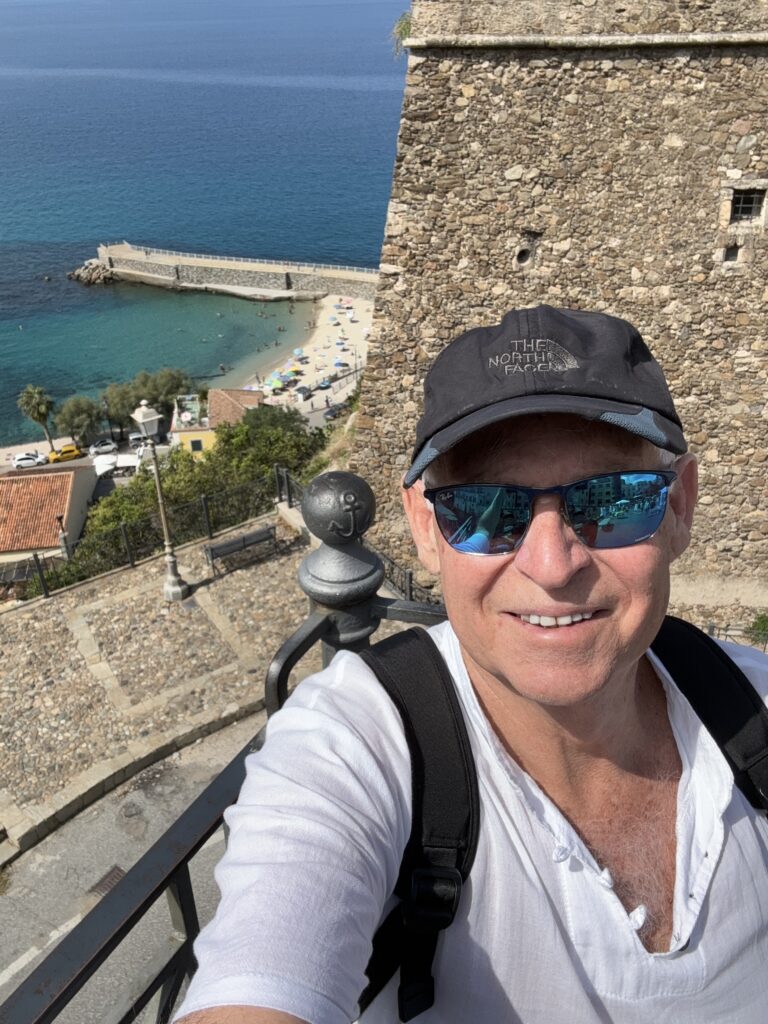
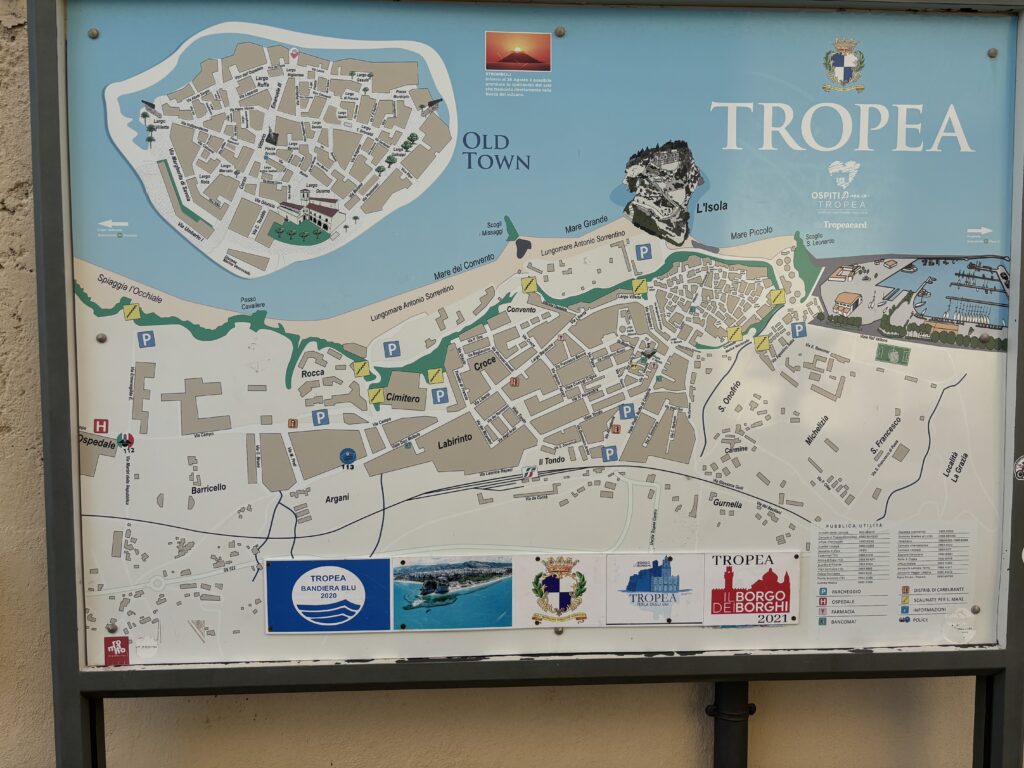
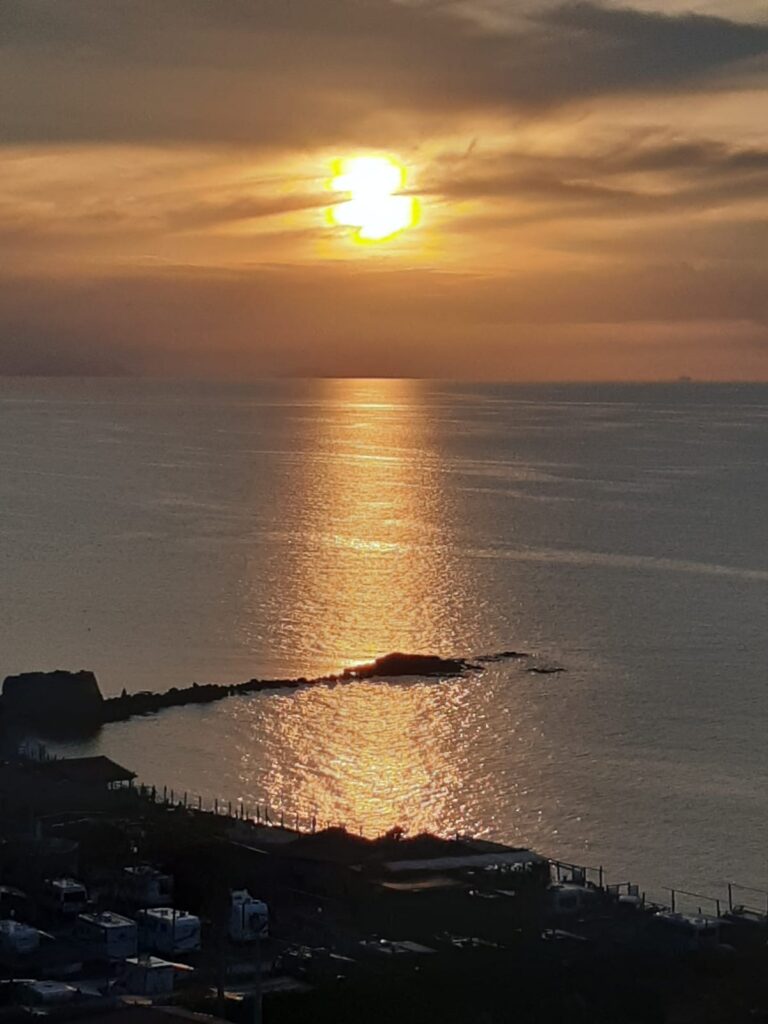
Monday 23d
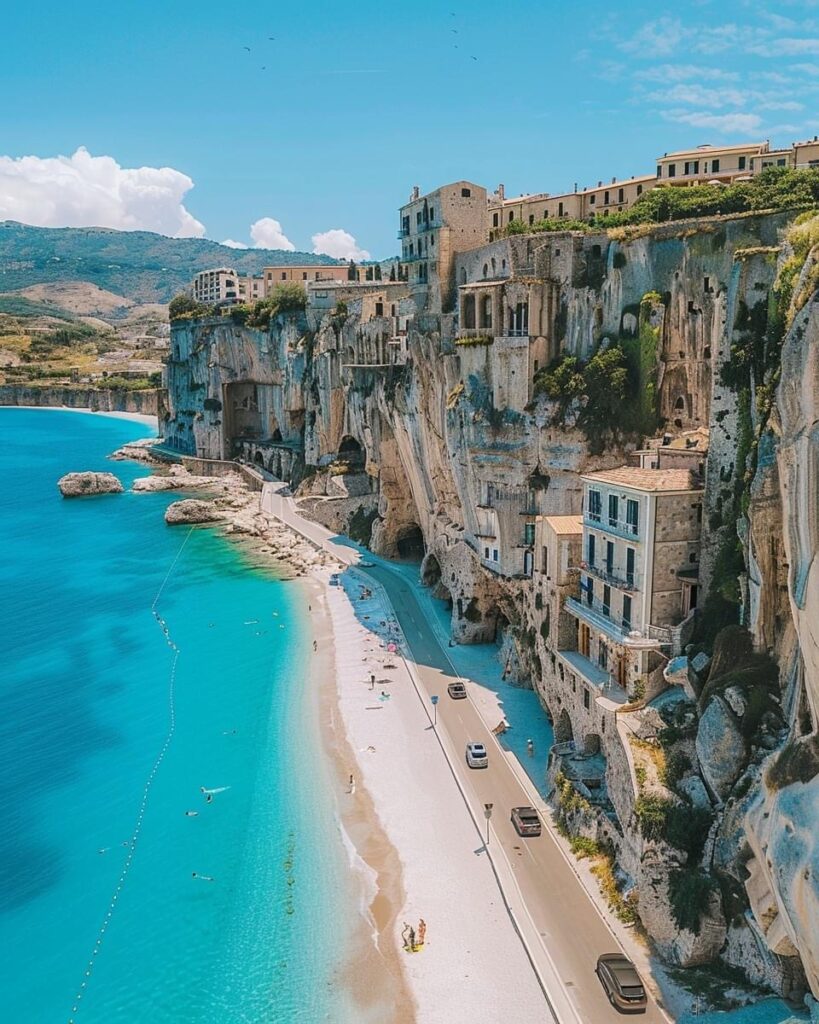
Today we head to Reggio for our final two nights on the mainland prior to Sicily. First stop is Scilla, a beautiful small town dominated by a castle but also many friendly cafes to select for lunch.
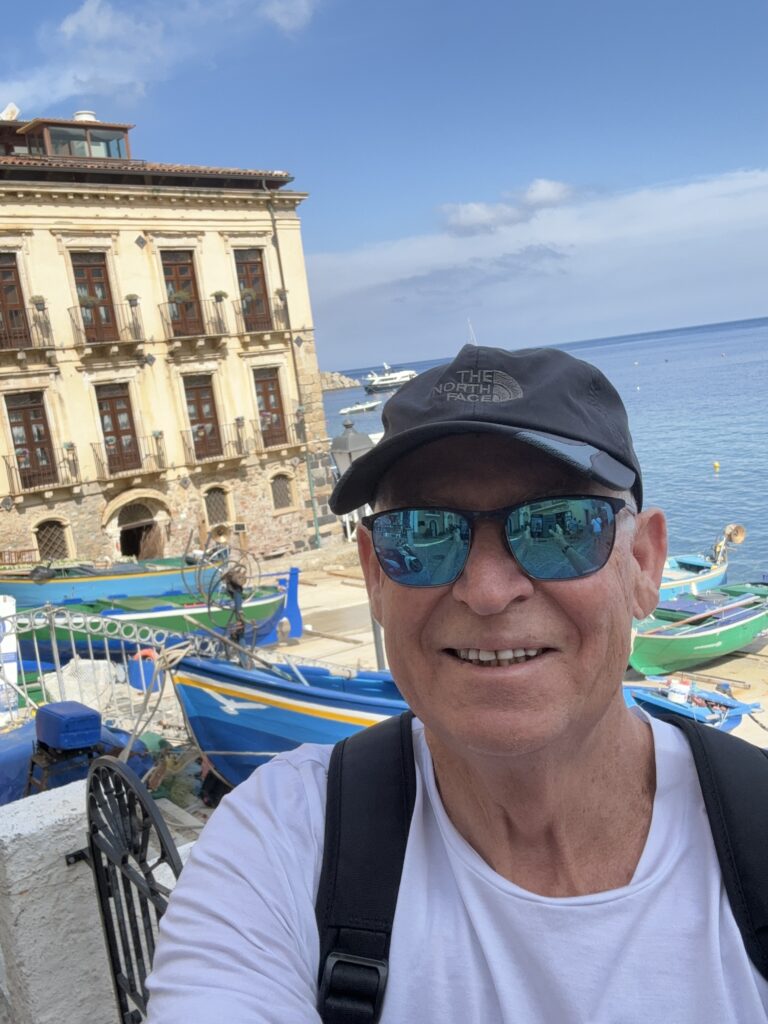
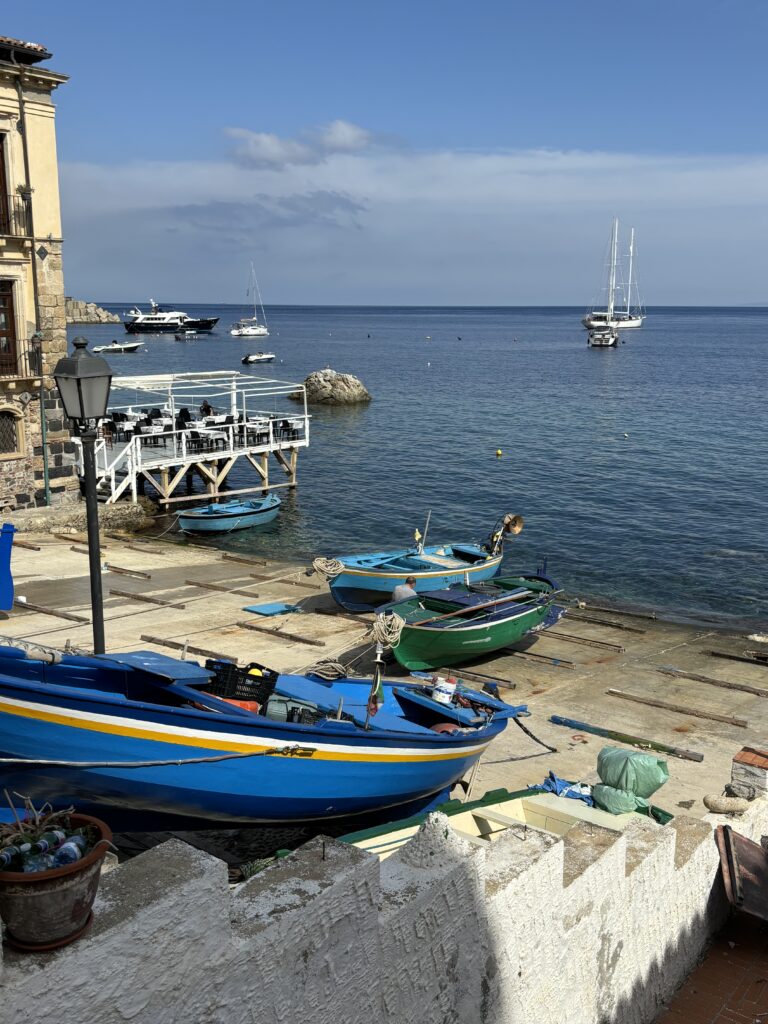
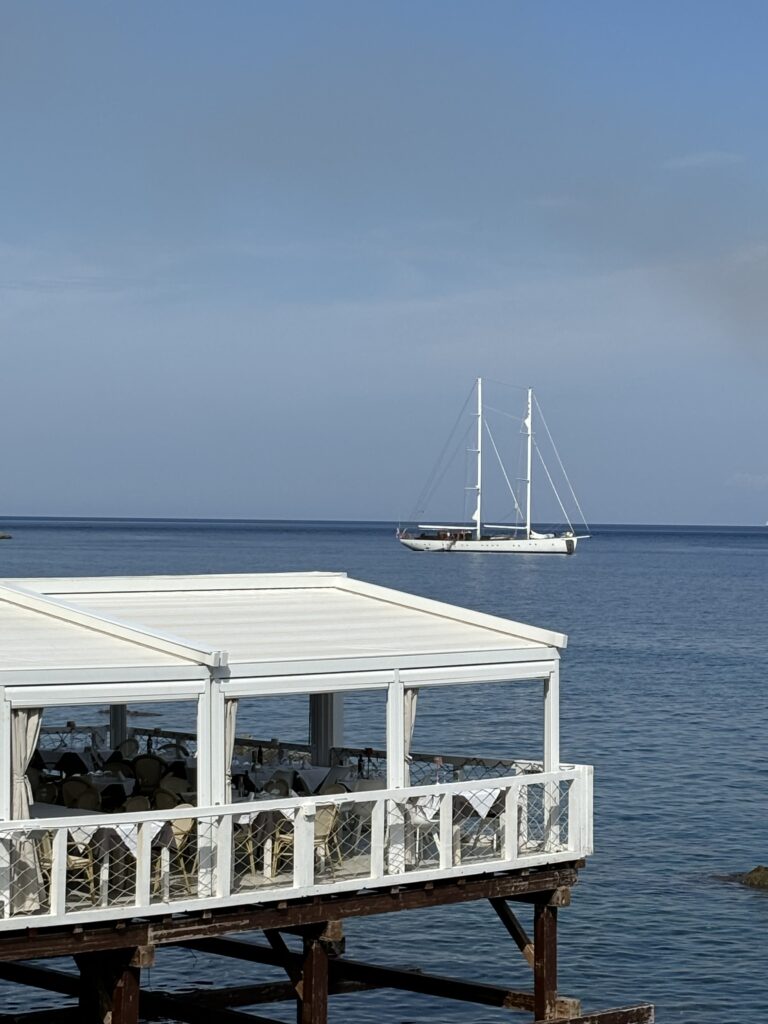
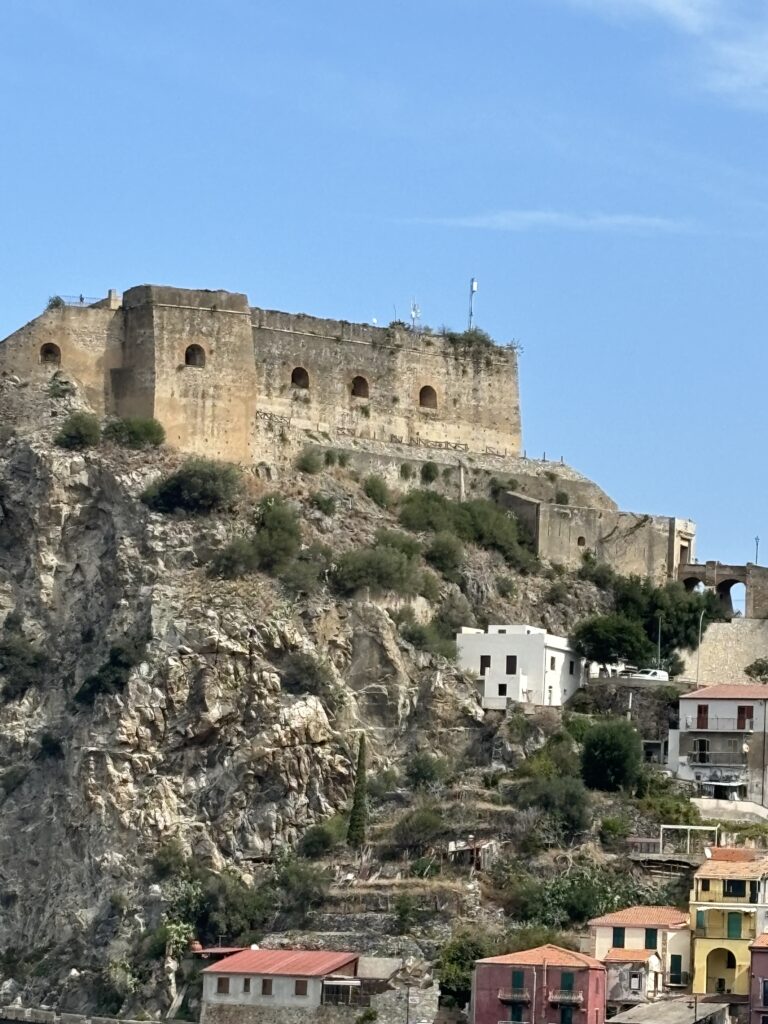
We continue our journey stopping at Pentetadillo. This is known as a ghost town situated very high in the mountains. Access by bus seems almost precarious with steep curves overlooking sheer drops some 1000 feet below. The final part of the journey is a walk up a very steep pathway. Fortunately a small bar is also found on reaching the village.
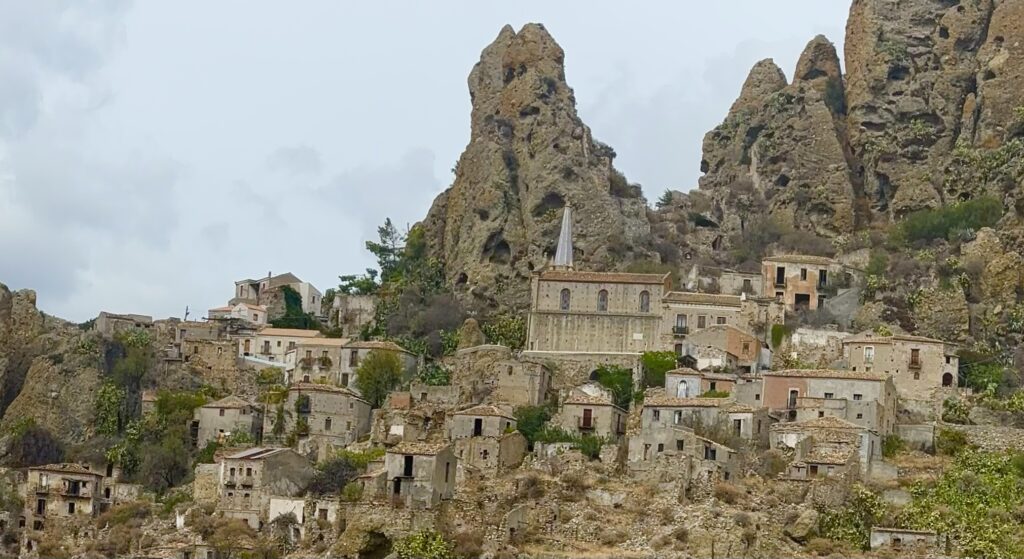
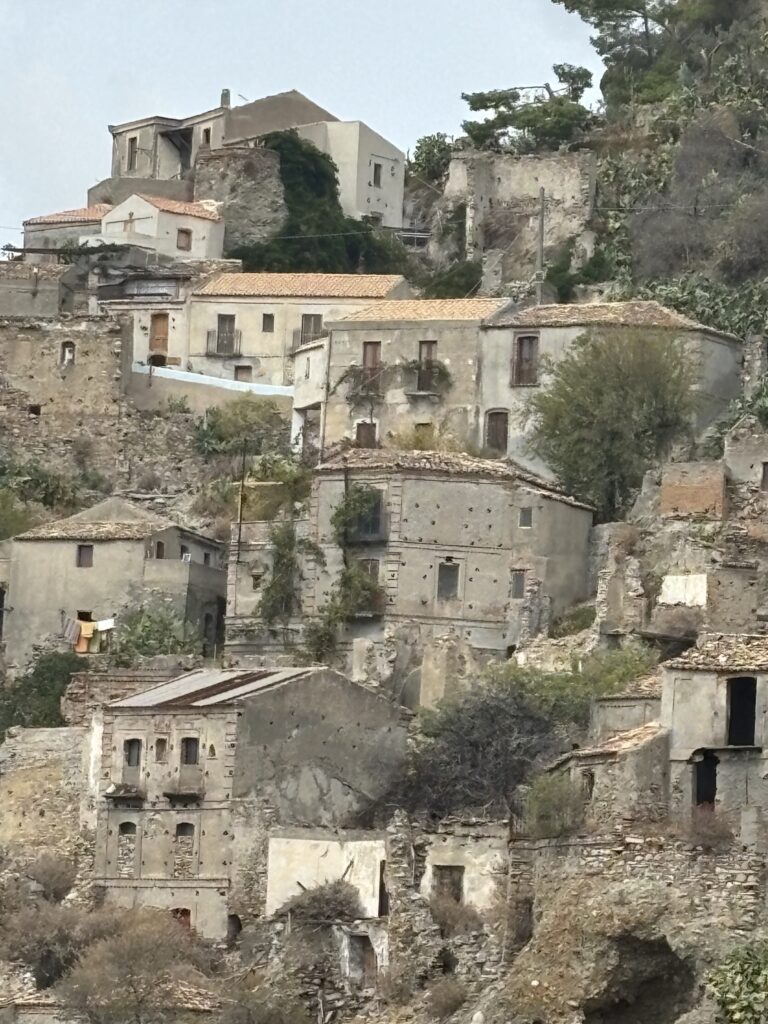
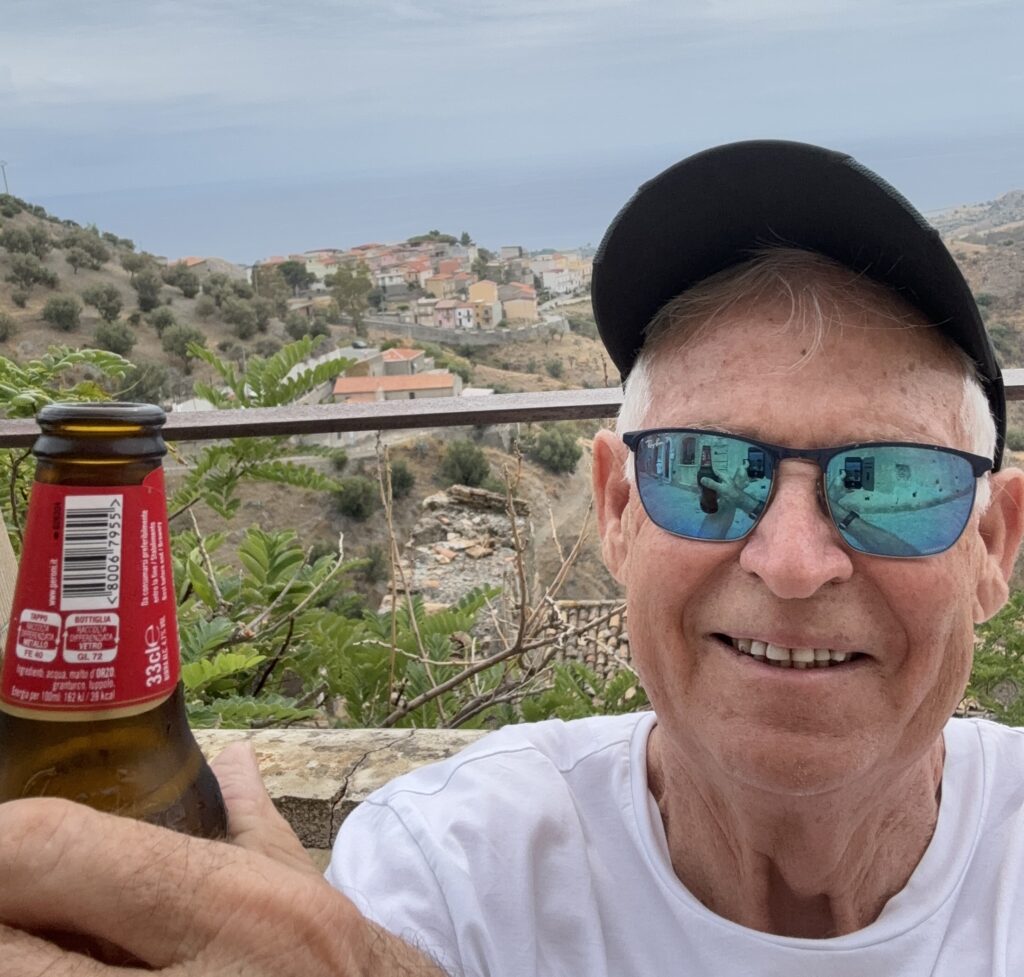
that evening we set off to dinner as a group and celebrate Gloria’s 70th birthday. I also found a bottle of San Marzano wine which I had to purchase as this is from my friend’s (Giselle Di San Marzano) place of origin. The grape is primitive which is a close sibling to Zinfandel – an enjoyable drop.
Tuesday 24
Today I ventured out on my sown starting by walking the beautiful promenade overlooking the Messina Straits to Sicily. By the end of the day I had clocked 15000 steps which was my health goal. Crazy statues churches , Reggio by night and Connie’s birthday made up a great day before heading to the island.
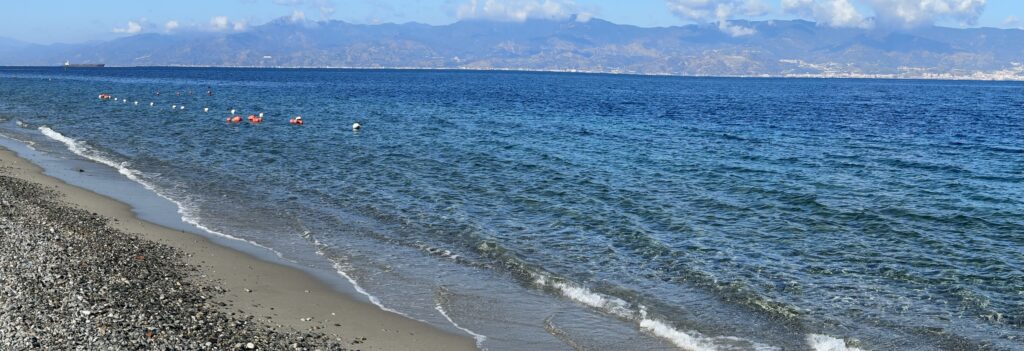
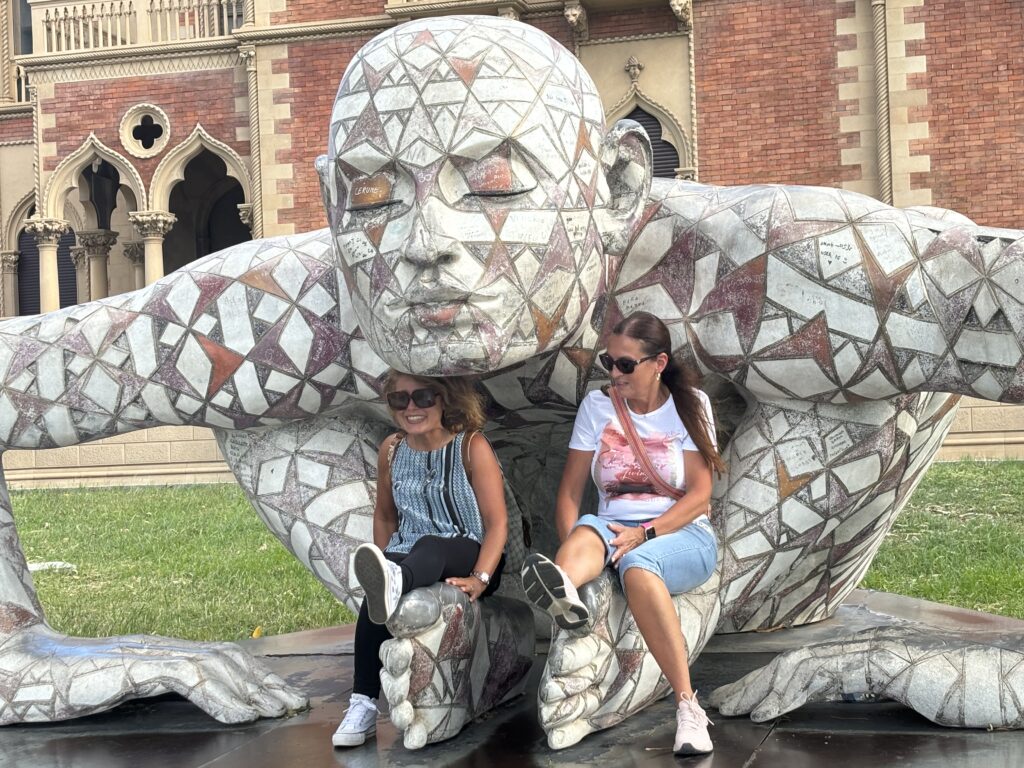
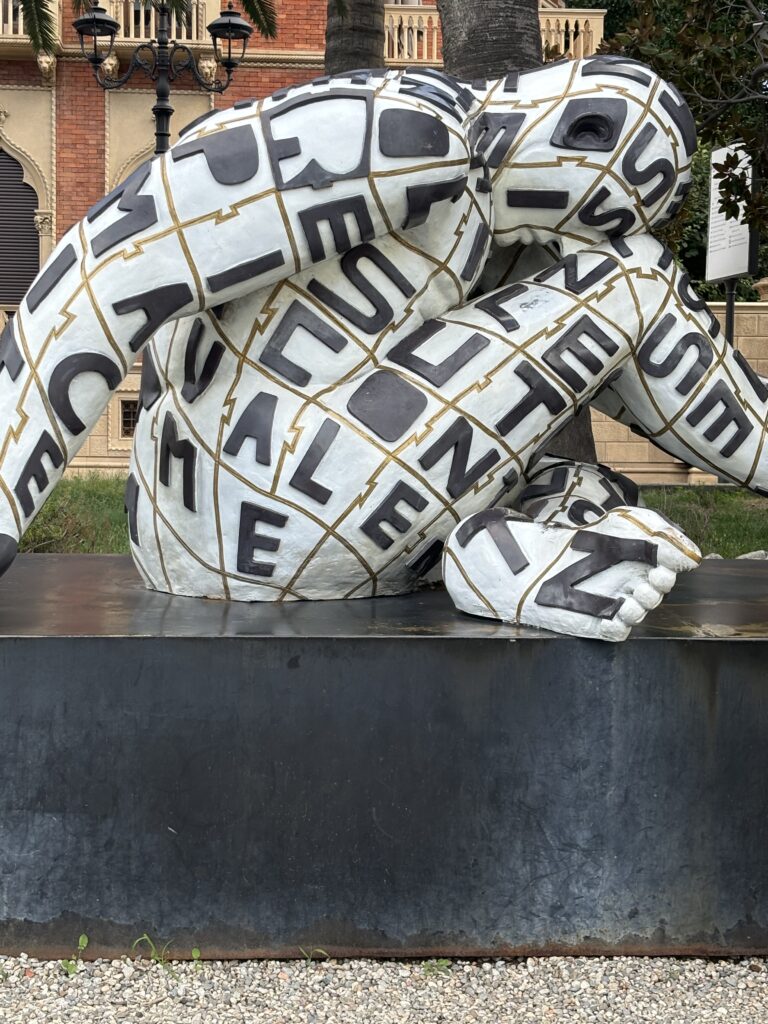
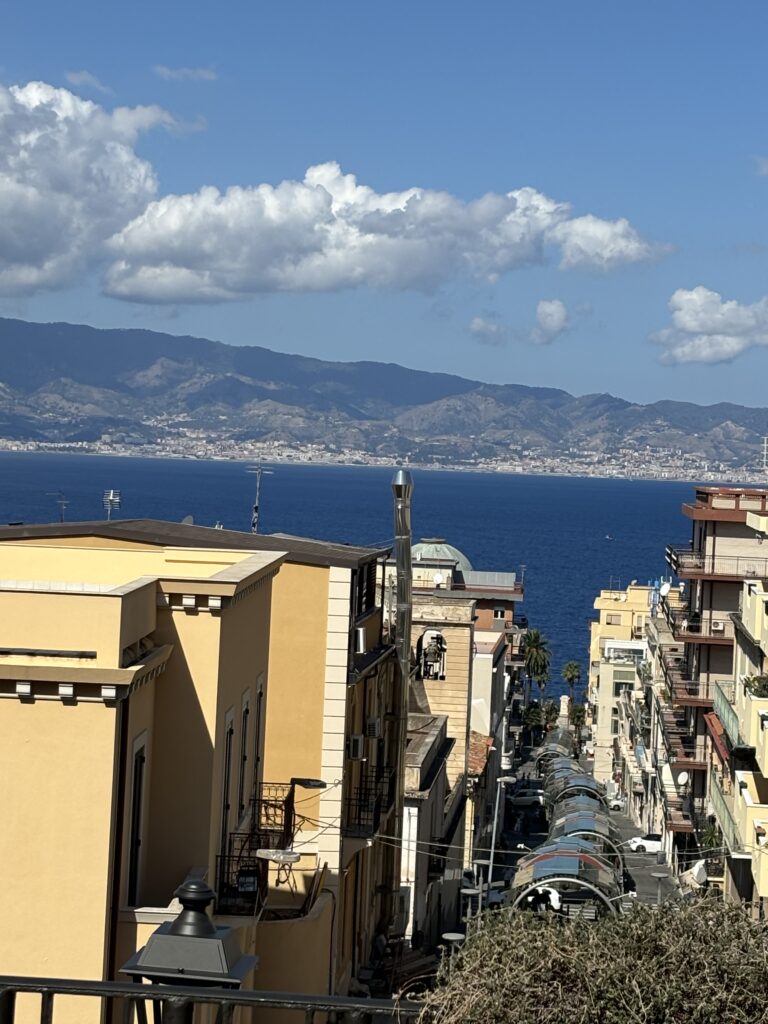
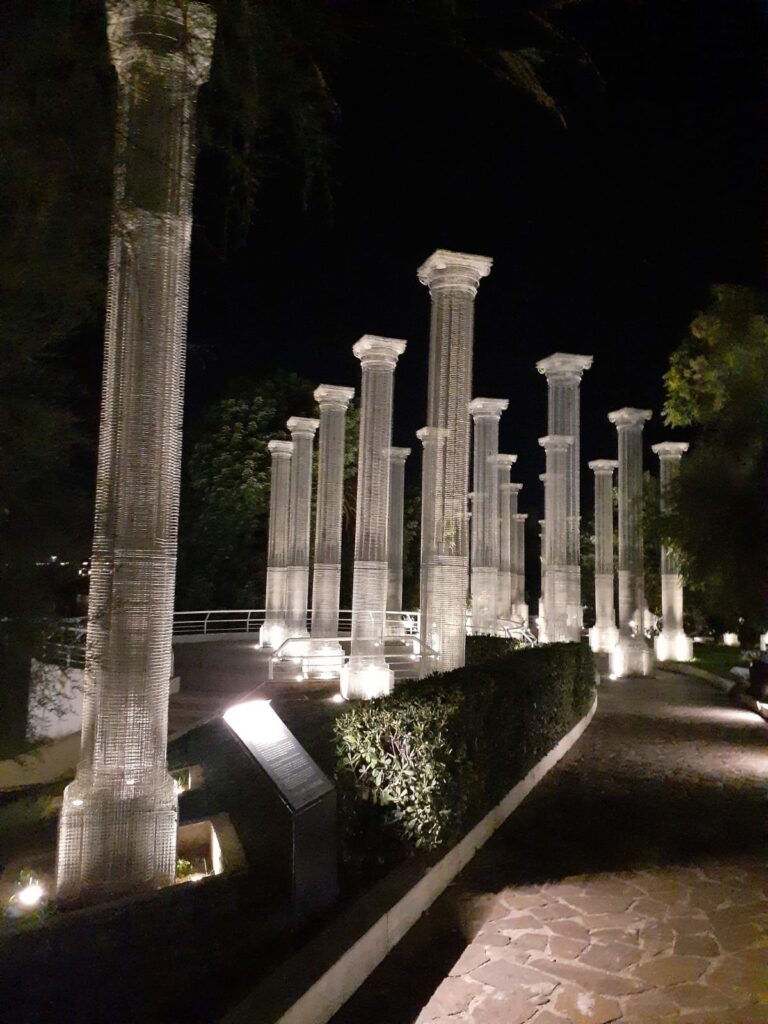
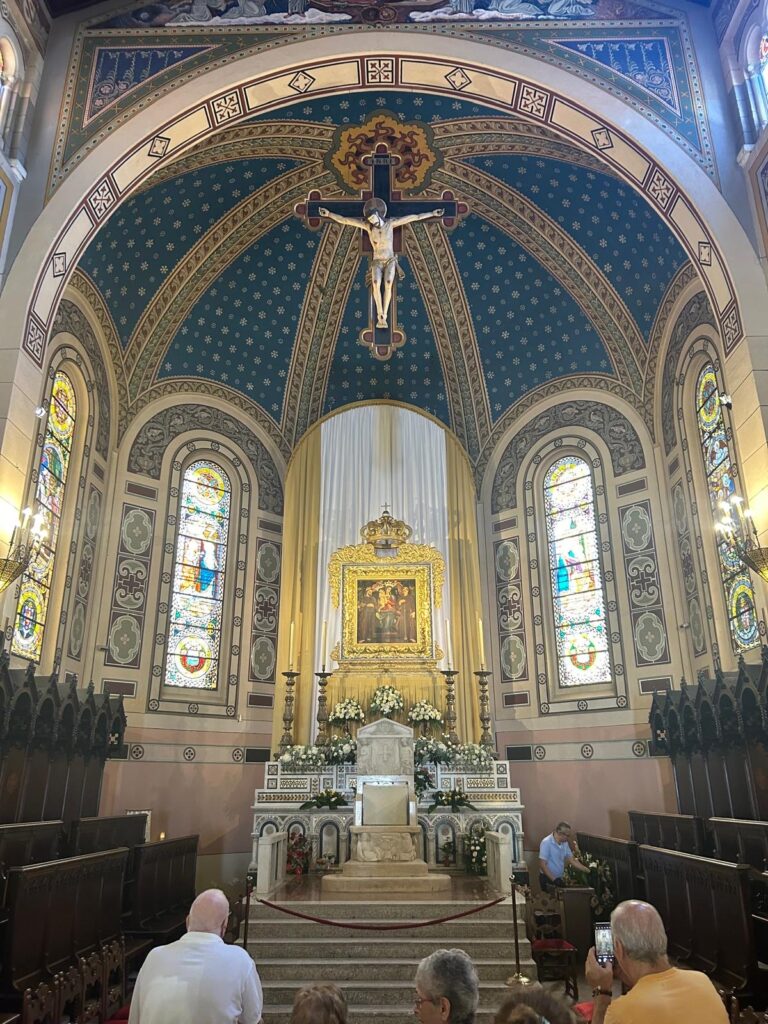
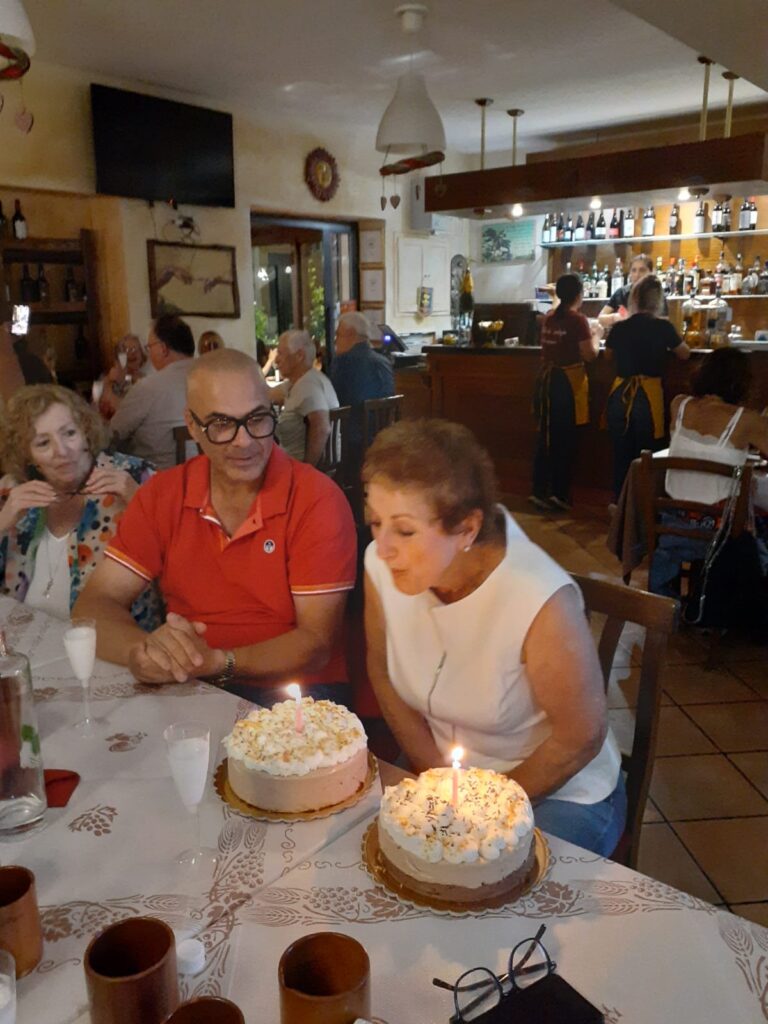
Wednesday 25
SICILY begins by hopping on the ferry bus and all for a short trip to Messina. We continued on through Messina picking up our guide Manuela who showed us around Castlebueno showcasing a historical church. We had lunch in the town experiencing rain for the first time but temperature remained in the mid twenties.
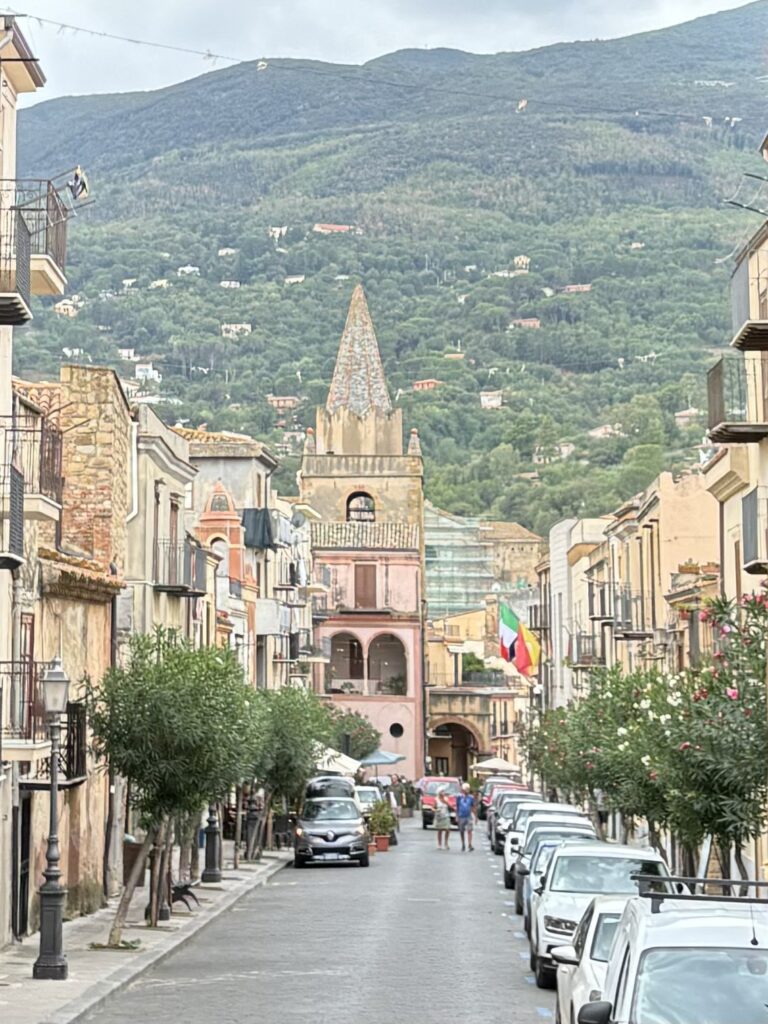
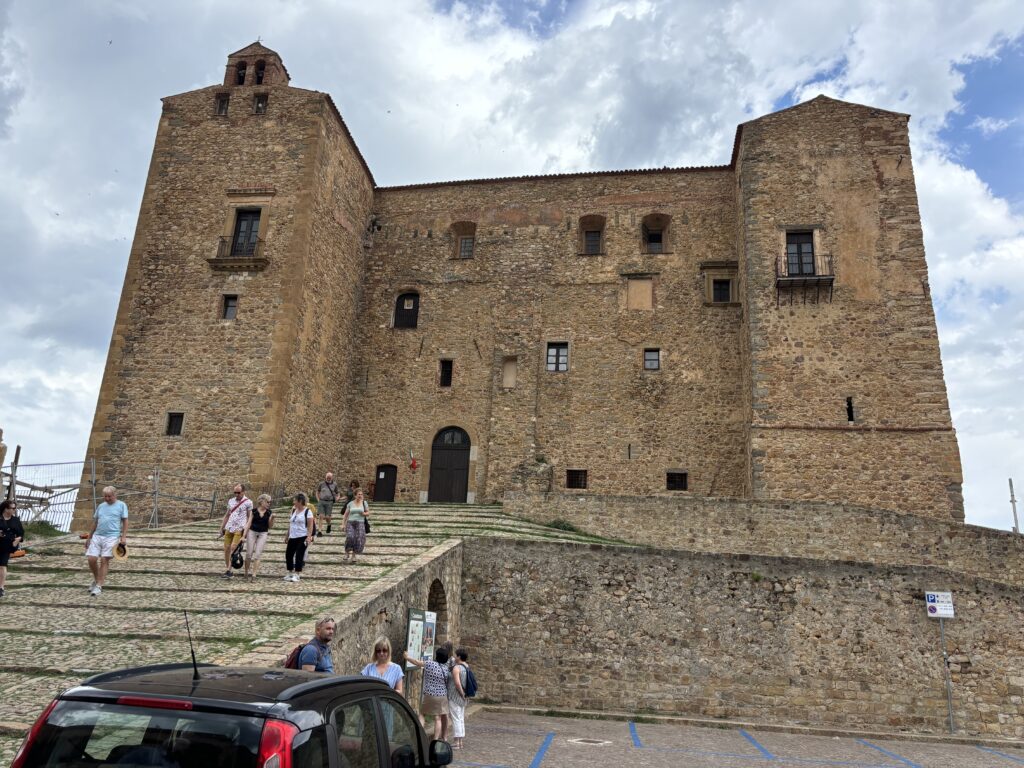

An hour further on the bus we arrived in Cefalù another amazing city. Beautiful backdrop of “the Rock” beaches packed with swimmers and sun lovers, great restaurants and a very good craft beer bar. Amazing sunsets also a feature.
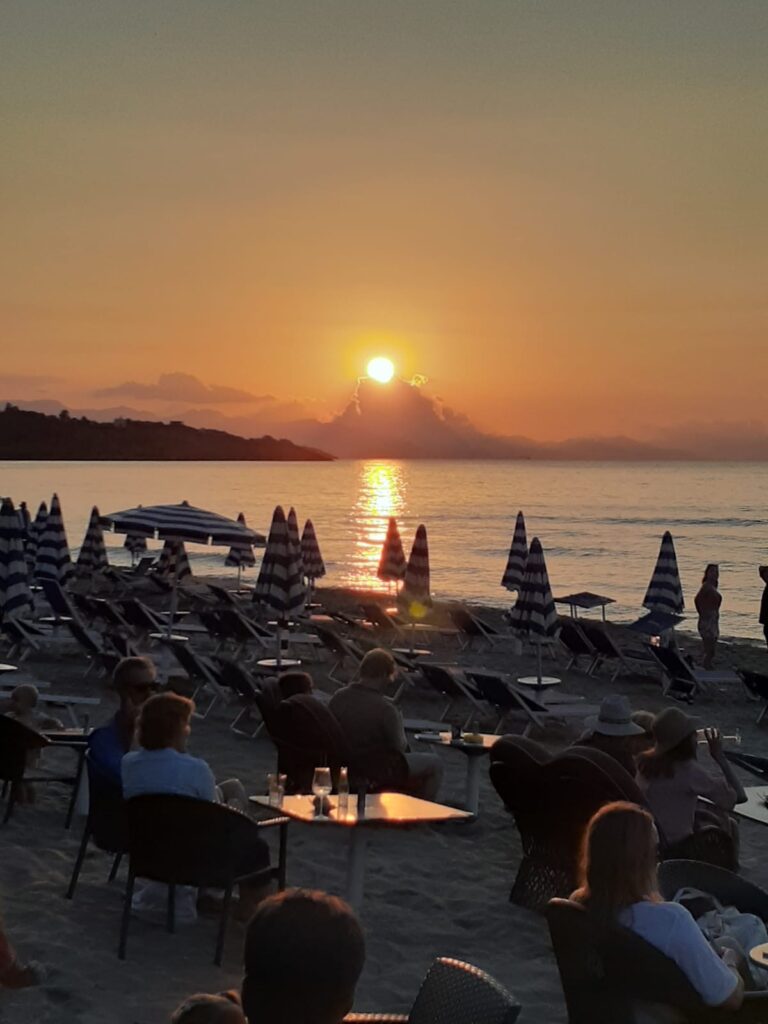
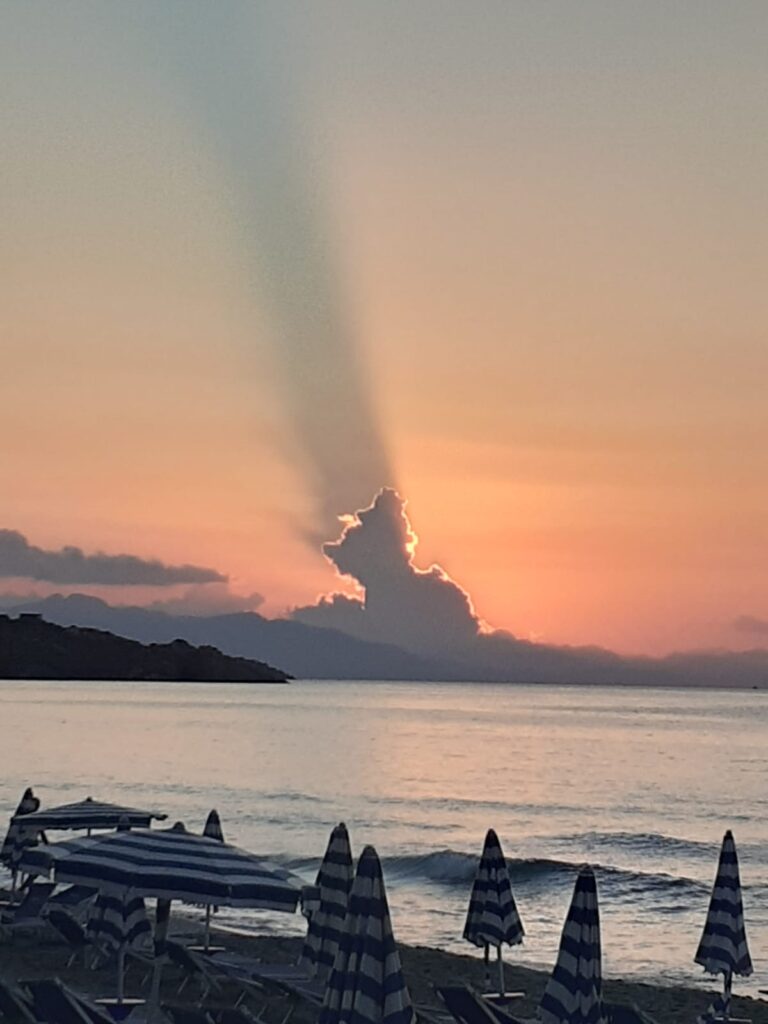
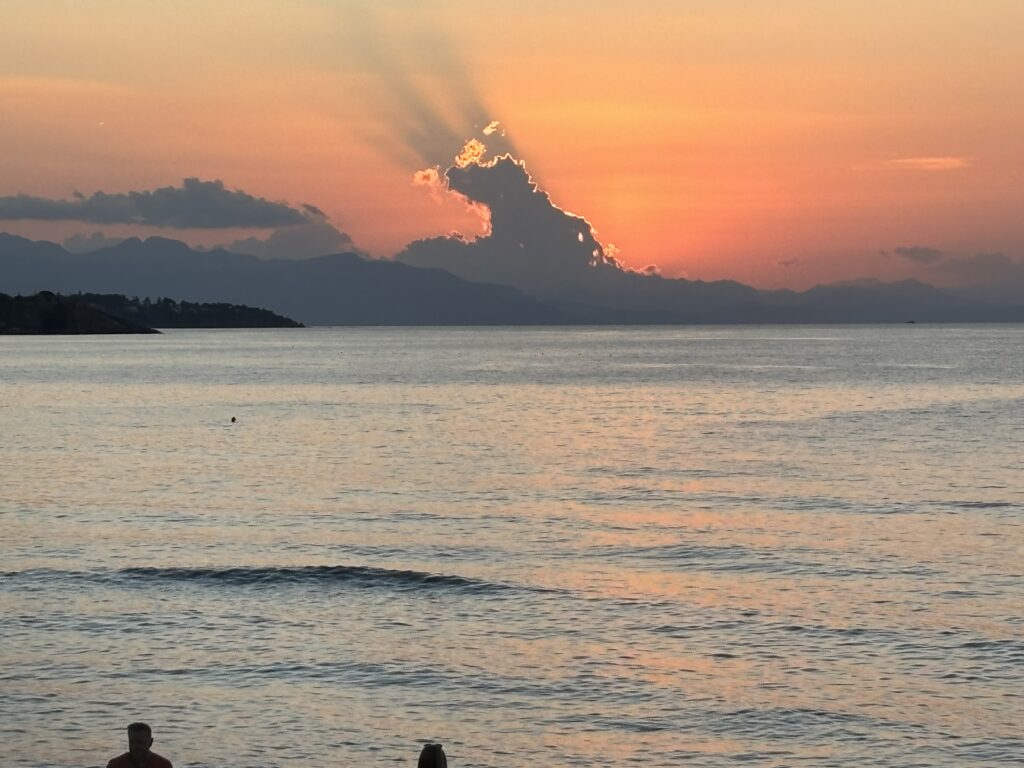


On Thursday I was a little hungover due to far too many pints with Jimmy from Edinburgh the night before. It was good to catch up and chat with someone new. After a slow morning I decided to punish myself by climbing La Rocca. Over two hours from the hotel there and back, with the climb to the castle quite challenging. Pathways were there but really rocky trails. 50 minutes up and 30 minutes down to and from the entrance. A bar at the end required a quick beer. The views made the trek well worth it and photos cannot do it justice.
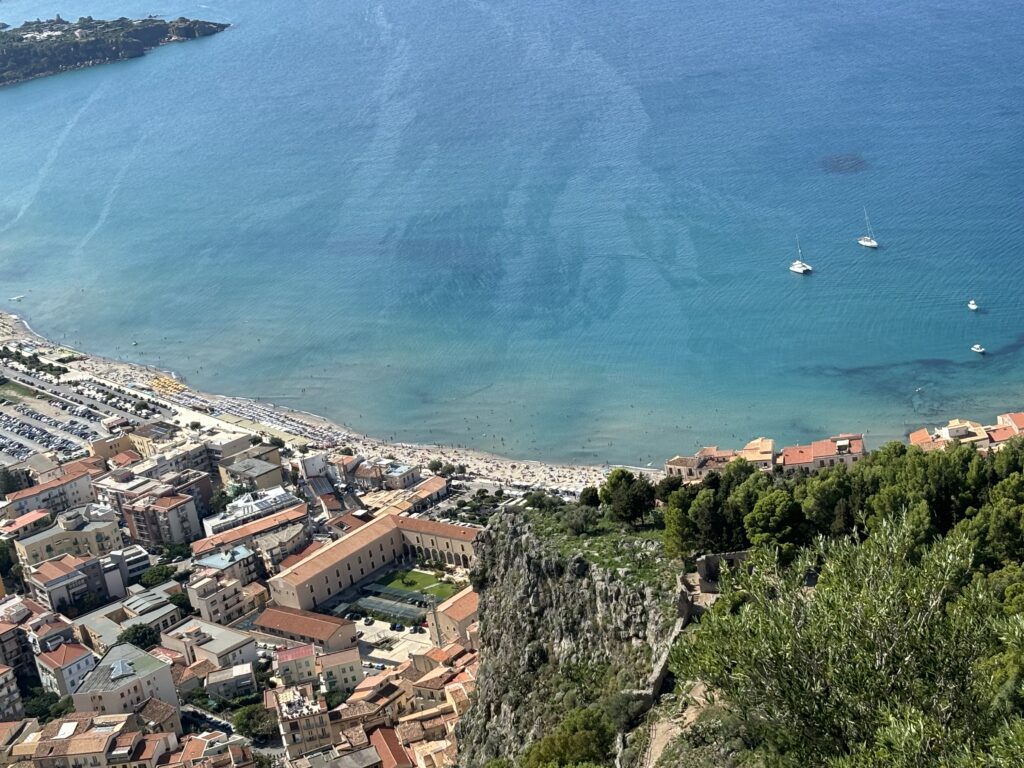
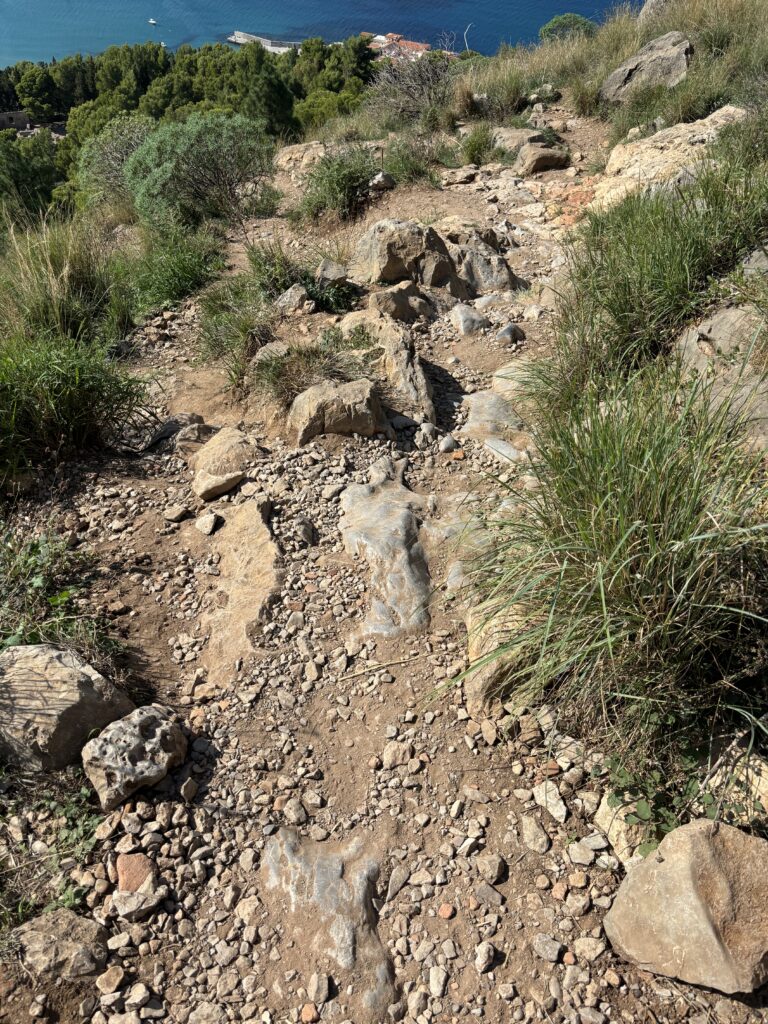
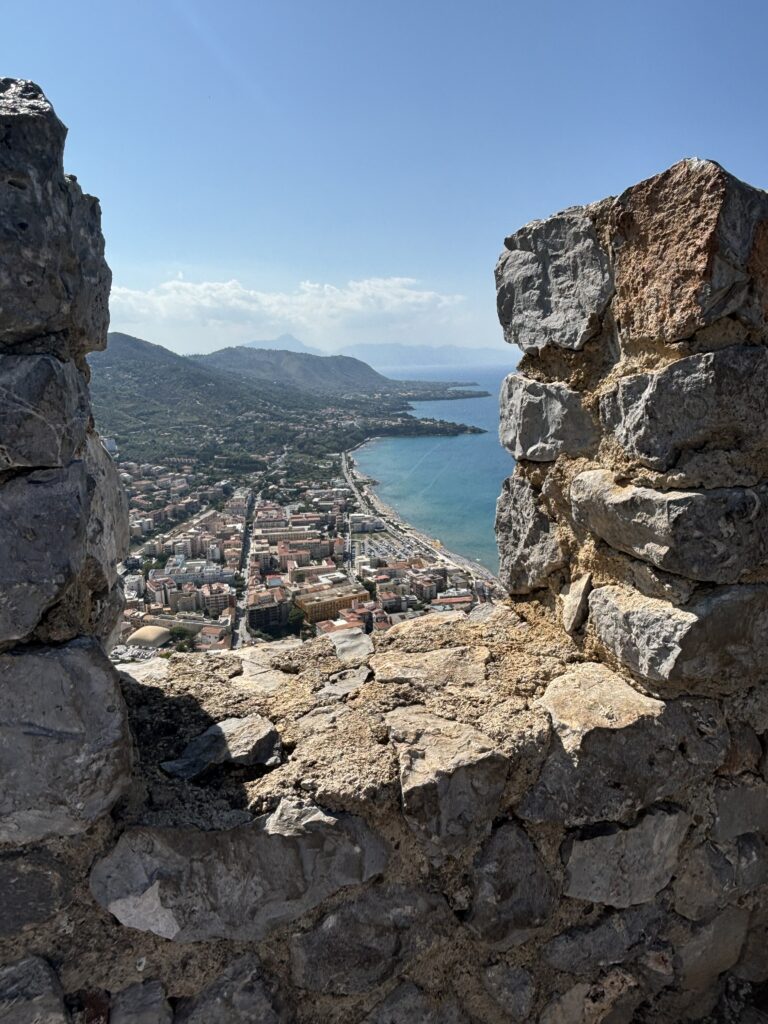
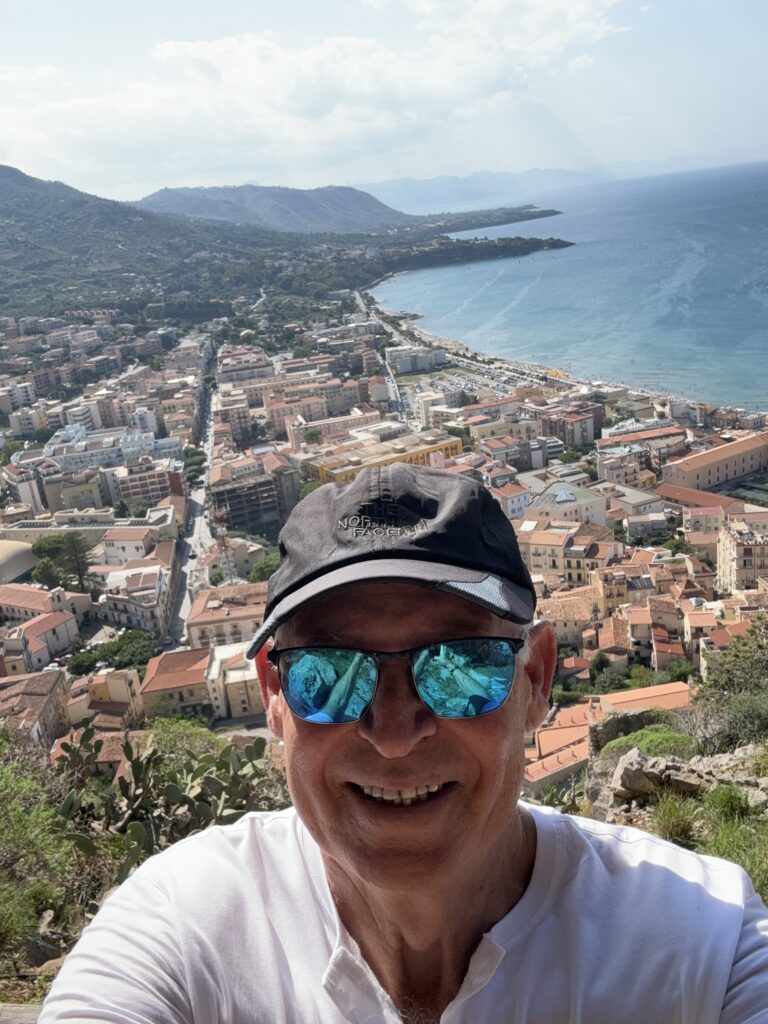
Friday September 27 we depart Cefalu and head to the capital of Sicily, Palermo. Sicily has a population of 5.5 million and is one third the size of Tasmania. Palermo is a city full of character, old buildings and a vibrant cafe restaurant scene. It was 32 degrees when we arrived very humid to go with this. Many including myself passed on the walking tour at 2:pm. On our second night we enjoyed a street food walking tour. Food was generally to “bready but lovely guide and interesting.
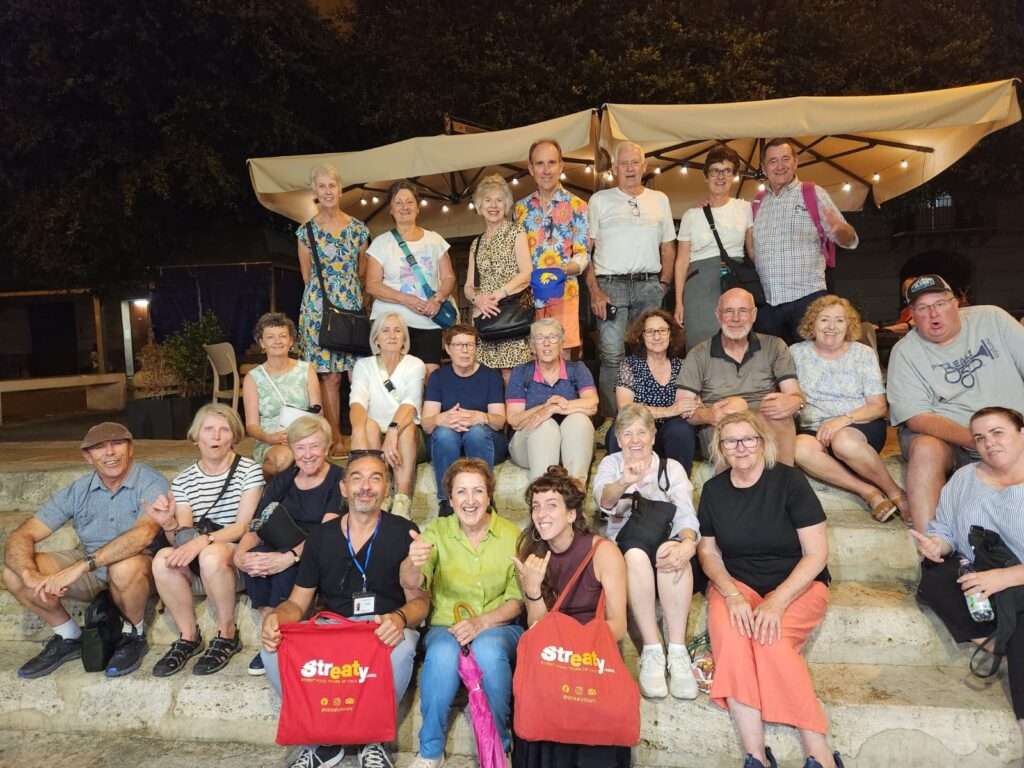
September 29 on the move again heading for a 2 night stay in Trapani.
Erice
On the way we visit Erice, a 3000 year old city perched 750 metres above sea level. The access road for the bus was more than a little scary, particularly when a bus came form the opposite direction. We have faith in our driver Salvo and arrived safely. A tour guide showed us around outlining the history of the city from its early settlers the Trojans after losing the Carthaginian wars. Taken over by Arabs, Romans Greeks the city has its current name bestowed by Mussolini who was a fan of the Roman Empire.
it’s a long way down.
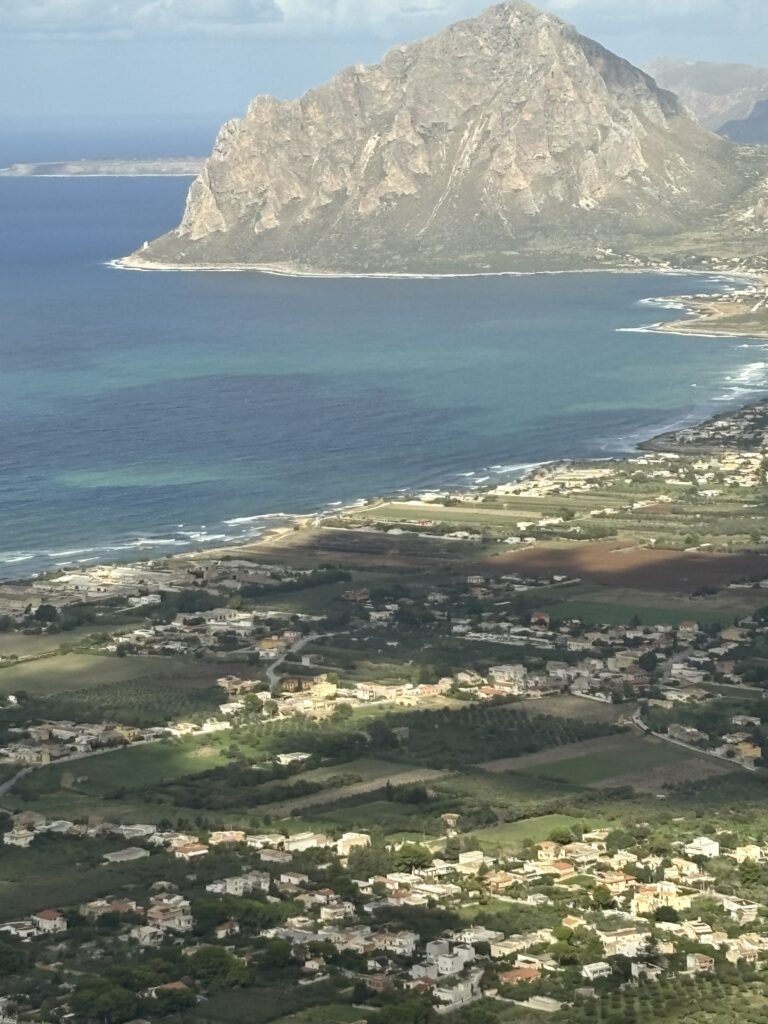
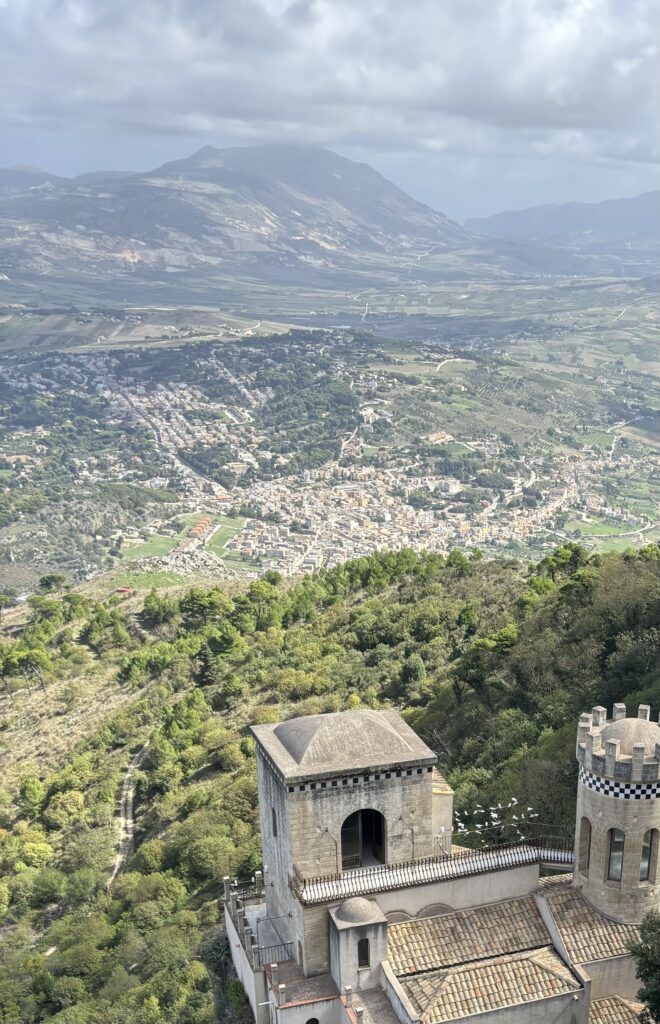
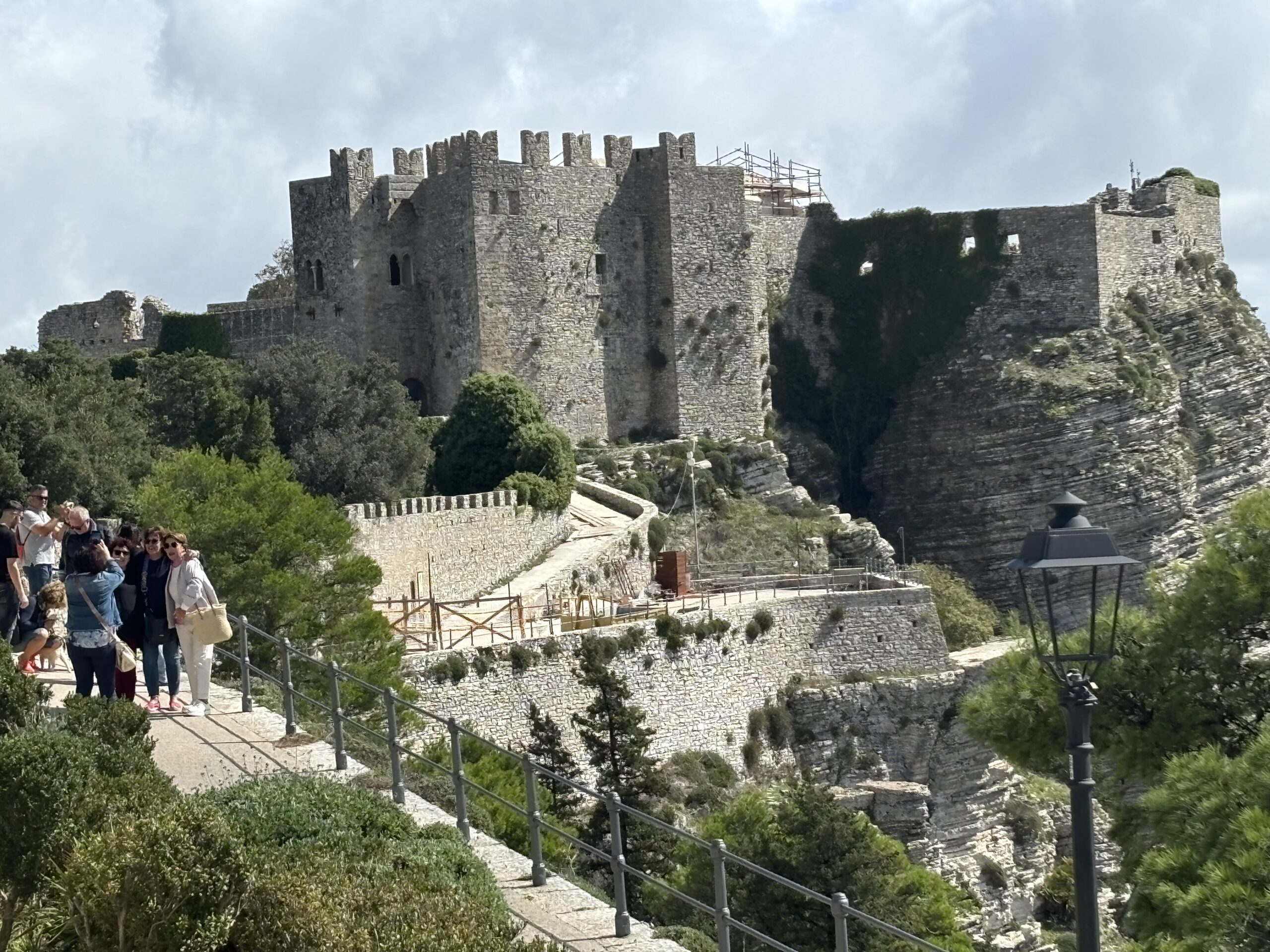
The castle in Erice looked like it was easily defended but still overcome by various invaders throughout its history.
following our epic trip to Erice, the next day we boarded a ferry to the island of Favangia. Beautiful touquoise waters which we got to swim in. A road train tour of the island and a ferry tour around adjoining islands all made for a relaxing day.
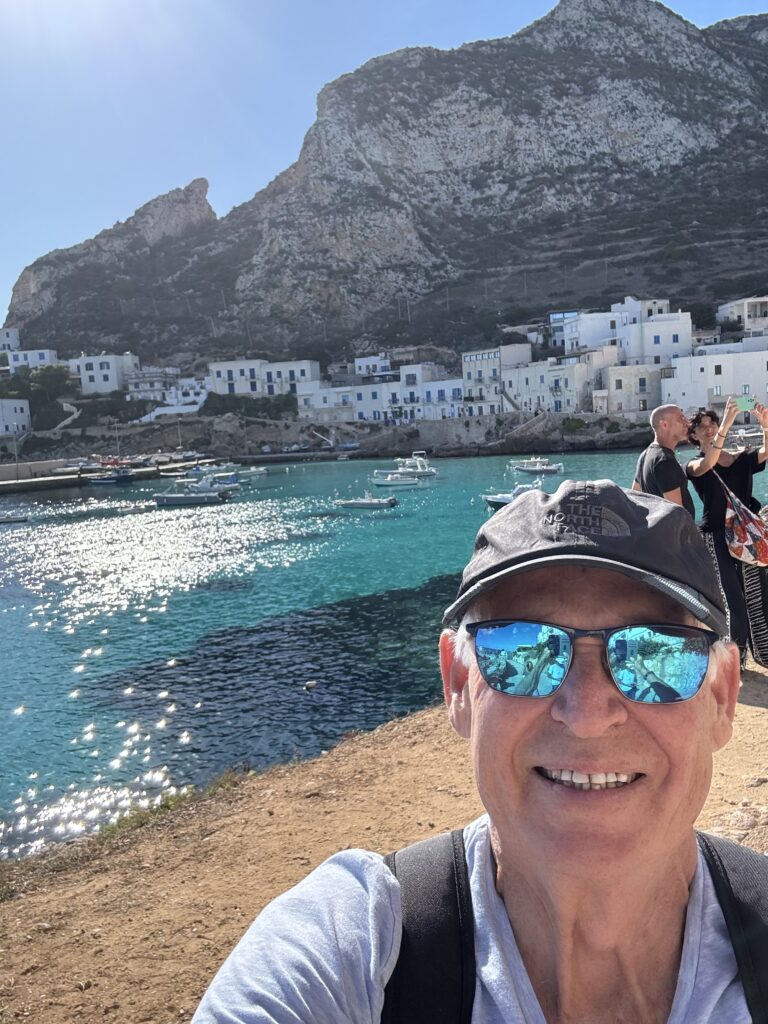
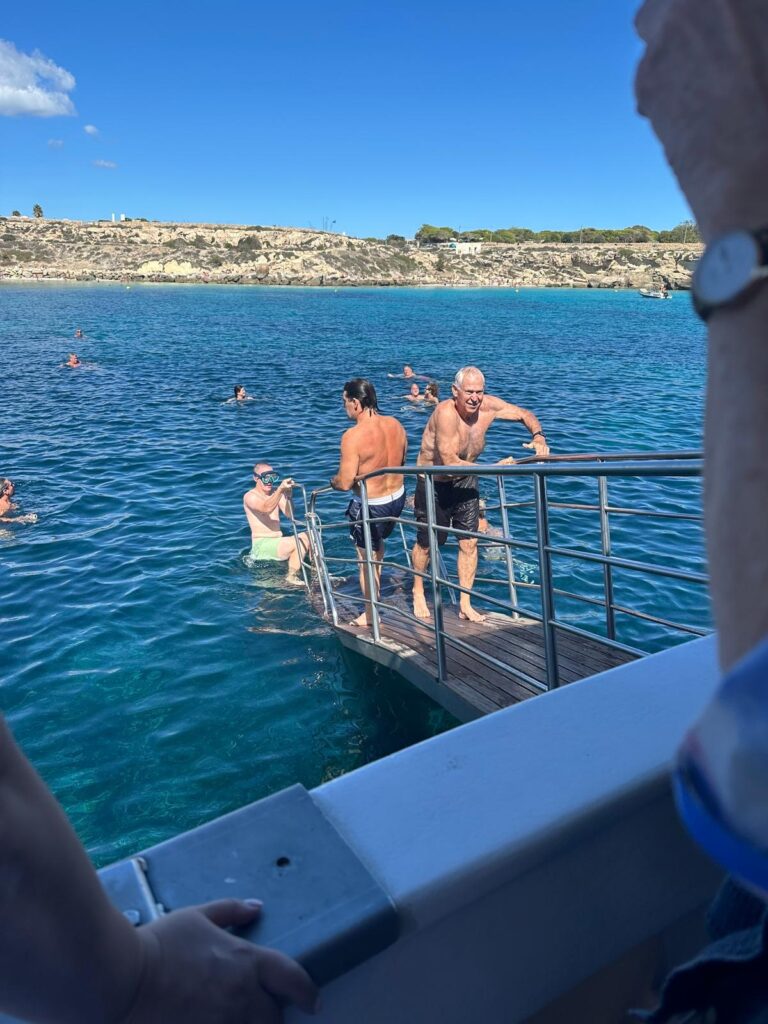
Tuesday October 1st.
On the road again heading for Agrigento. This is a long day setting off at 8:00am and arriving after 6:00pm. We drive through Marsala stopping at the seaside town of Mazzura. Very interesting with its Tunisian influence and then modern Sicilian shops and cafes in the Main Street. The Tunisian area is marked by art works showing their heritage, with one house in particular quite stunning.

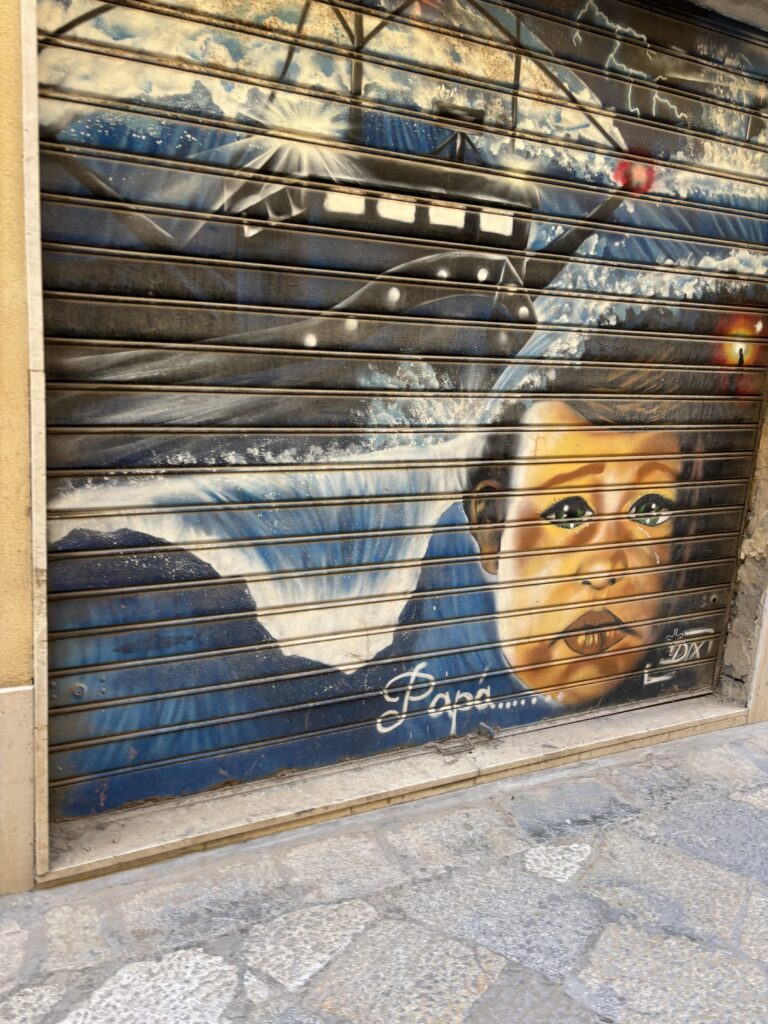
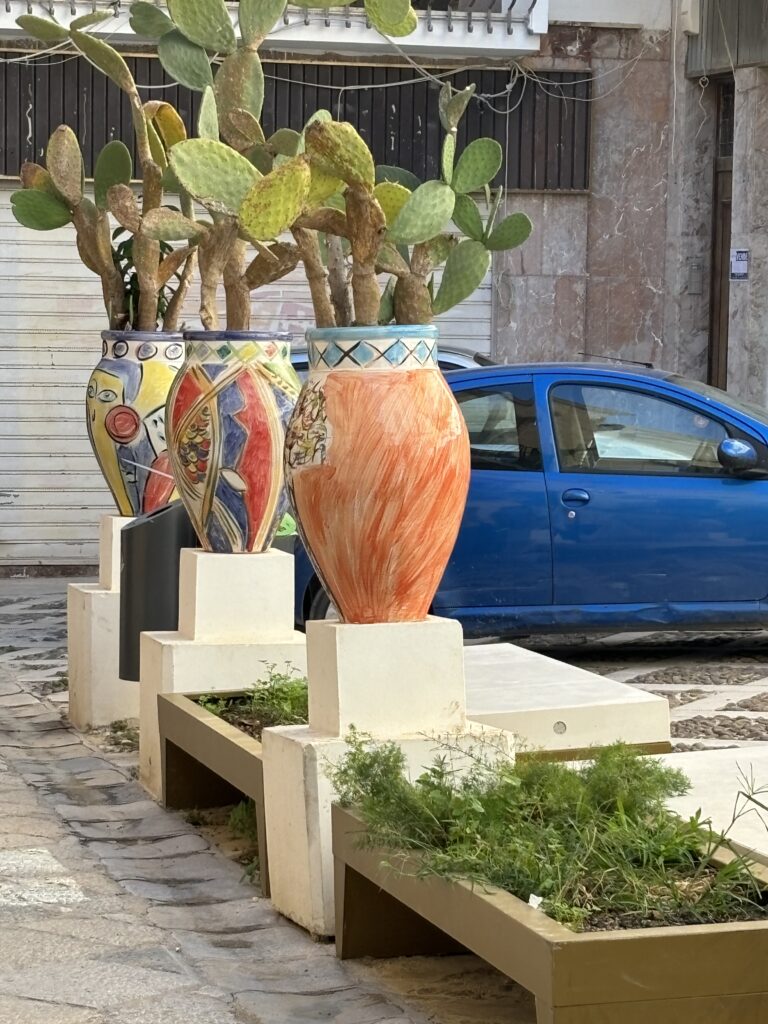
after some free time we headed to Gorghi Tondi Winery where we sampled wines paired with food. The wines were good without being exceptional but a very pleasant afternoon.
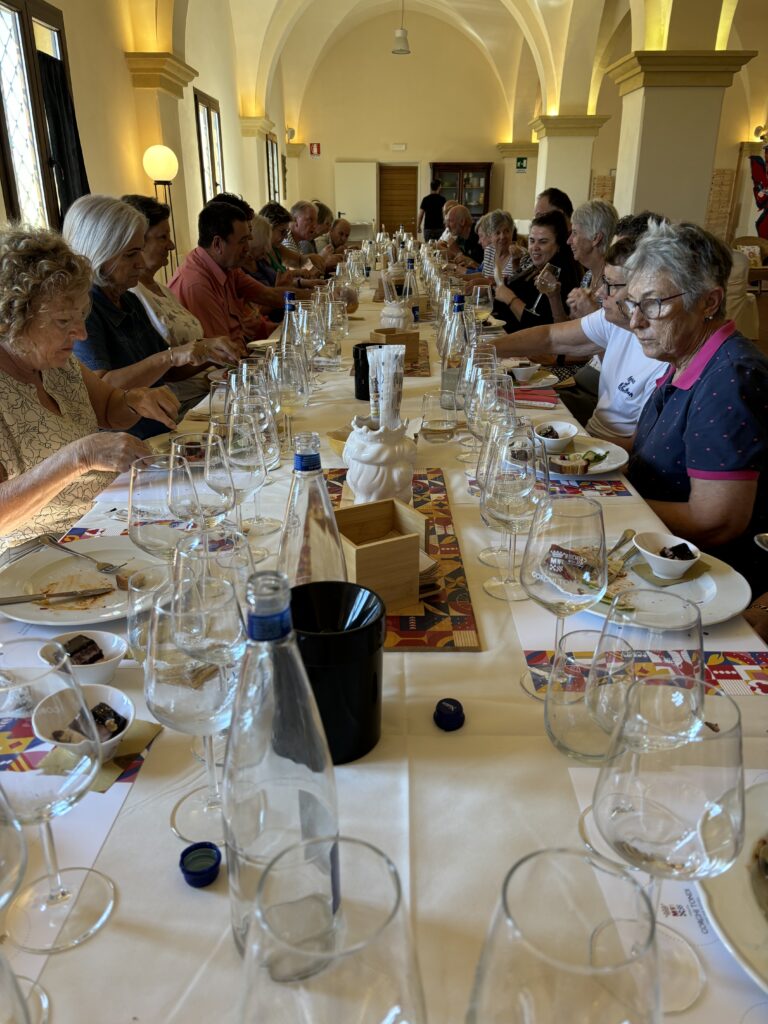
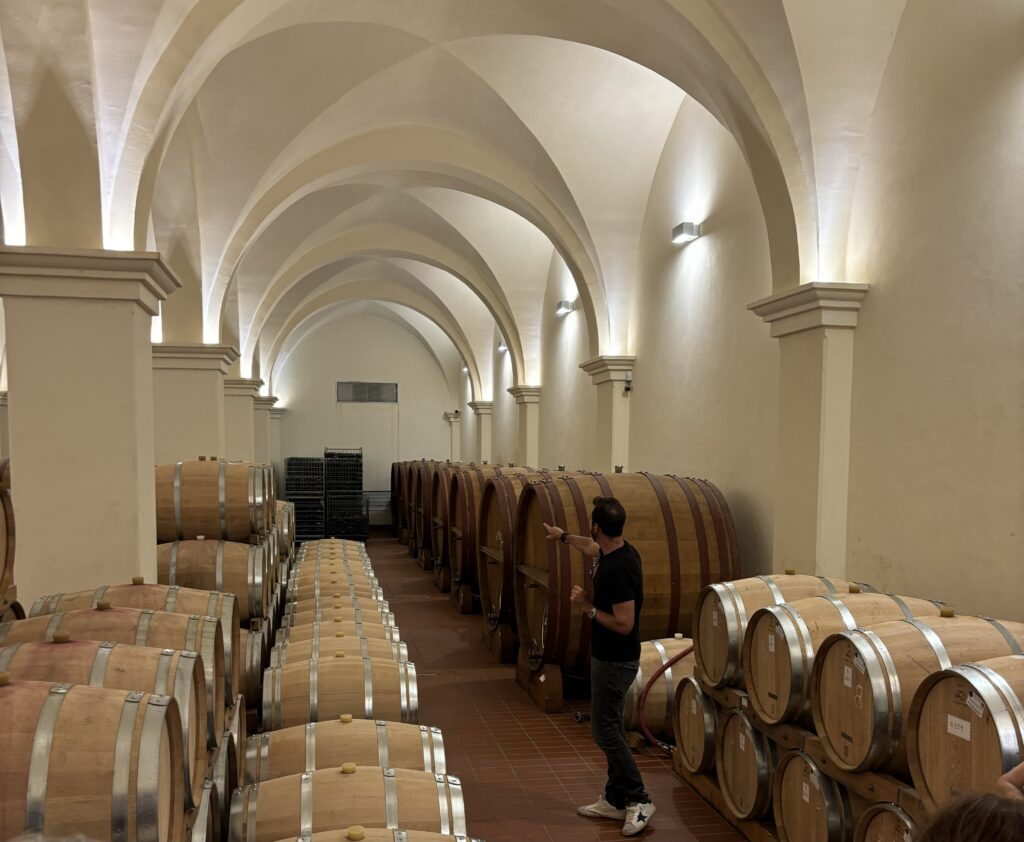
continuing to Agrigento town we stopped briefly at the Turkish steps, a geological phenomena, checked into our hotel then out for dinner at Sal 8. This had the best menu that I have seen I 4 weeks.
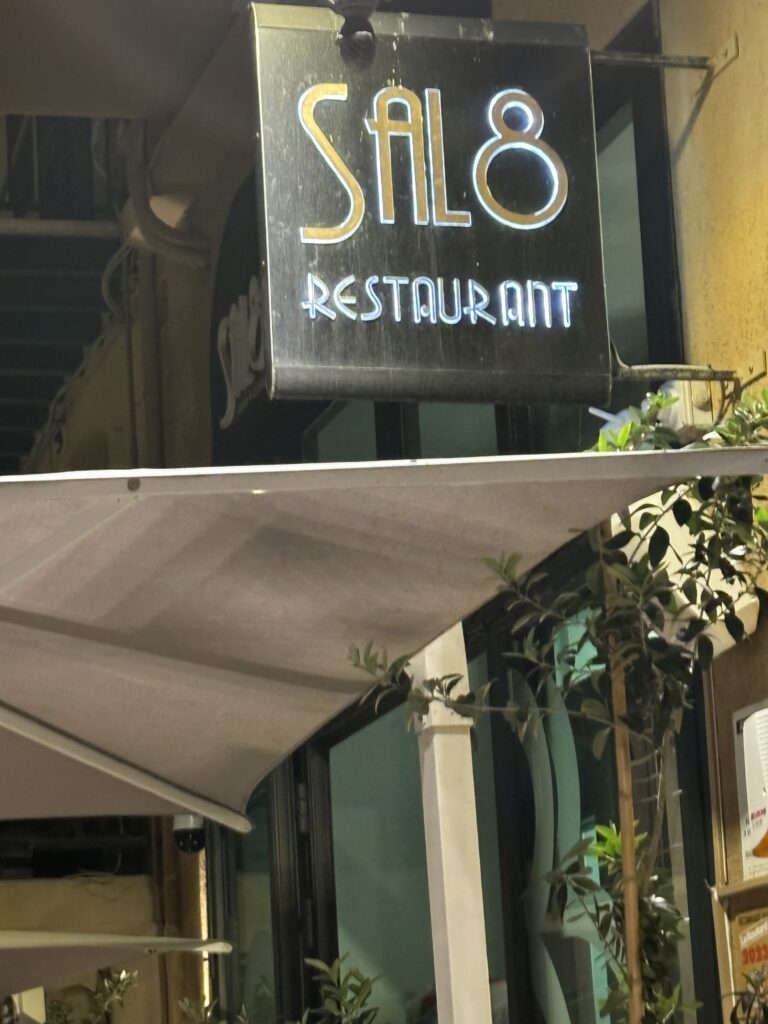
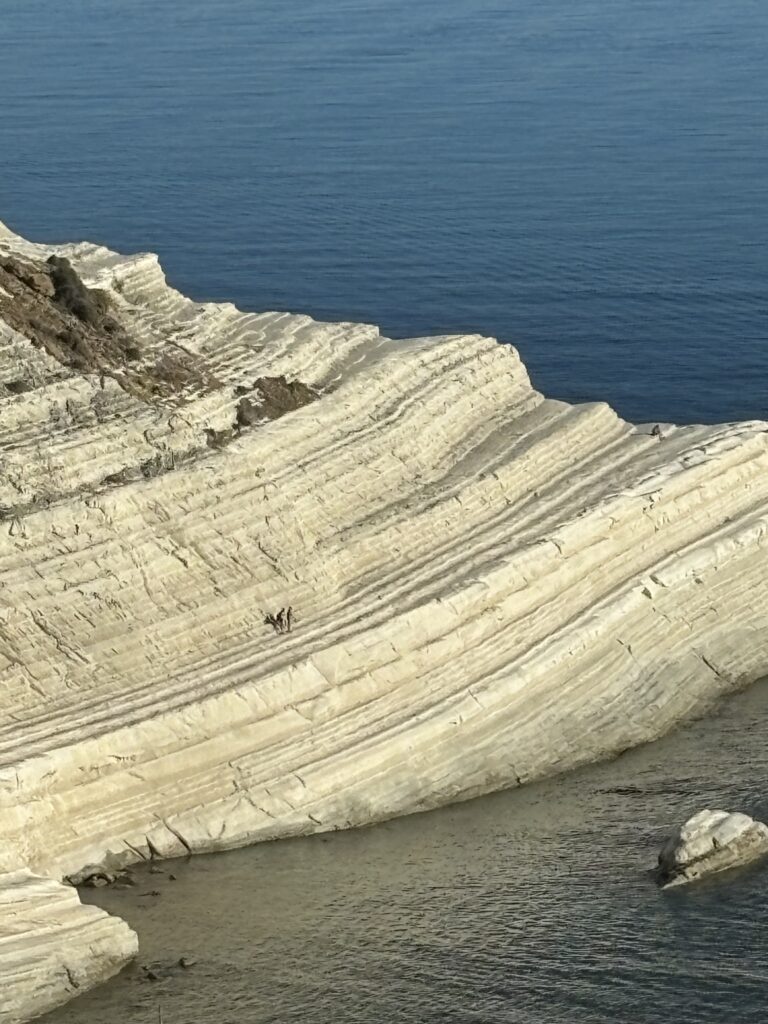
October 2 a later start heading out at 10:15am to an Olive Farm. Over 50 000 trees with the oldest over 300 years though most planted in the nineties. They have organic accreditation and export world wide. Learning about olive harvesting and production was interesting.
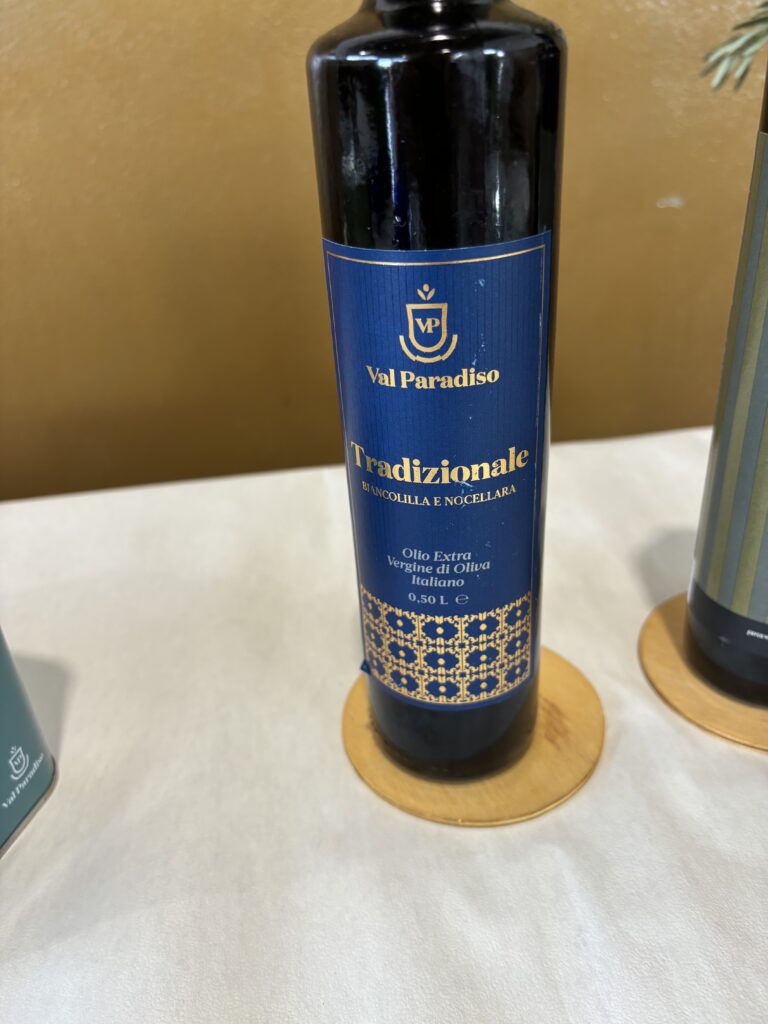
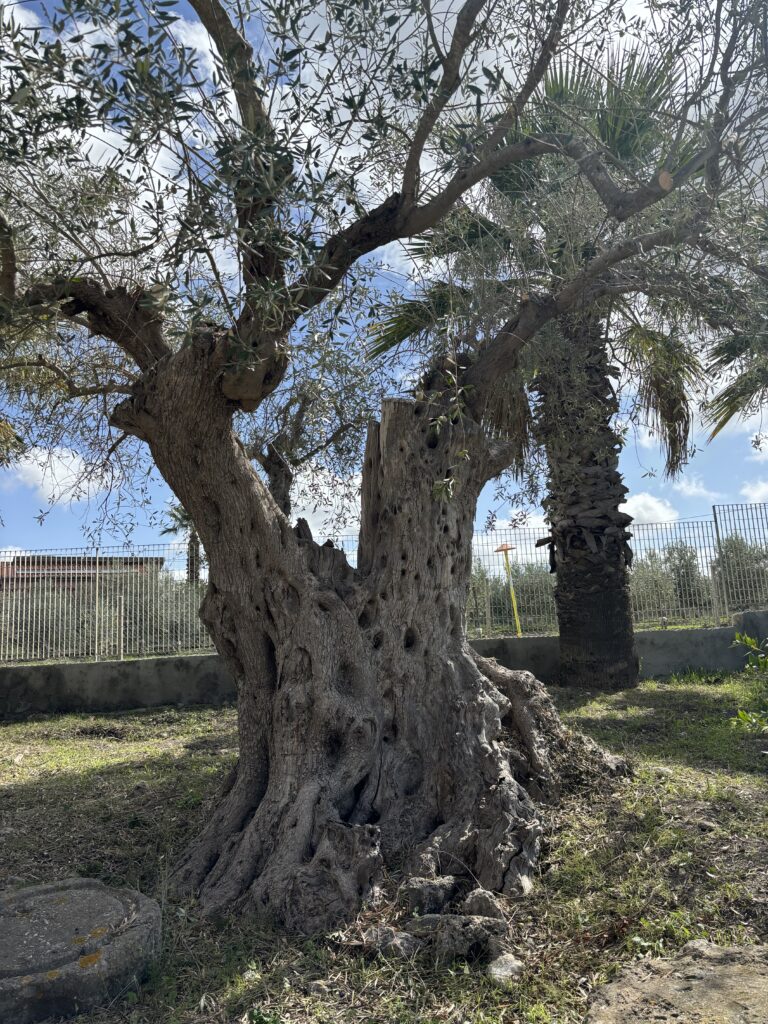
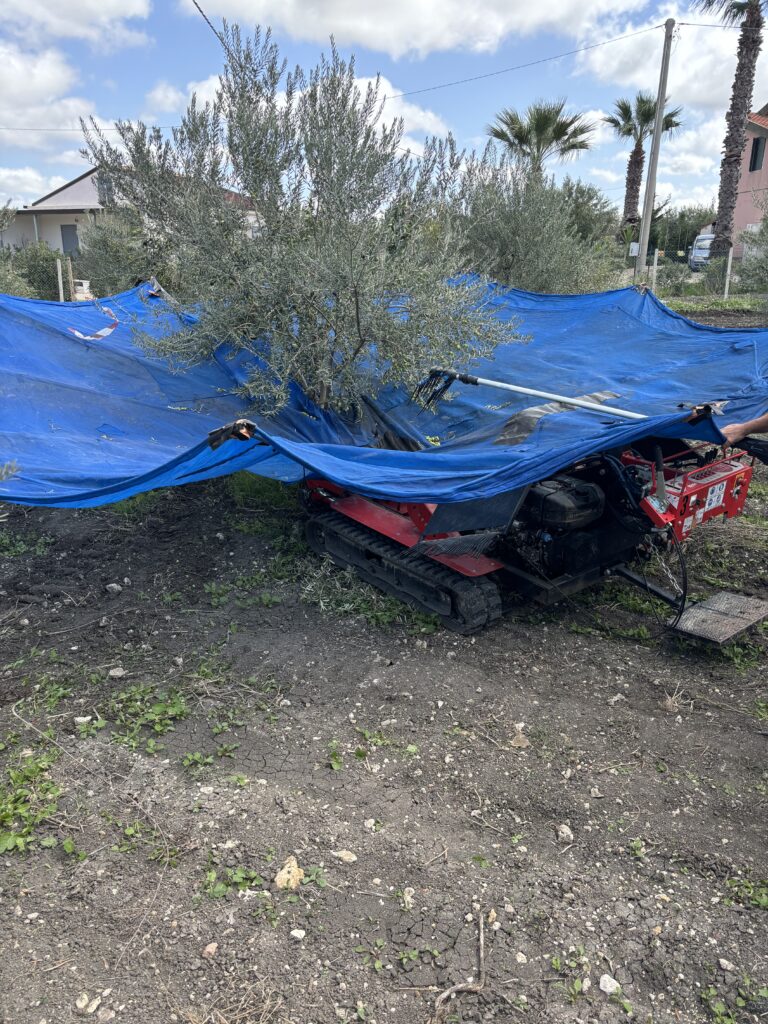
After a brief hotel rest we headed out to meet our guide Luigi (yes) at the Valley of the Temples. Luigi was a marvellous guide knowledgeable and humorous. The temples were constructed by the Greeks between 700 and 800 BC. The Temple Concordia is considered so significant it remains the central emblem of all UNESCO’S World Heritage signage. Juno on the left is in an ongoing state of development back to its original form however Concordia still remains standing free almost 3000 years later.
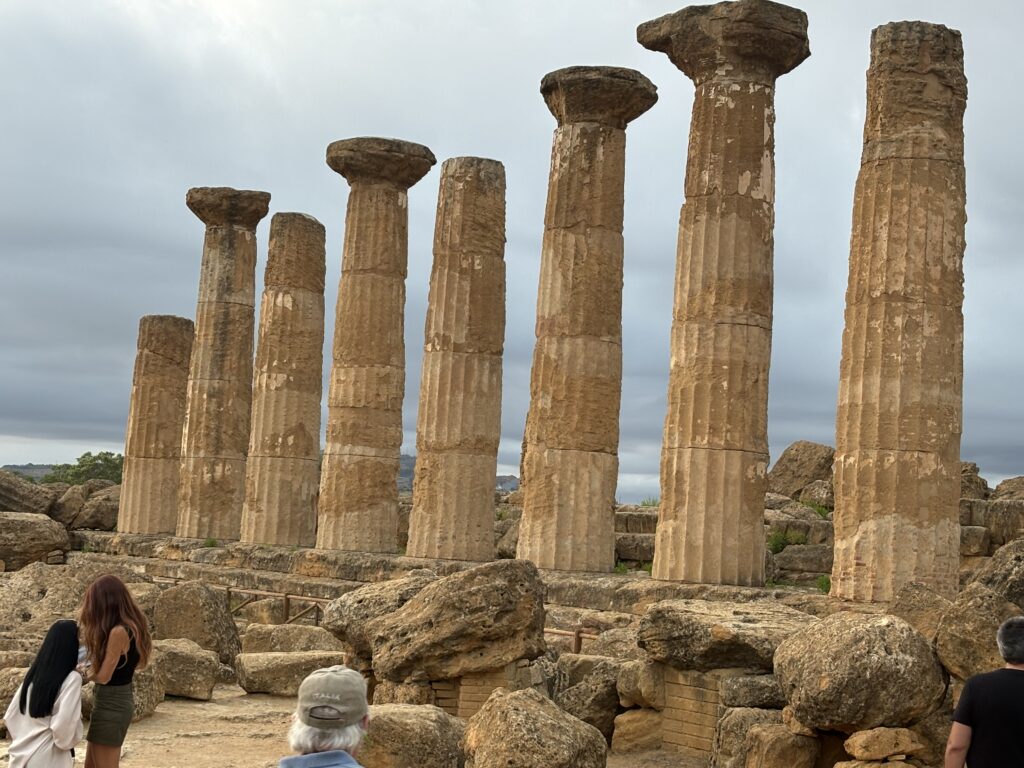
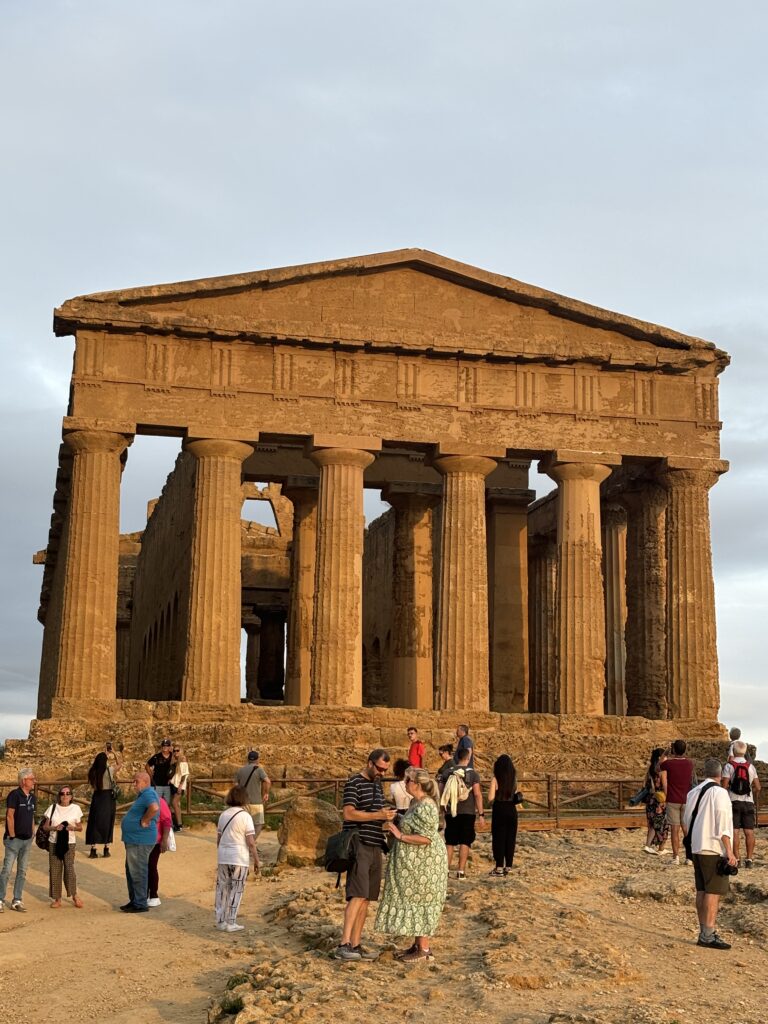
Like the town of Agrigento the temples are built on equally high ground. However during the building of the temples the Forrest leading up to the town were cleared. Over the centuries this lead to numerous mud and landslides eventually burying the town developed around the temples. The vegetation now occupying the land between the two sites now sits over an unexcavated old Roman/ Greek original town.

It has since been established that one Olive tree still bearing an abundance of quality fruit is 900 years old.
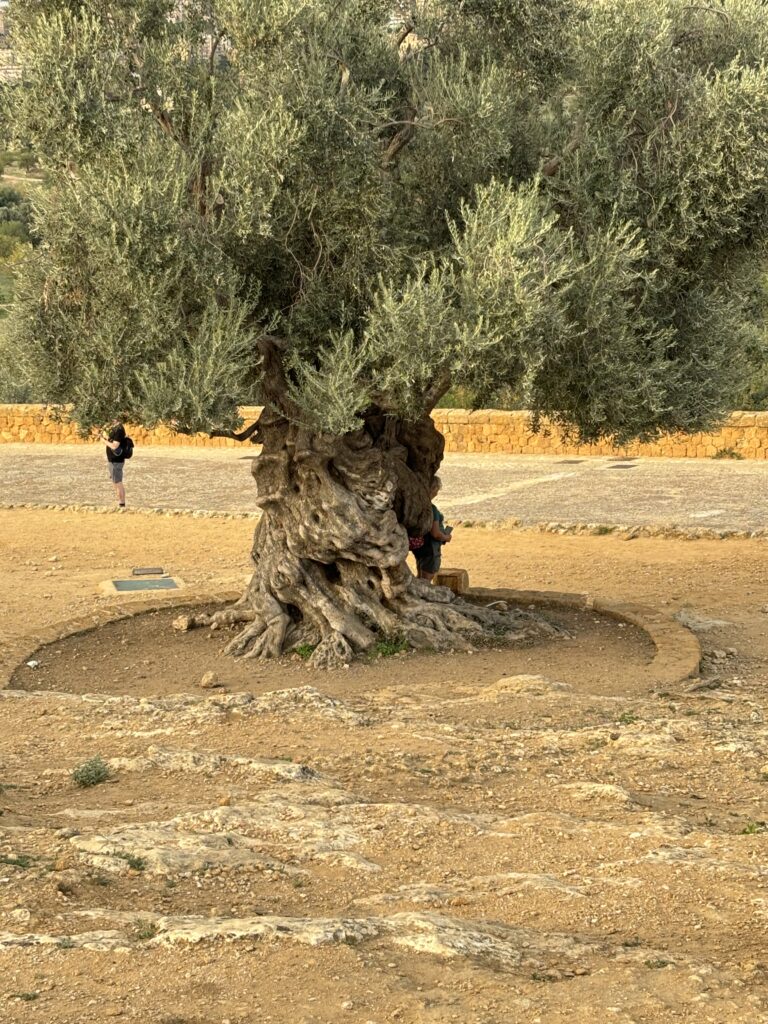
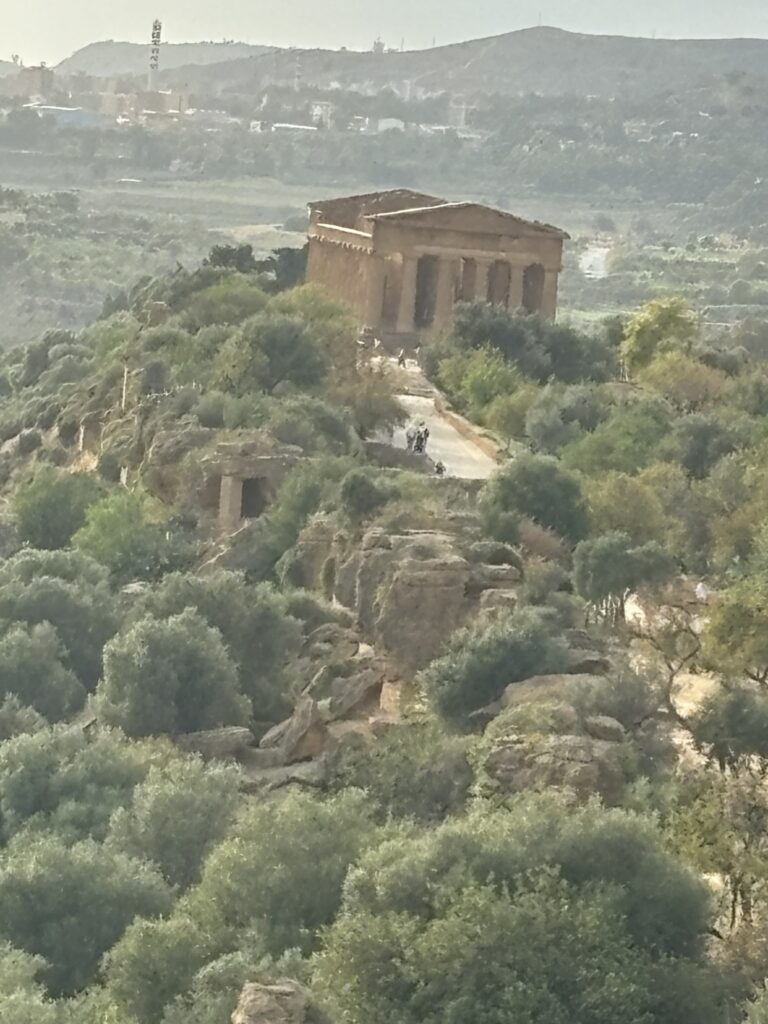
Thursday October 3 start of our final week in Sicily. We left Agrigento for the municipality of Ragusa. Only three towns in the region we stayed in Ragusa visiting the Castile Donnafugata, not memorable for me but I now know where the Donnafugata winery name comes from. We also visited Modica travelling on a “road train” did a chocolate tasting pared with fortified wines. The boys below were all equally unimpressed with the Castle.
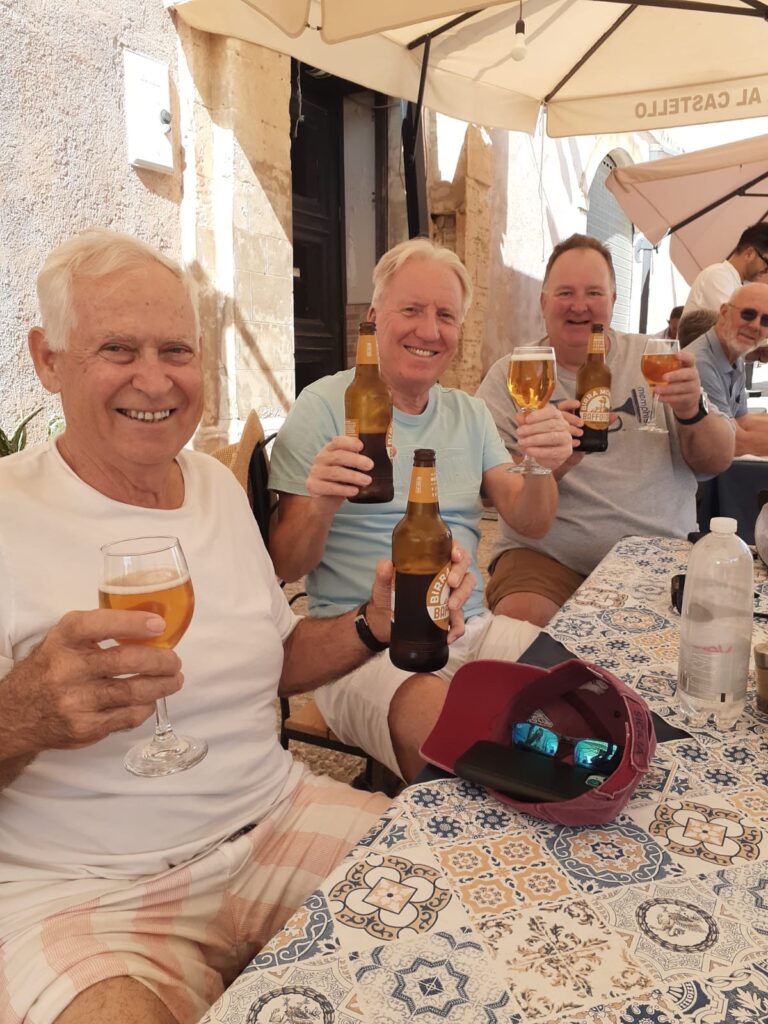
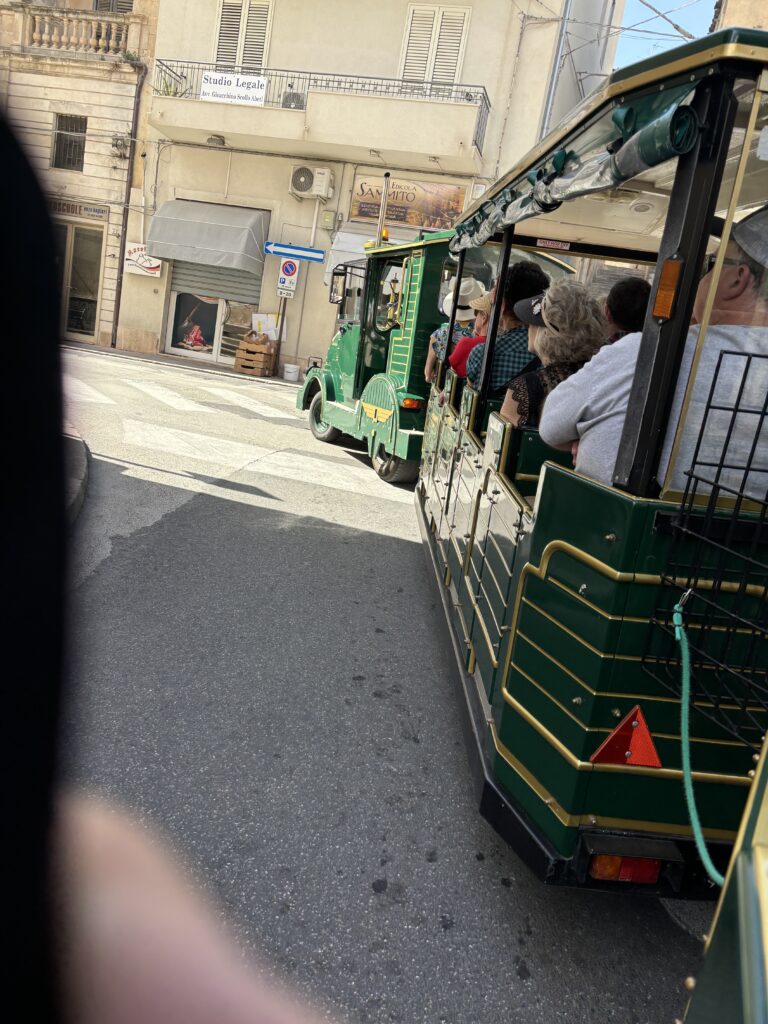
Friday October 4 travelled to Syracuse specifically the island of Ortigia, picture below, where we checked into a beautiful 5 star hotel. Drinks on the balcony bar overlooking a superb sunset
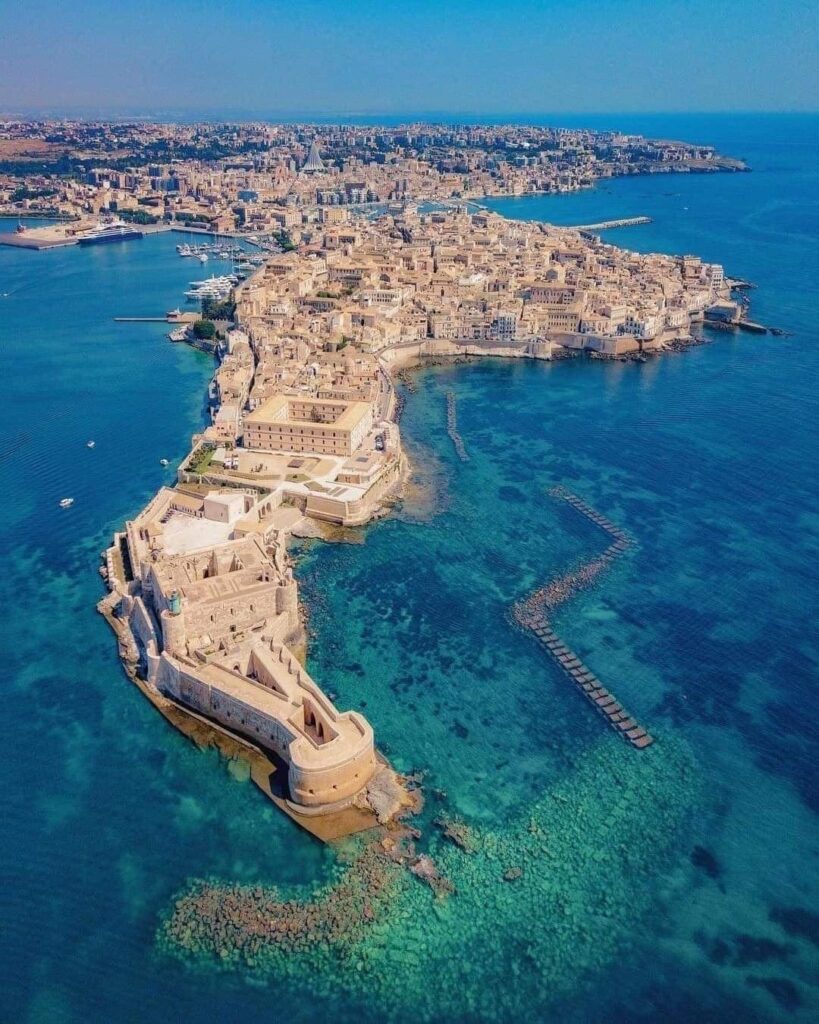
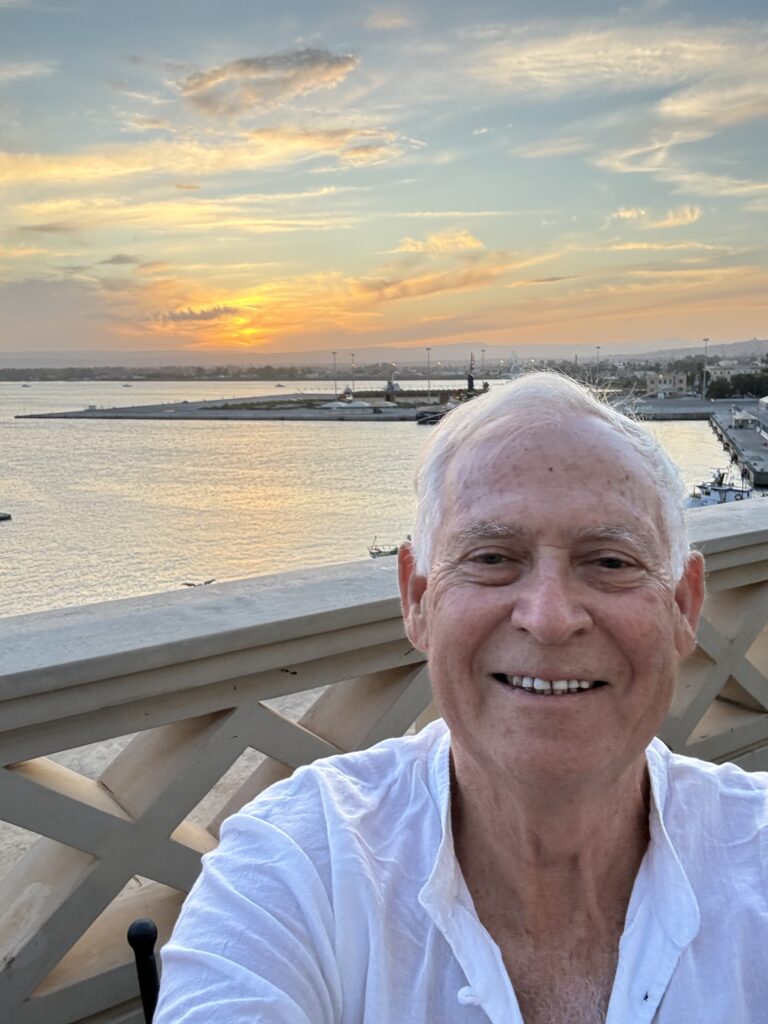
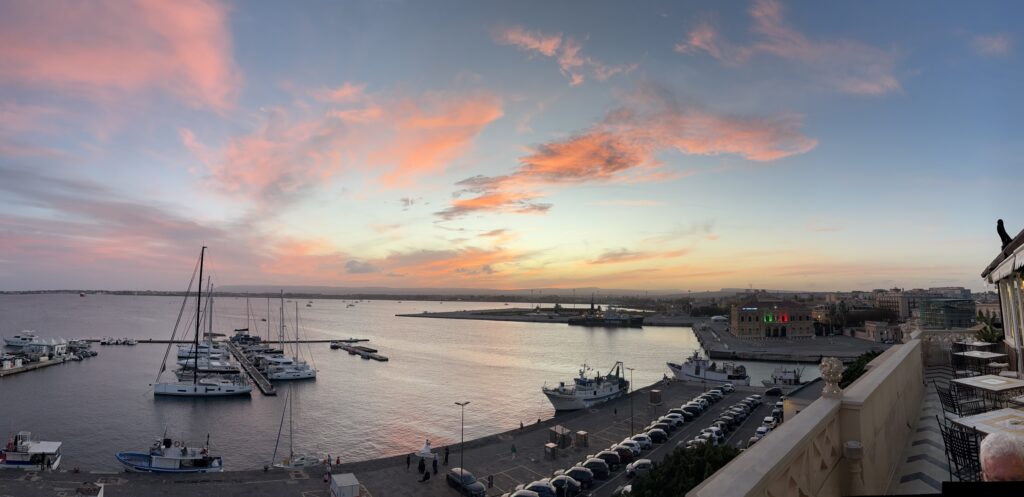
The next morning we boarded our bus and drove to Neapolitan Archaeological Park where we met our tour guide Valery. Though occupied prior, it was not until the soldiers of Naples conquered the area that the developments of the cave system found there commenced. Since then Greeks, Romans, Normans and Arabs all took over the area. The historical significant sites include a Greek Theatre used for drams and Comedies which held up to 14000 spectators. The cave where the Ear of Dionysus was reputed to exist and the Roman Amphitheatre housing over 15 000 spectators and used for the “Games” are also very significant. The games involved Gladiators and animal fights which were staged here.
It is worth noting that the earthquake of 1693 collapsed the cave roofs killing all residents underground at that time.
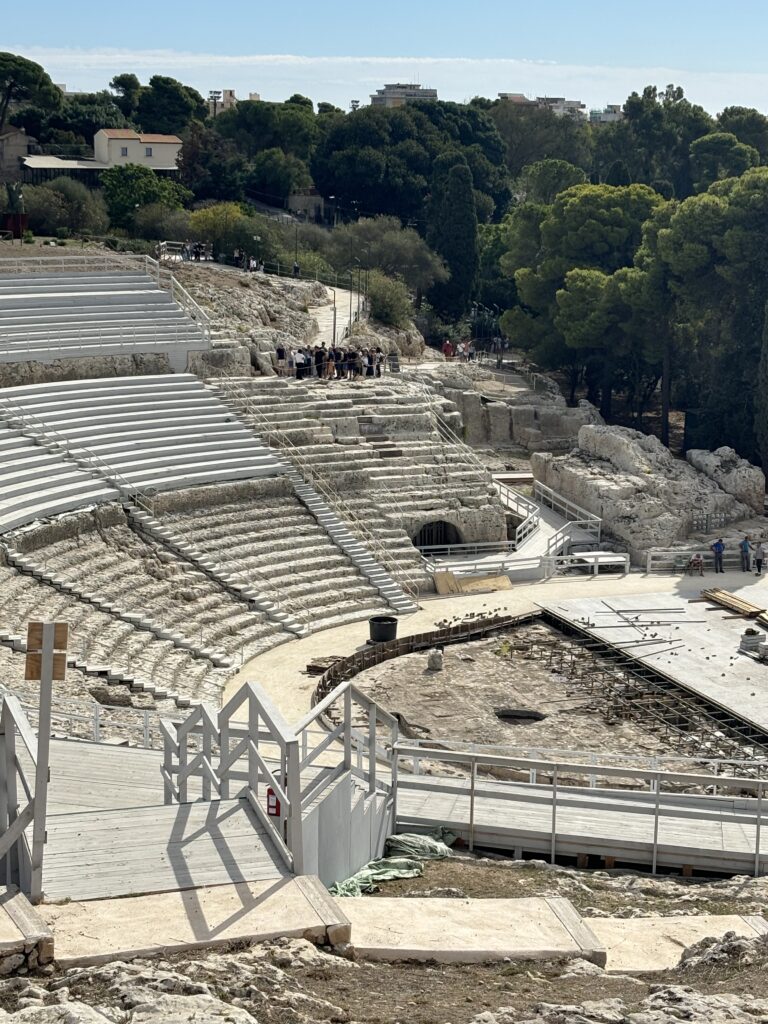
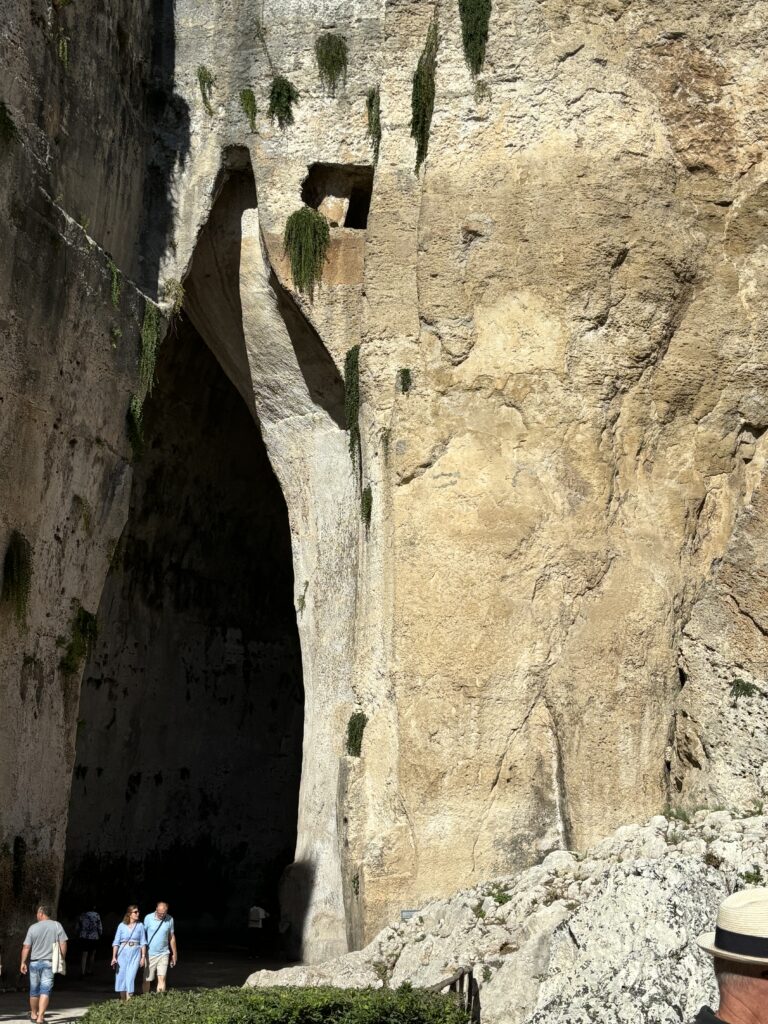
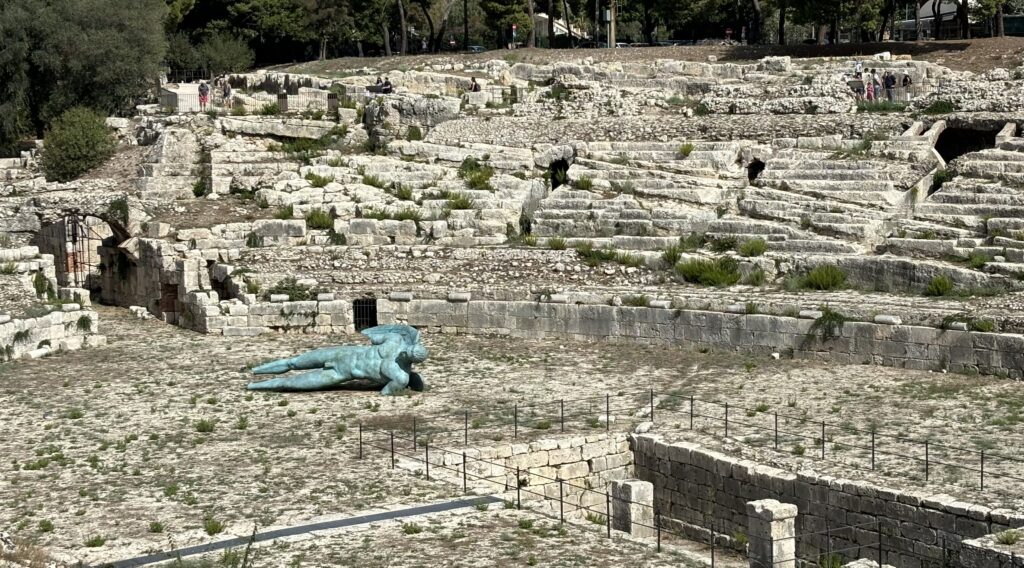
A panorama from the top of the caves with the Roman Amphitheatre on the left and the ocean central. Excavation is still ongoing.
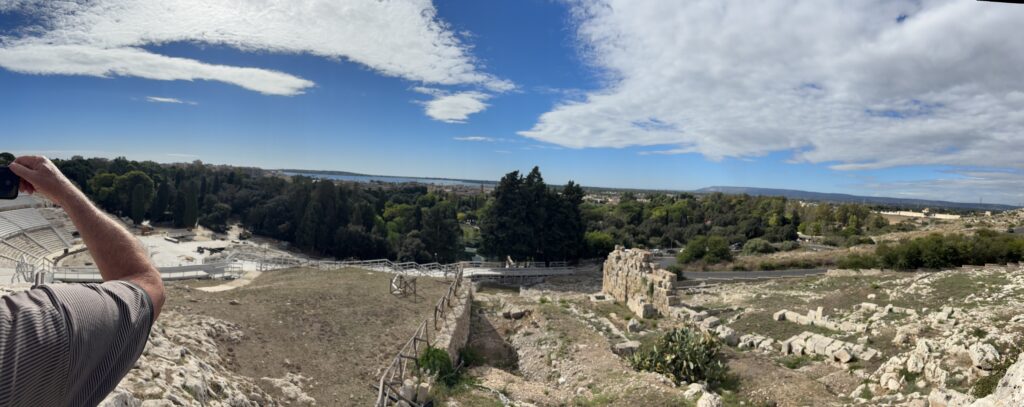
On returning to Ortigia we did a quick tour of the Island. Of interest were a stunning fountain, the church in the Piazza and an ancient temple currently in ruins with plans to develop. We then had an afternoon and evening of free time.

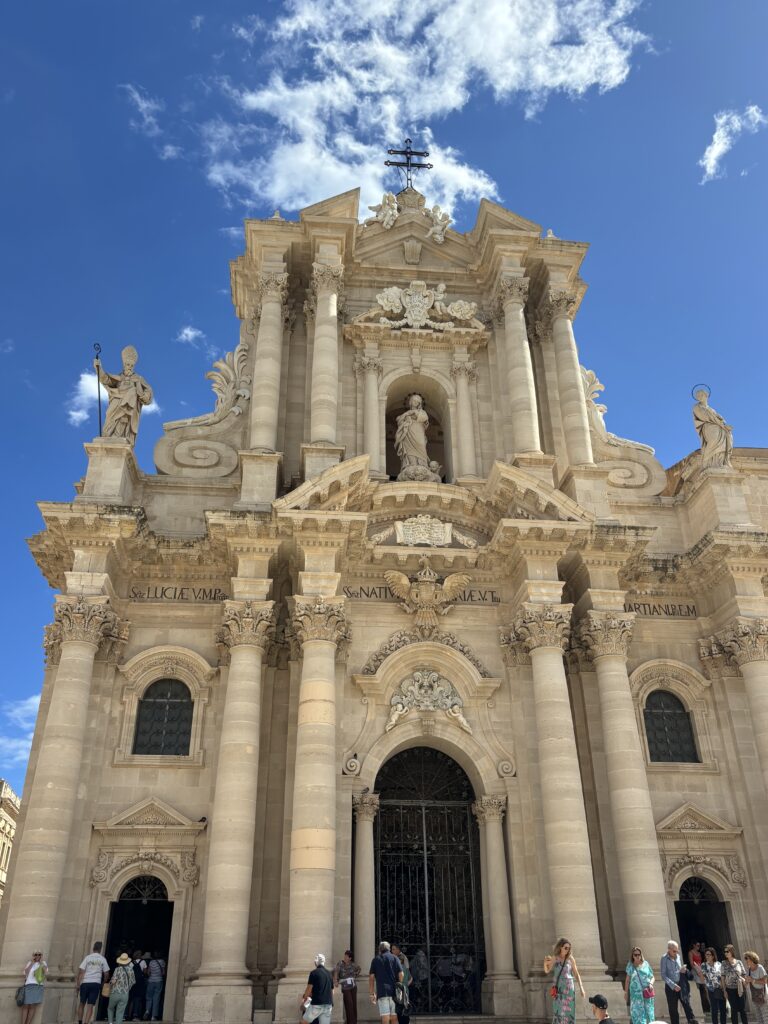
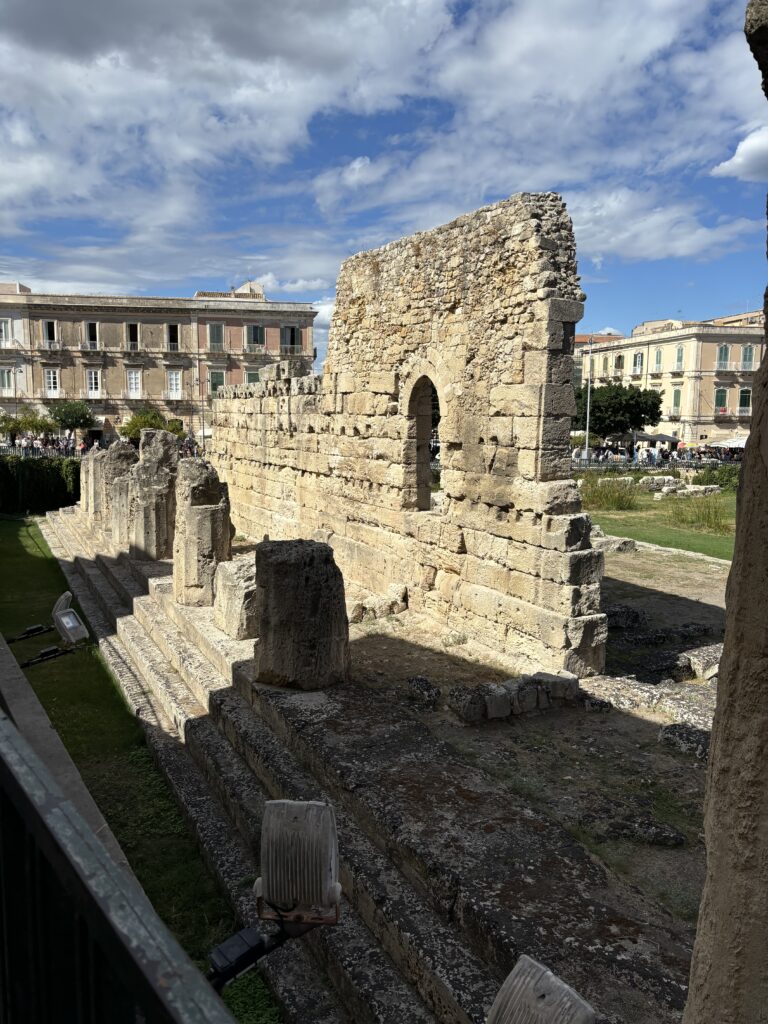
Sunday morning an early departure to Catalina. Its history is very interesting given its locaction at the base of Mt Etna. A major eruption destroyed half of the city in 1669, mainly through lava flow that was only stopped at the castle walls. However in 1693 the earthquake that struck southern Sicily killed two thirds of the population and totally destroyed the city. Its rebuild did not start until the mid 1770s.
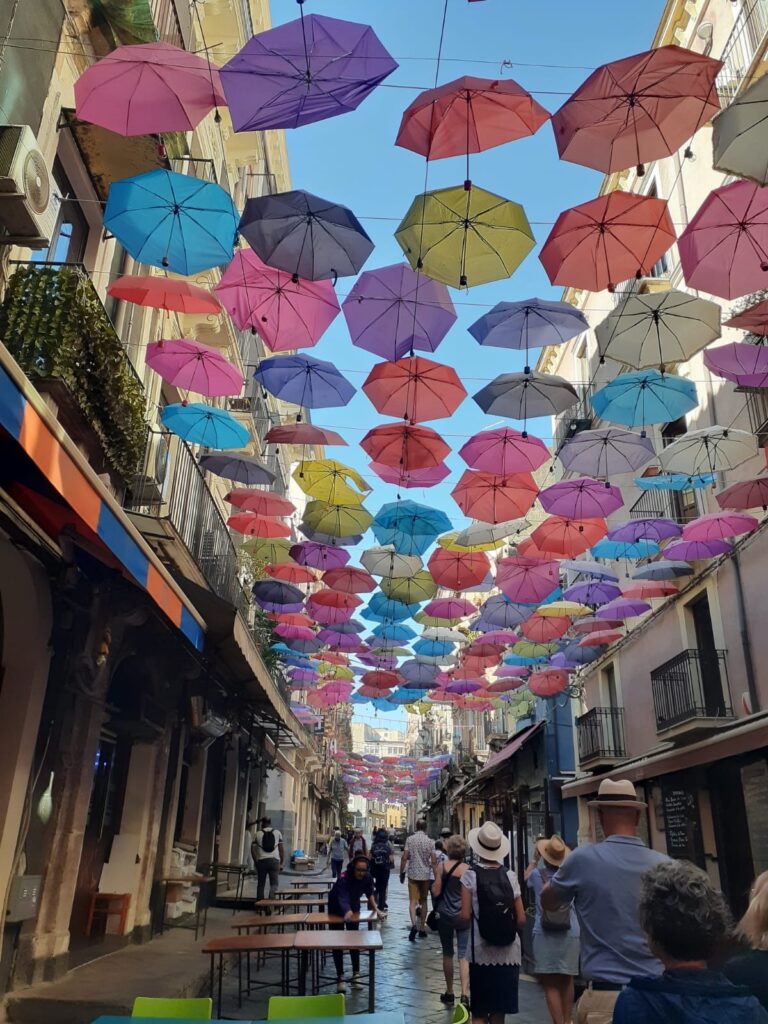
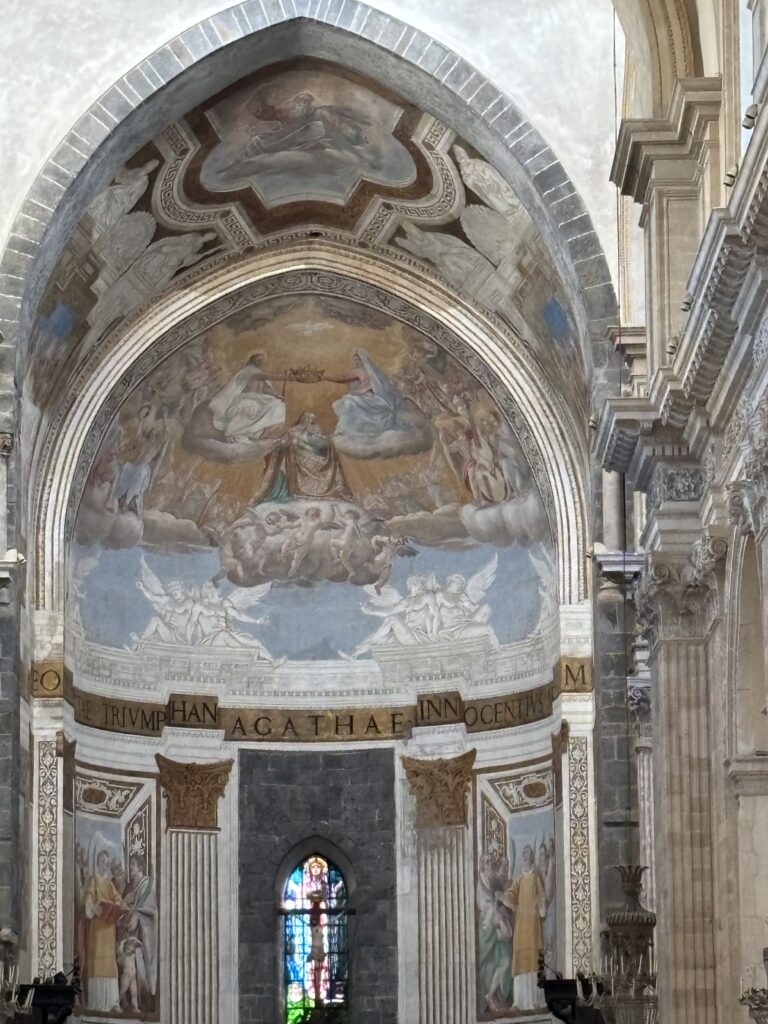
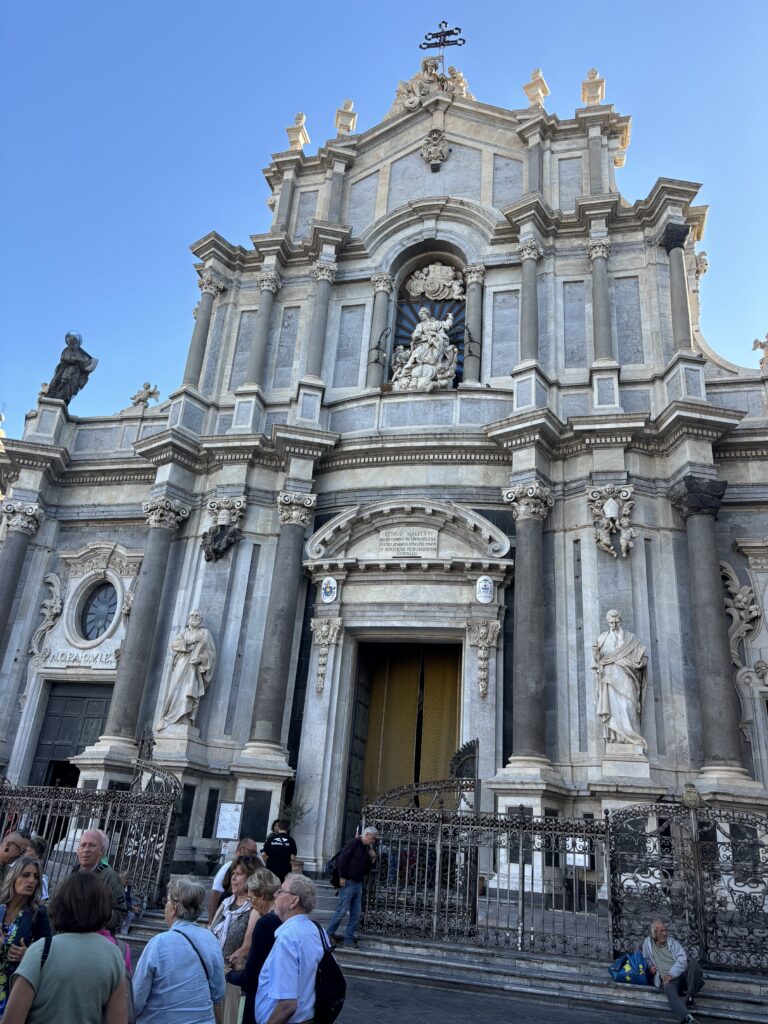
We walked to the piazza with our guide who was 5th softly spoken. Lovely church, and walking streets then off to the hotel to drop off our bags. I ended up back at the Piazza with Ken later joined by Salvo and Connie for a great Lunch.
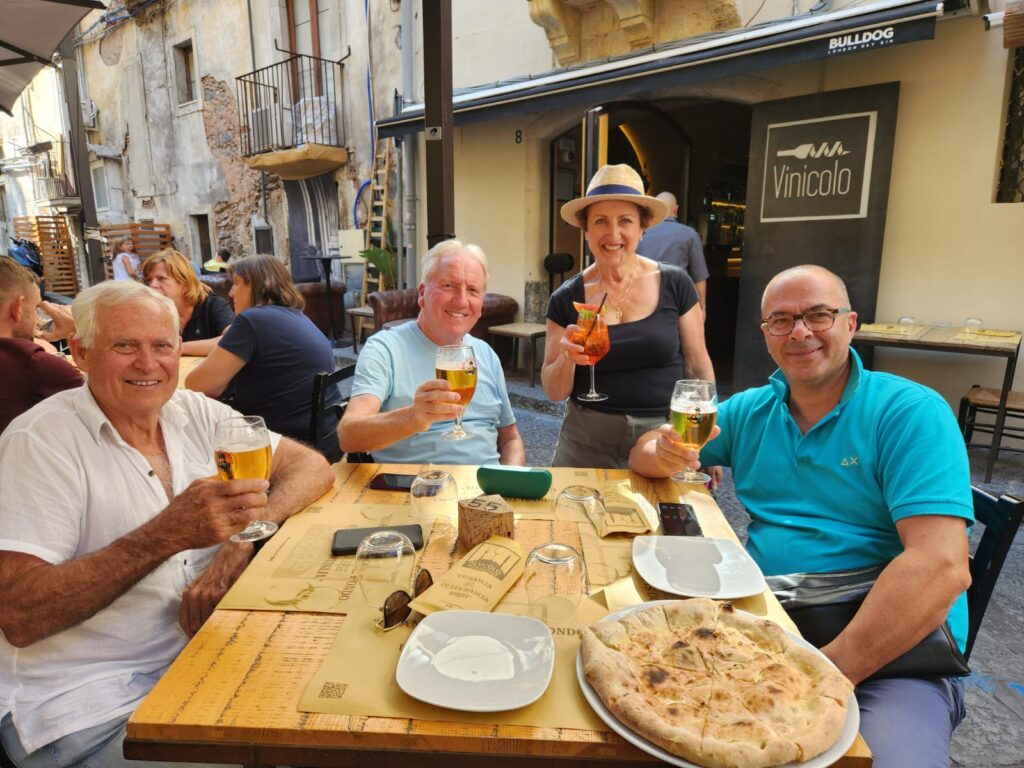
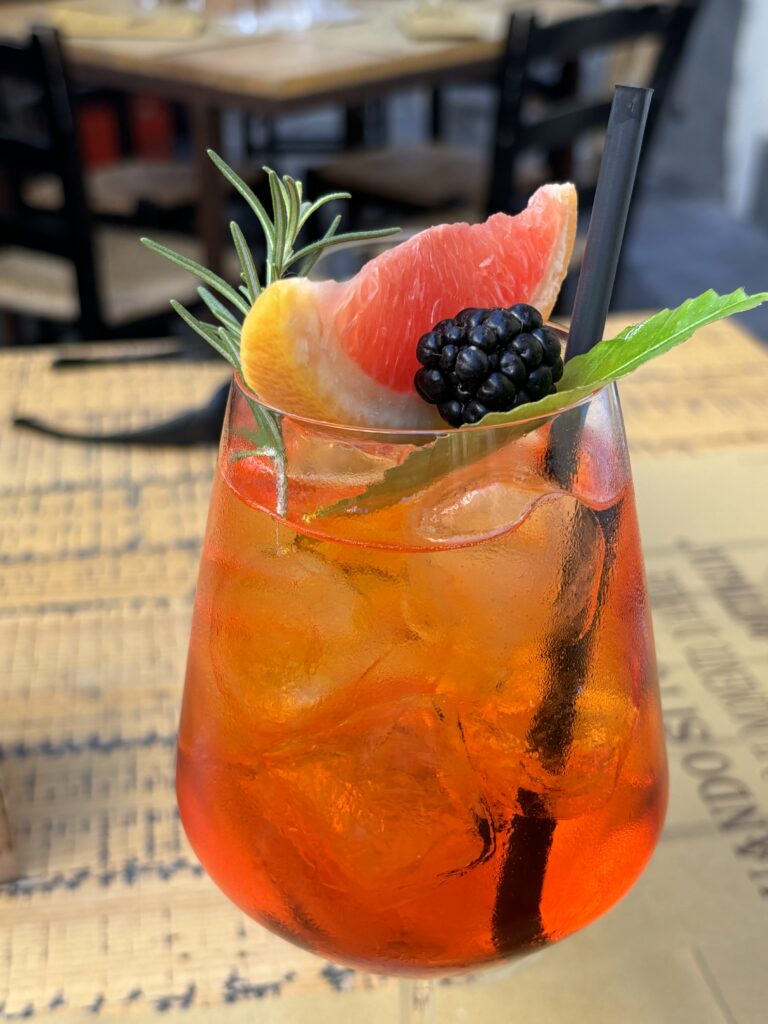
Monday is Mount Etna visit day and we look forward to a sunny day with great views. It turned out to be fantastic. The map below shows our journey. Stage one the bus takes us to base camp 1966 metres above sea level where we later enjoyed lunch. We then travelled for some 15 minutes, 6 to a funicular to reach level which is roughly 2500 metres above sea level. We piled into a 4 wheel drive bus and journey to 2750 where we hopped out and walked reaching 2932 metres which was as far as we could go without a guide.
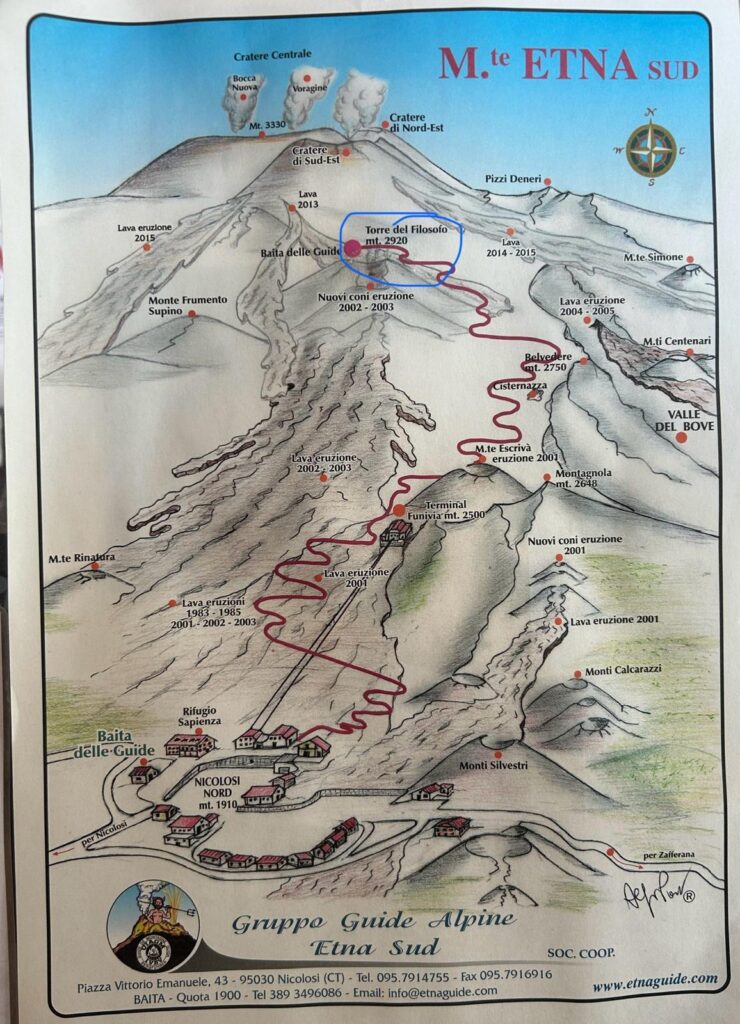
OUR JOURNEY ABOVE
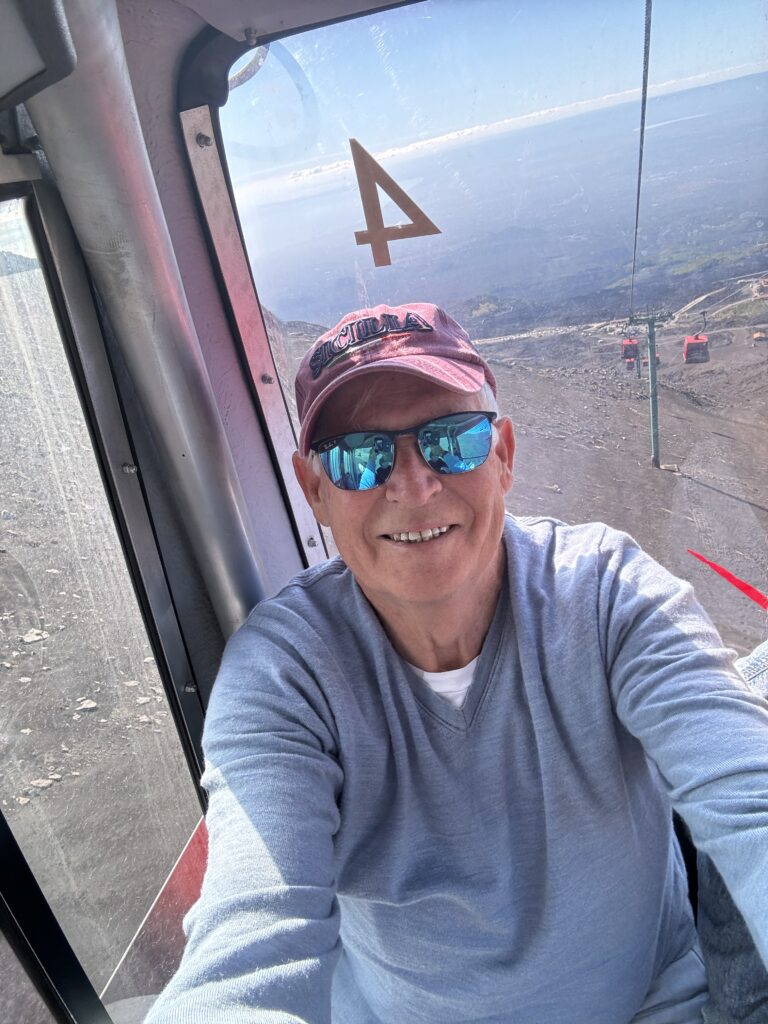

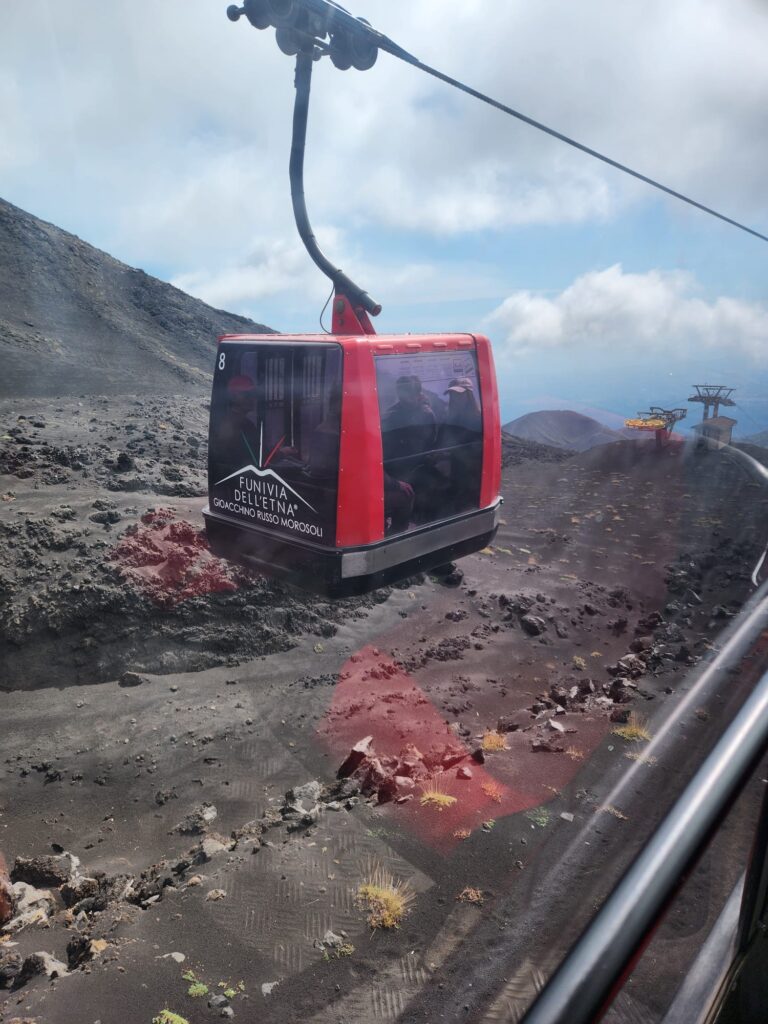
FURNICULAR AND BUS (middle)

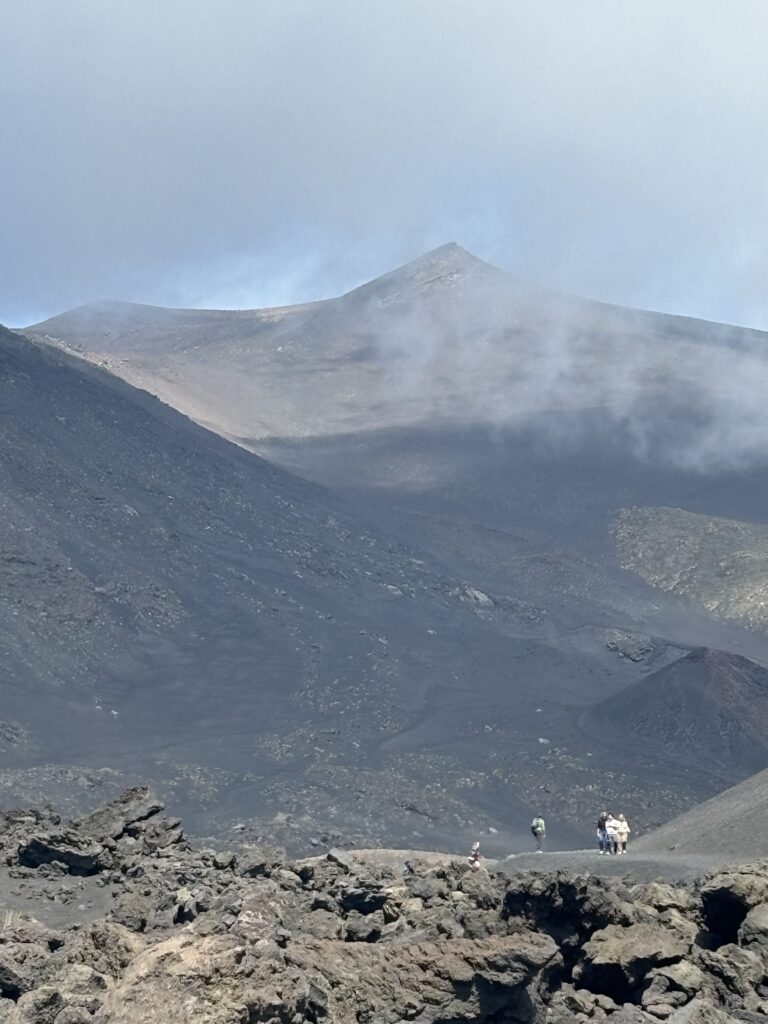
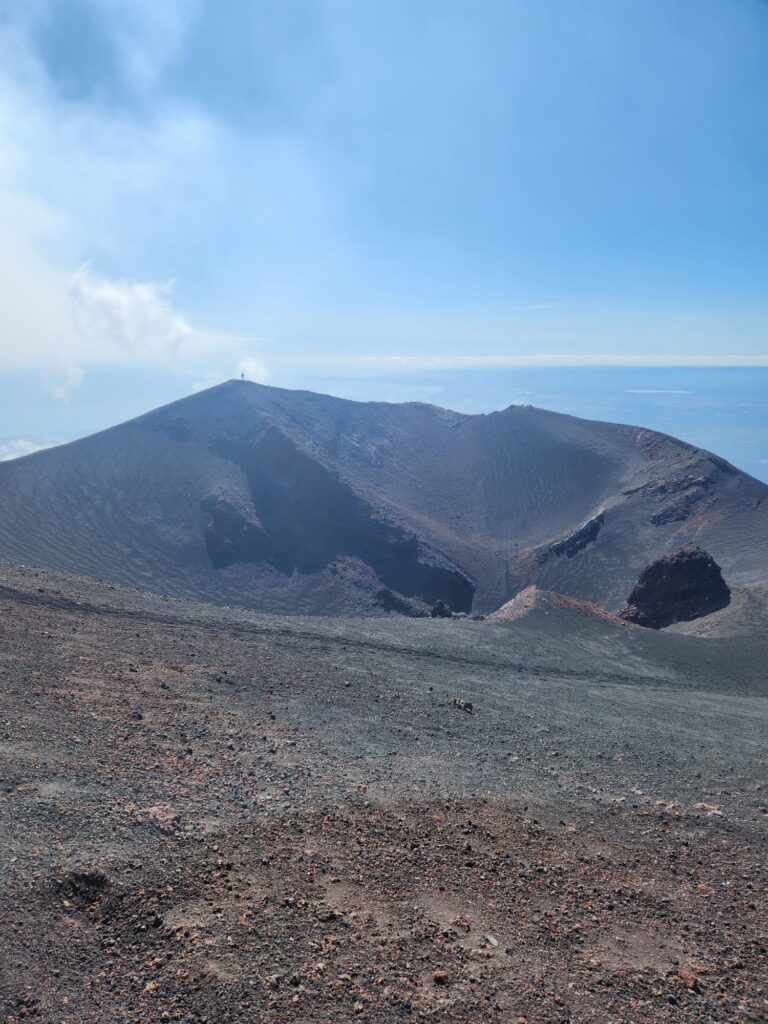
Mount Etna from below and while on the mountain.

October 8. We are entering the final stage of the tour as we depart Catalina for our last stop Taormina.
On the way we visit Savoca, a serene and ancient hilltop village situated high above the sea,
where we experienced the authentic atmosphere of Sicily. The main attraction of Savoca is its
connection with Francis Ford Coppola’s film, The Godfather. The village’s little square is where
scenes for the movie were shot at Bar Vitelli.
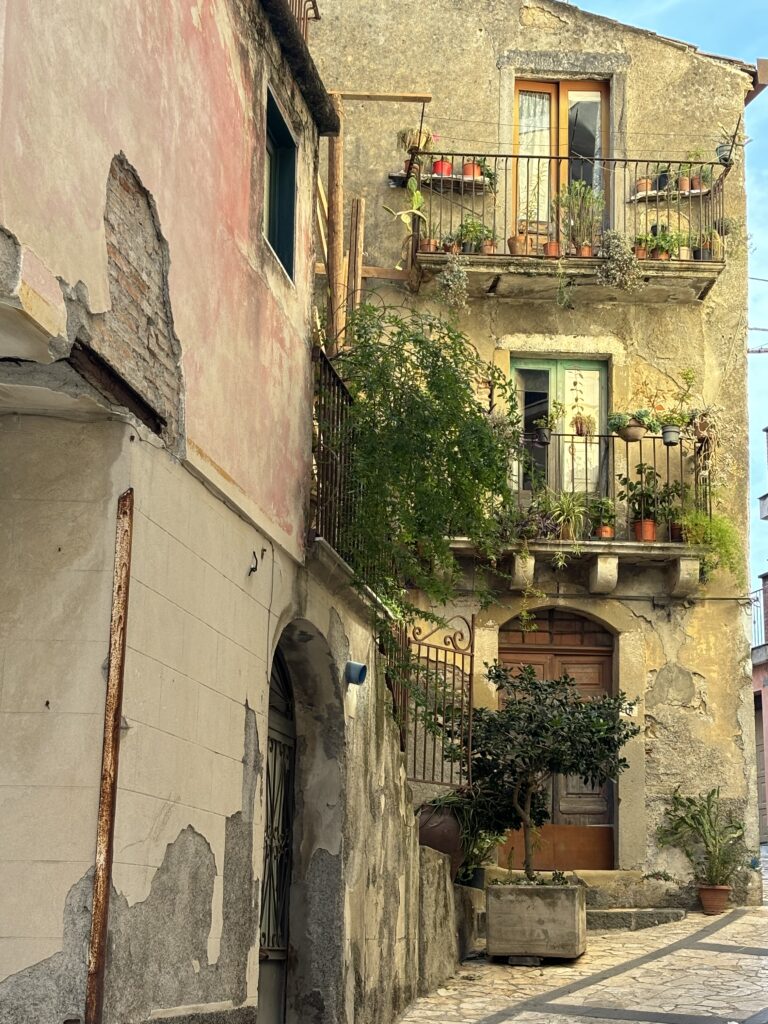
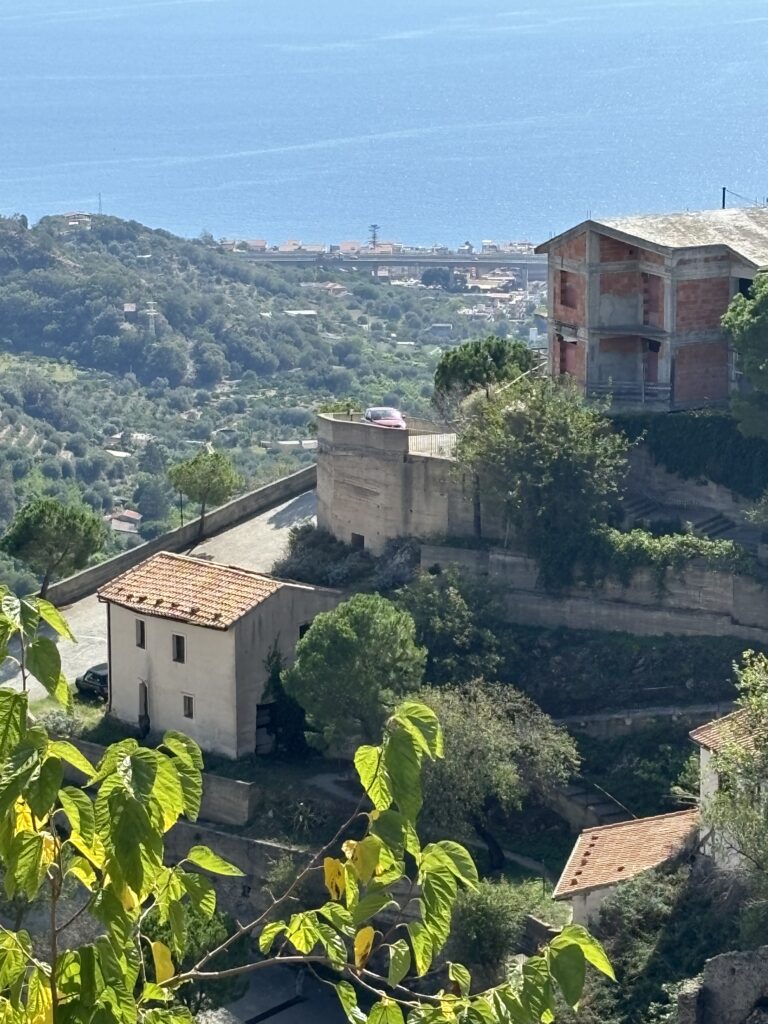
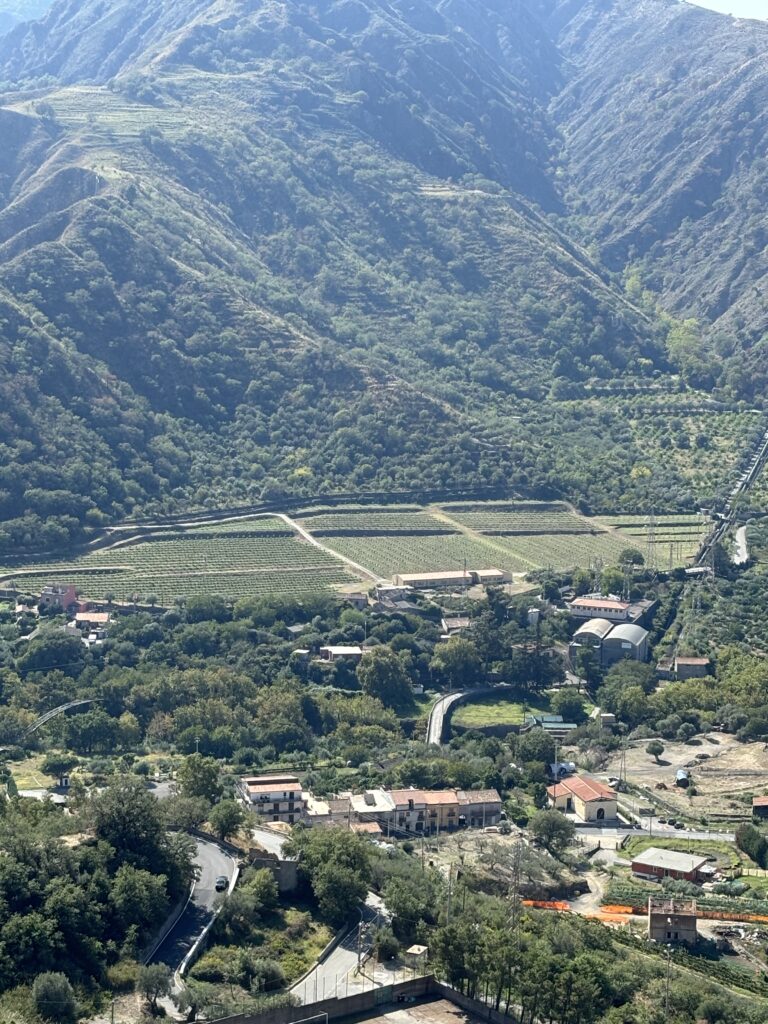
A typical village home and views across the valley to the sea.
After Savoca, we make our way to Motta Camastra, which is the birthplace of my Connie’s parents who is our tour guide. Again beautiful views but this was a special afternoon of food home made wine (very good) music and dancing. The village and Connie’s relatives made this special. I also must mention our driver as he navigated hairpin bends that most of us thought he could not get through.
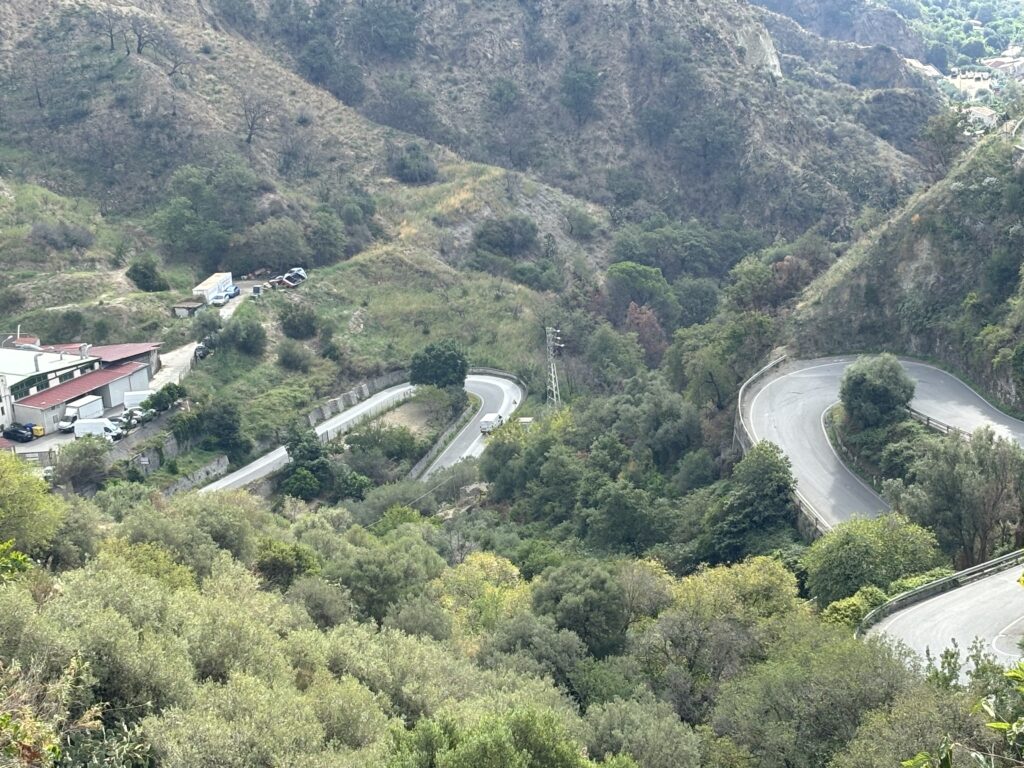
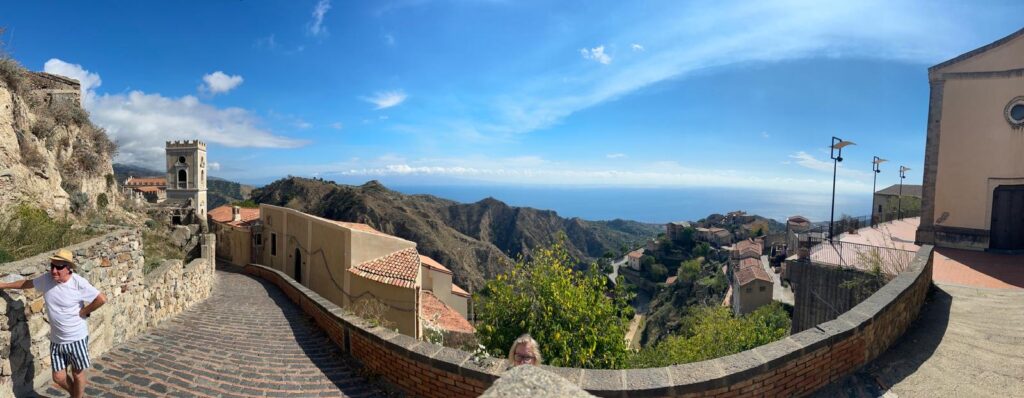

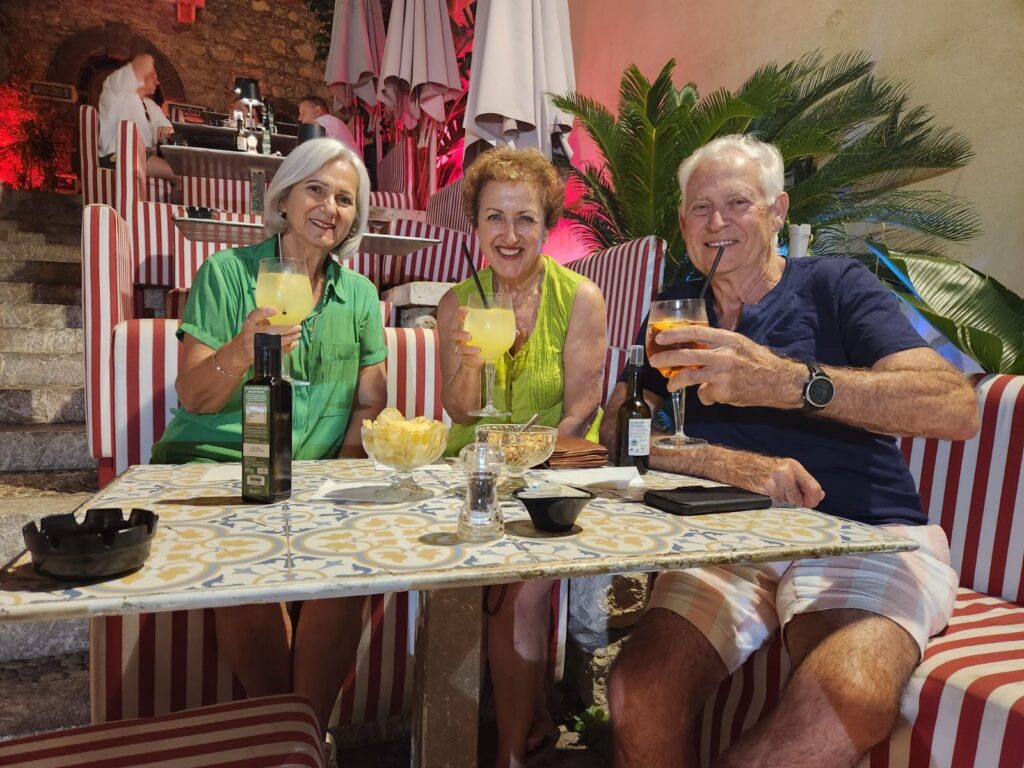
Checking into our hotel quite late with a night photo but waking up today with an amazing view from my hotel room balcony.
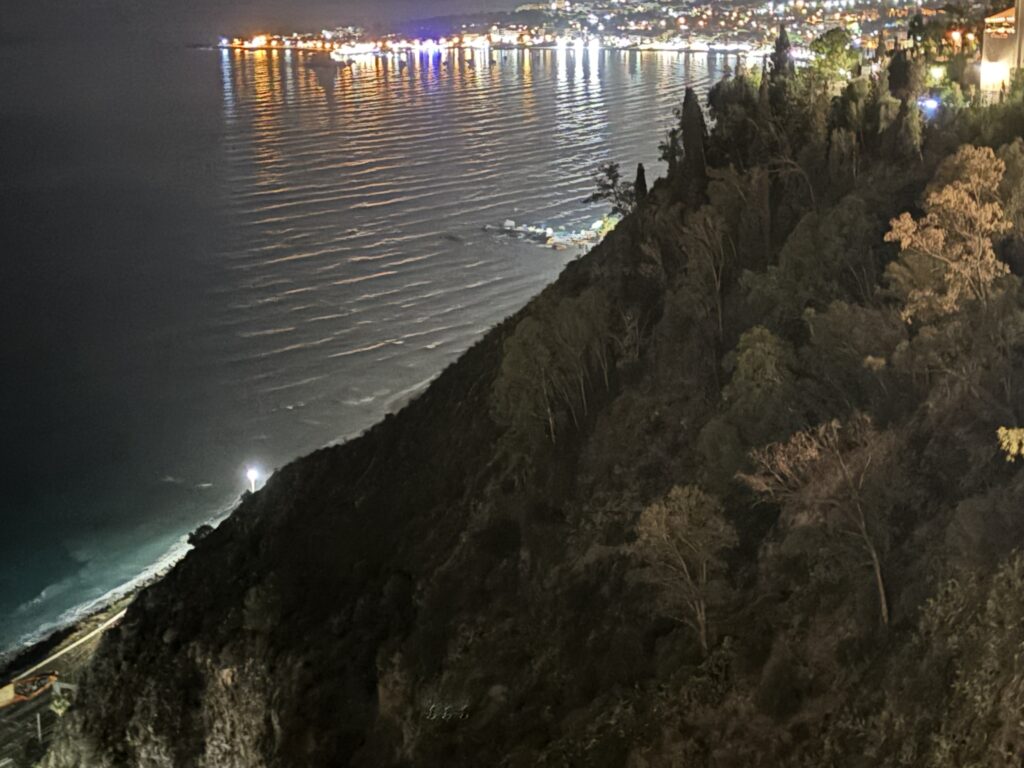
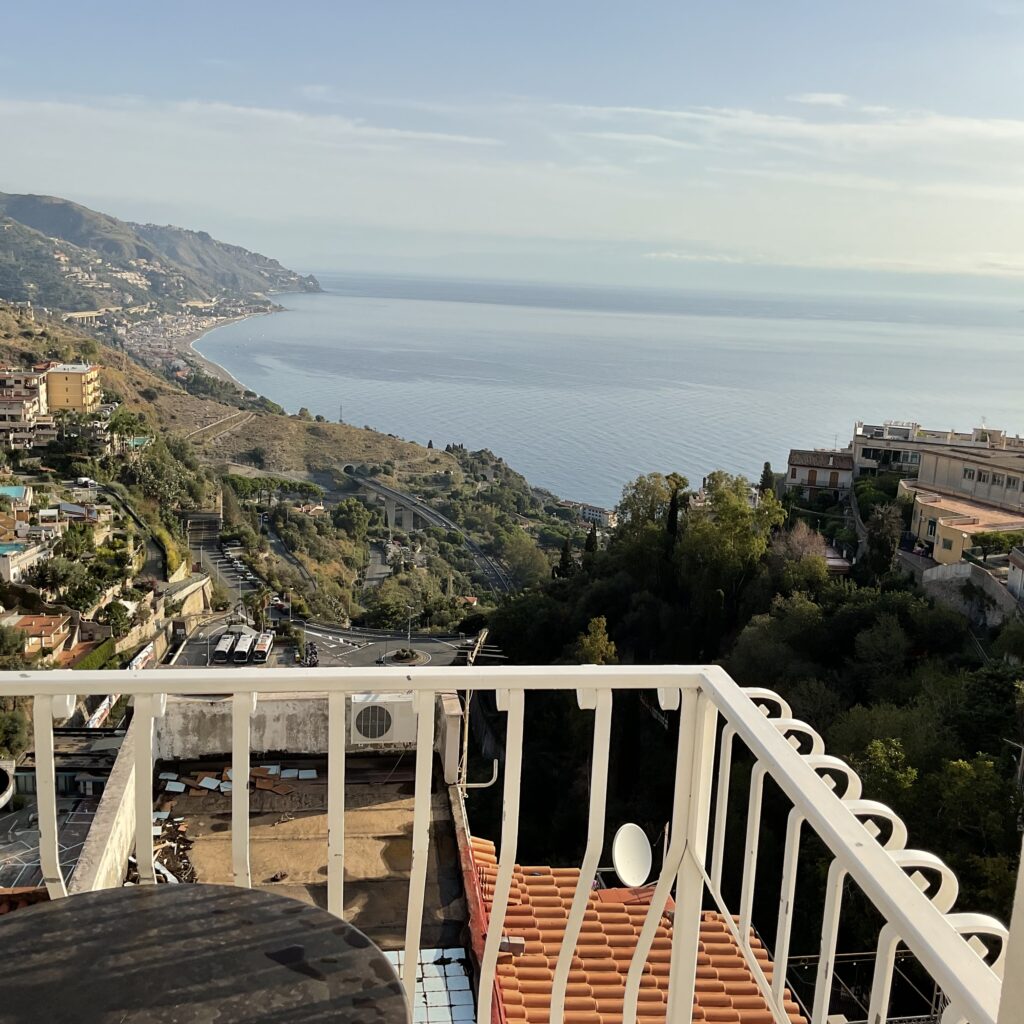
the next two days were spent exploring Taormina, loving the views fro our balcony and from Castelmola, the highest point in Taormina, where we enjoyed a wonderful dinner.
Sunrise from the balcony.
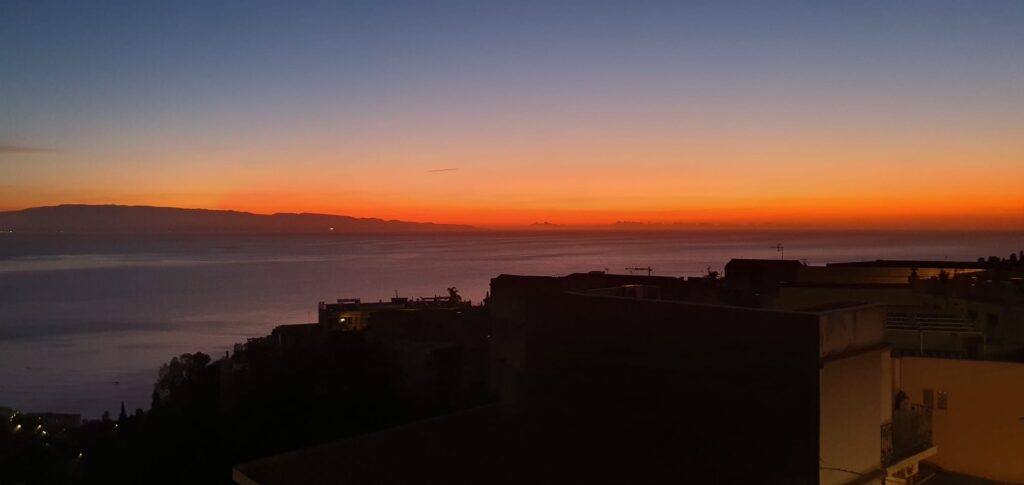
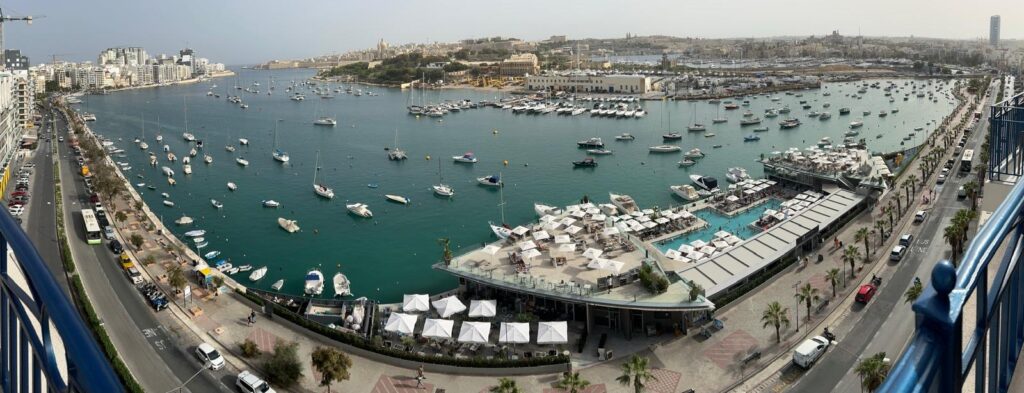
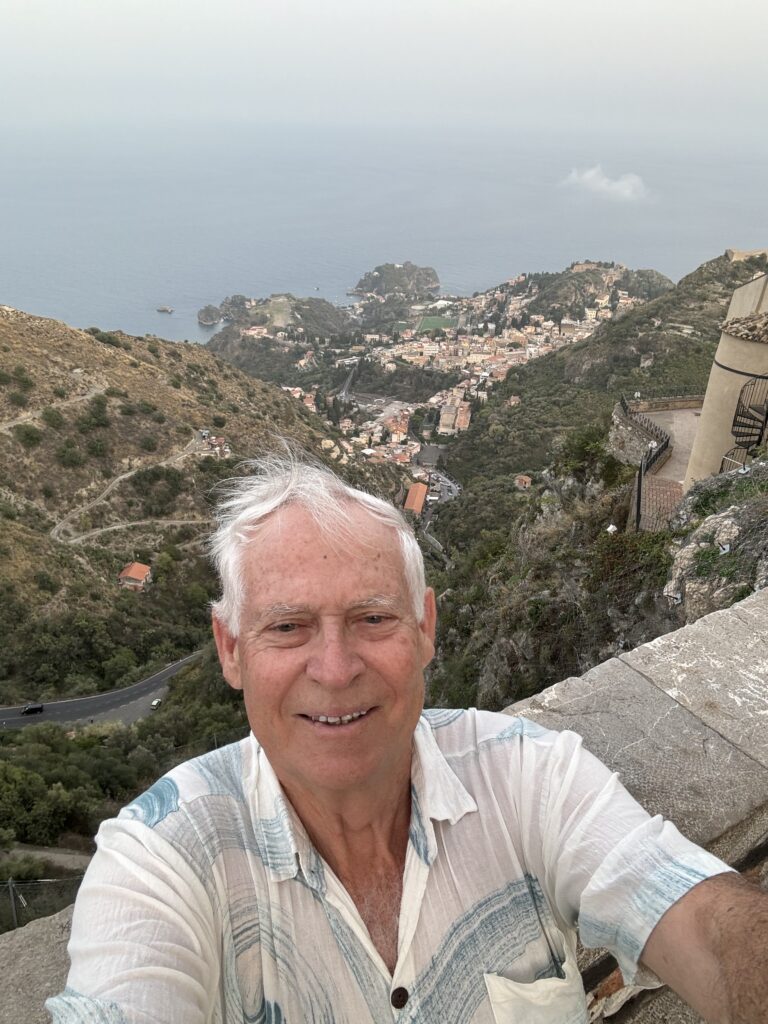
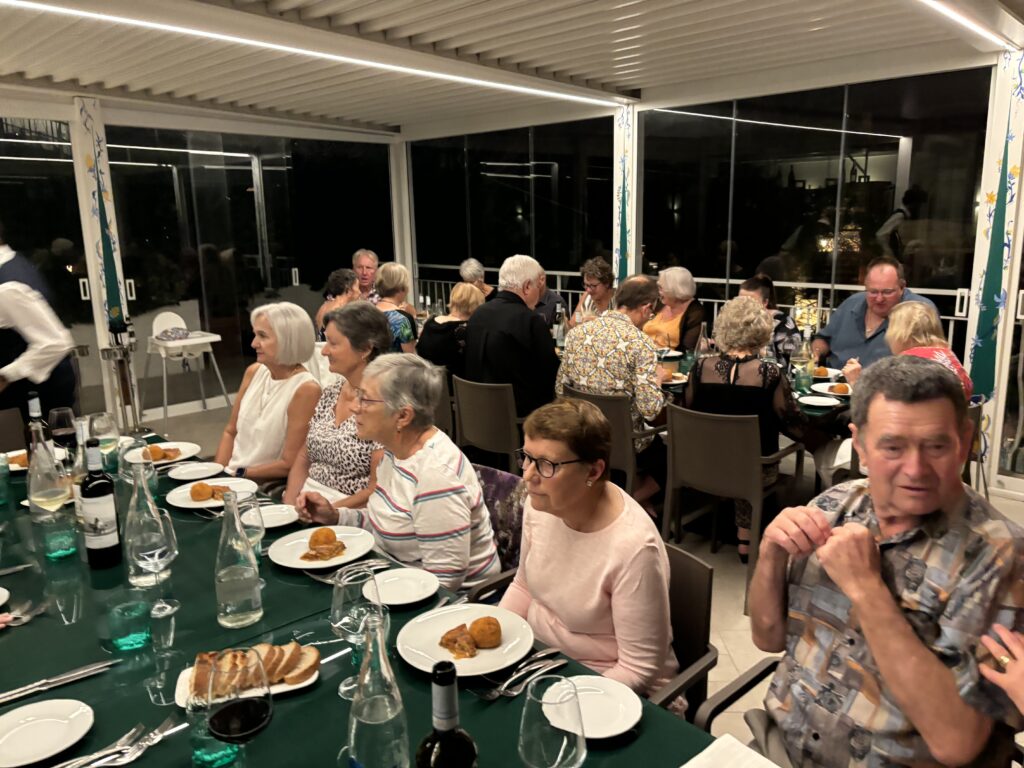
Views and our farewell dinner hosted at the hotel.
Saturday 8:00am we said goodbye and headed for the airport. Some 28 hours later I opened the door to my apartment absolutely knackered but loved every minute of the trip.
Many thanks to Connie White who organised an amazing tour for the team.


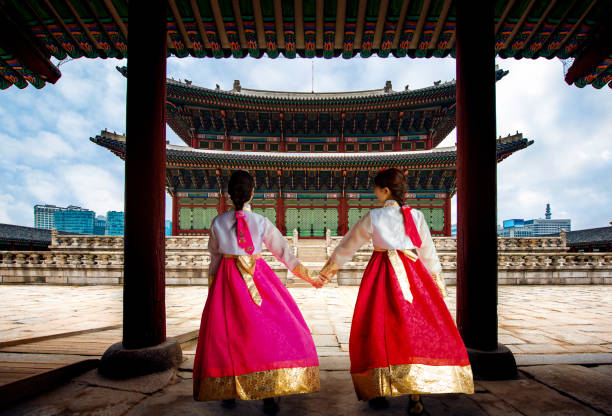


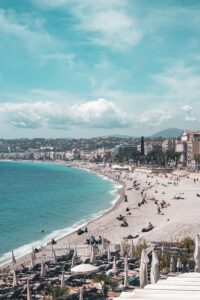
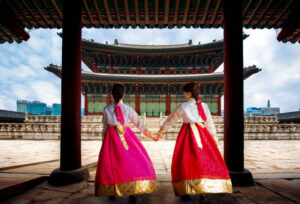
epe2aa
dbFHz pLjQbKo qeV izGXQKlG
hi
Желаете отправить букет без лишних хлопот?
Тогда вам стоит обратить внимание на интересную статью о https://gus-info.ru/digest/digest_2913.html в Москве.
Это удобный сервис для тех, кто ценит удобство.
Мы рекомендуем прочитать о том, как оформить заказ за пару минут.
Доставка по городу быстрая и аккуратная, а букеты — как на фото.
Не упустите возможность подарить радость легко и быстро!
Как работать с контроллерами Siemens, пошаговое руководство.
Лучшие практики программирования контроллеров Siemens, успешной разработки.
Преимущества TIA Portal в программировании контроллеров Siemens, главные функции.
Как избежать ошибок в программировании контроллеров Siemens, распространенные проблемы.
Как спроектировать систему автоматизации с Siemens, для успешной реализации.
Сравнение контроллеров Siemens, выбор.
Использование языков программирования в Siemens, для разработки.
Как контроллеры Siemens помогают в автоматизации, примеры.
Будущее контроллеров Siemens, что нужно знать.
Создание интерфейсов для управления с помощью Siemens, для удобства использования.
Программирование контроллеров сименс http://www.programmirovanie-kontroller.ru/#Программирование-контроллеров-сименс – http://www.programmirovanie-kontroller.ru/ .
Идеальные источники бесперебойного питания для дома, в нашем руководстве.
Советы по выбору источников бесперебойного питания, читайте.
Обзор функций источников бесперебойного питания, узнайте.
Рекомендации по выбору источников бесперебойного питания, читайте.
Как выбрать идеальный источник бесперебойного питания, в нашем обзоре.
Советы по покупке источников бесперебойного питания, узнайте.
Ваш идеальный ИБП, читайте.
Как работает источник бесперебойного питания, на нашем сайте.
Эффективное использование ИБП, в этой статье.
Что нового в мире ИБП, посмотрите.
Основные рекомендации по использованию ИБП, здесь.
Как выбрать ИБП для разных нужд, узнайте.
Источники бесперебойного питания: советы и хитрости, здесь.
Все о различных типах источников бесперебойного питания, в нашем обзоре.
Как установить источник бесперебойного питания?, в статье.
Идеальные решения для бесперебойного питания, в этой статье.
Устранение неисправностей ИБП, читайте.
Как выбрать ИБП для игры, в статье.
Топ-10 источников бесперебойного питания на рынке, читайте.
UPS http://www.istochniki-bespereboynogo-pitaniya.ru/ .
Как добиться гармонии в доме с помощью мебели высшего качества.
Мебель премиум http://www.byfurniture.by/ .